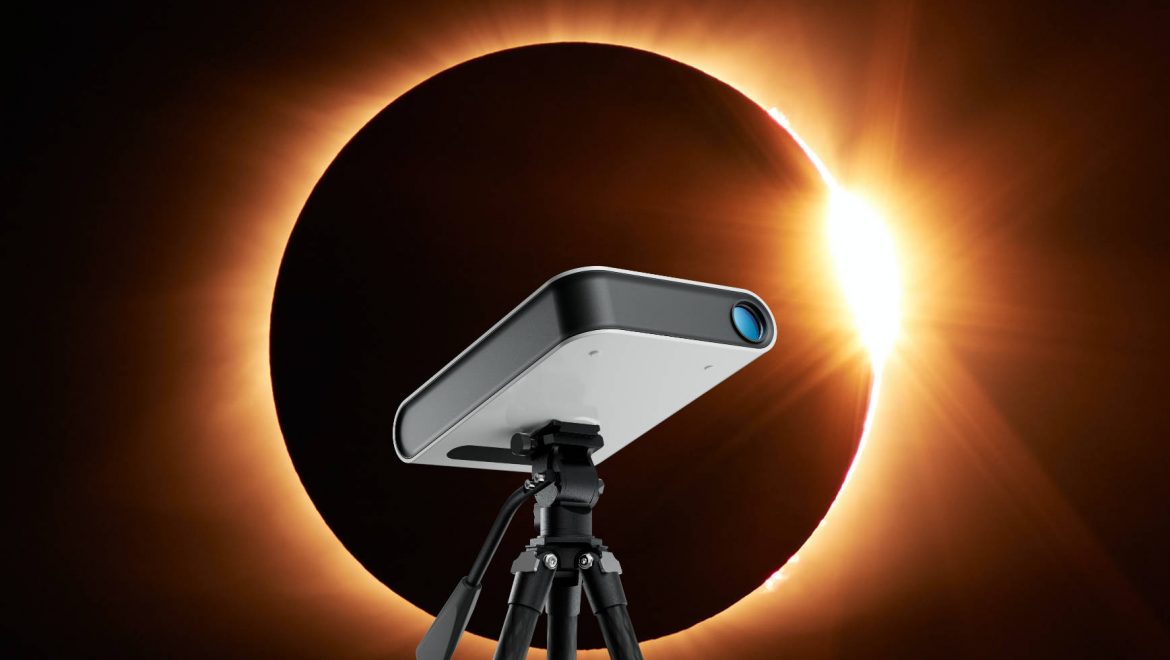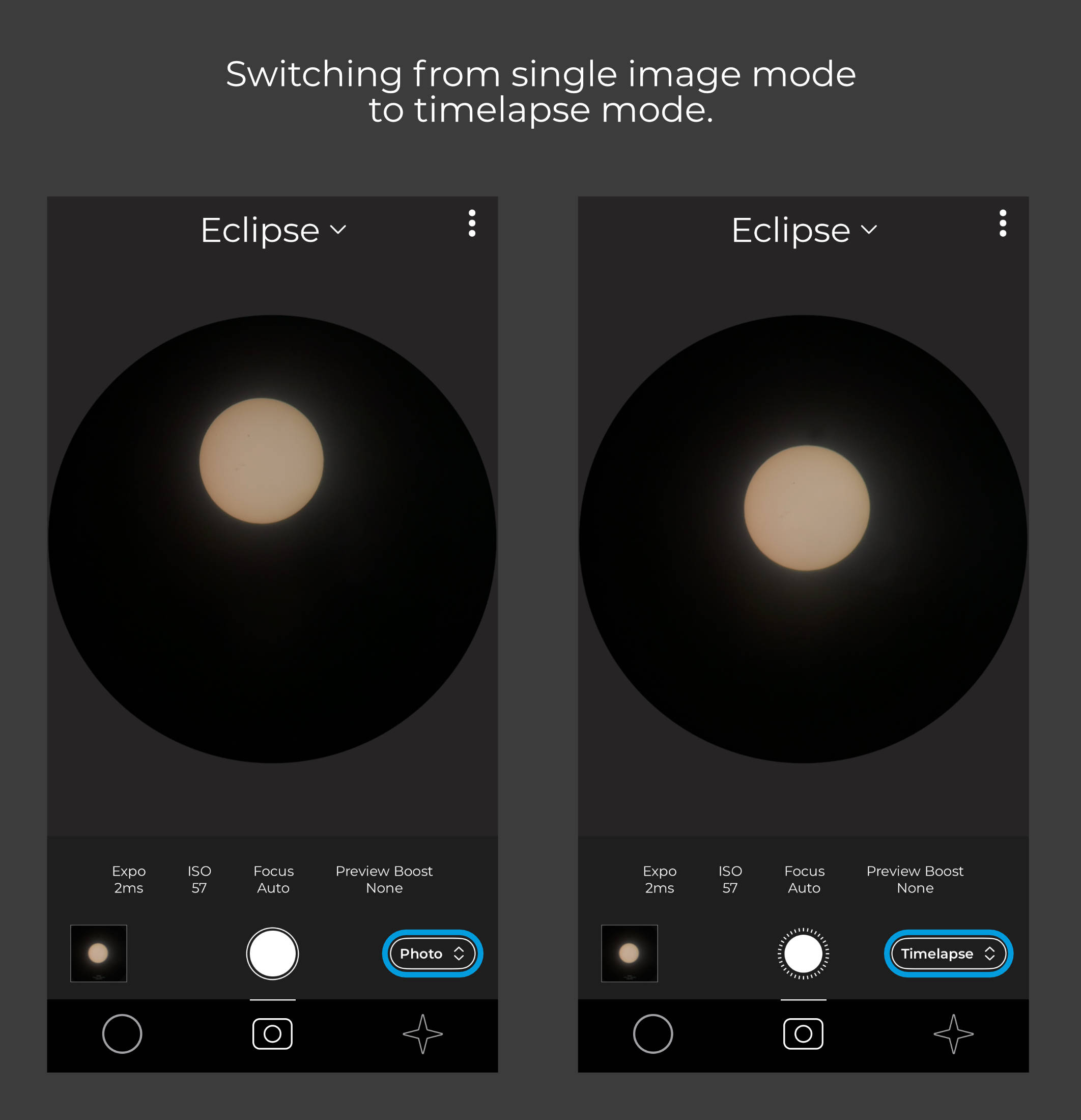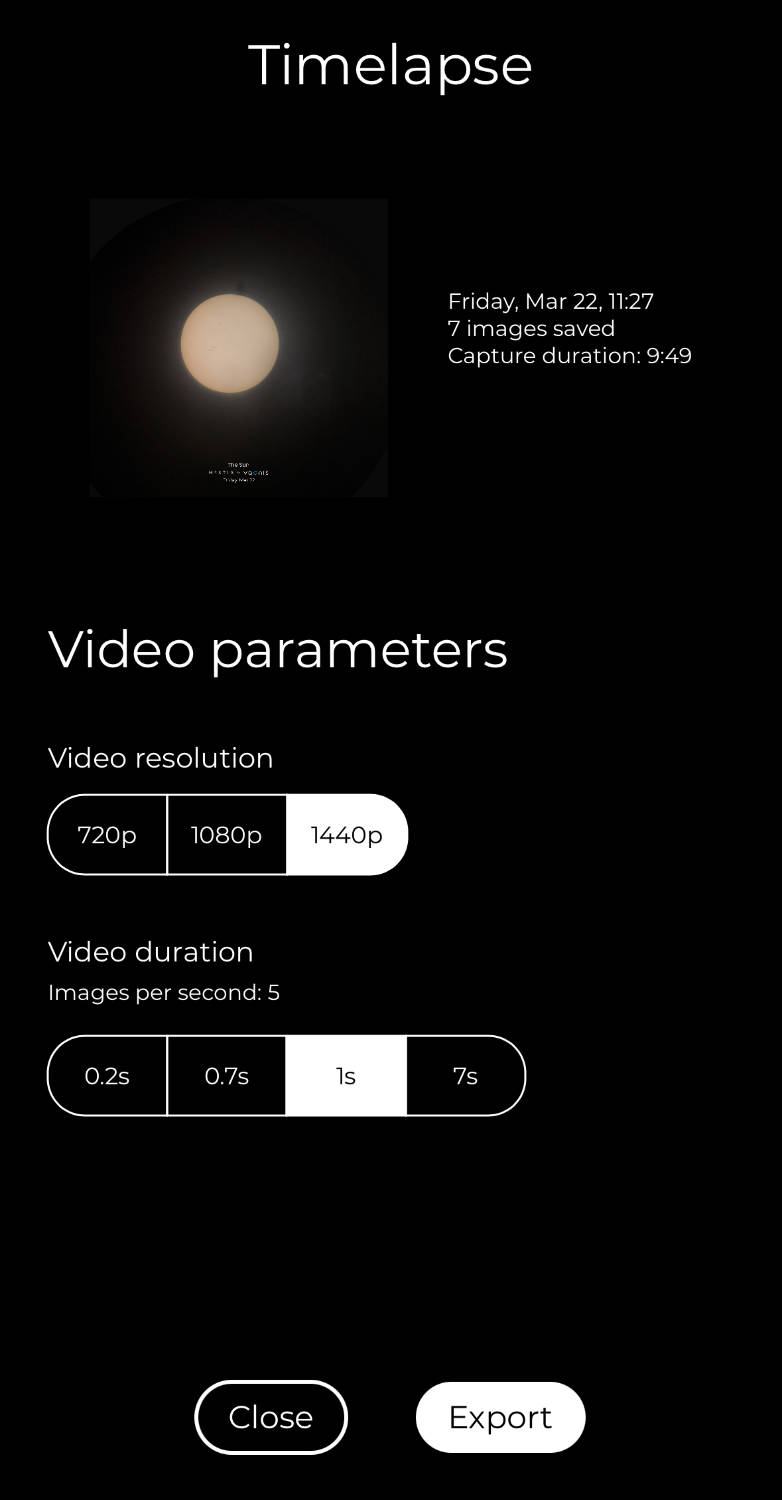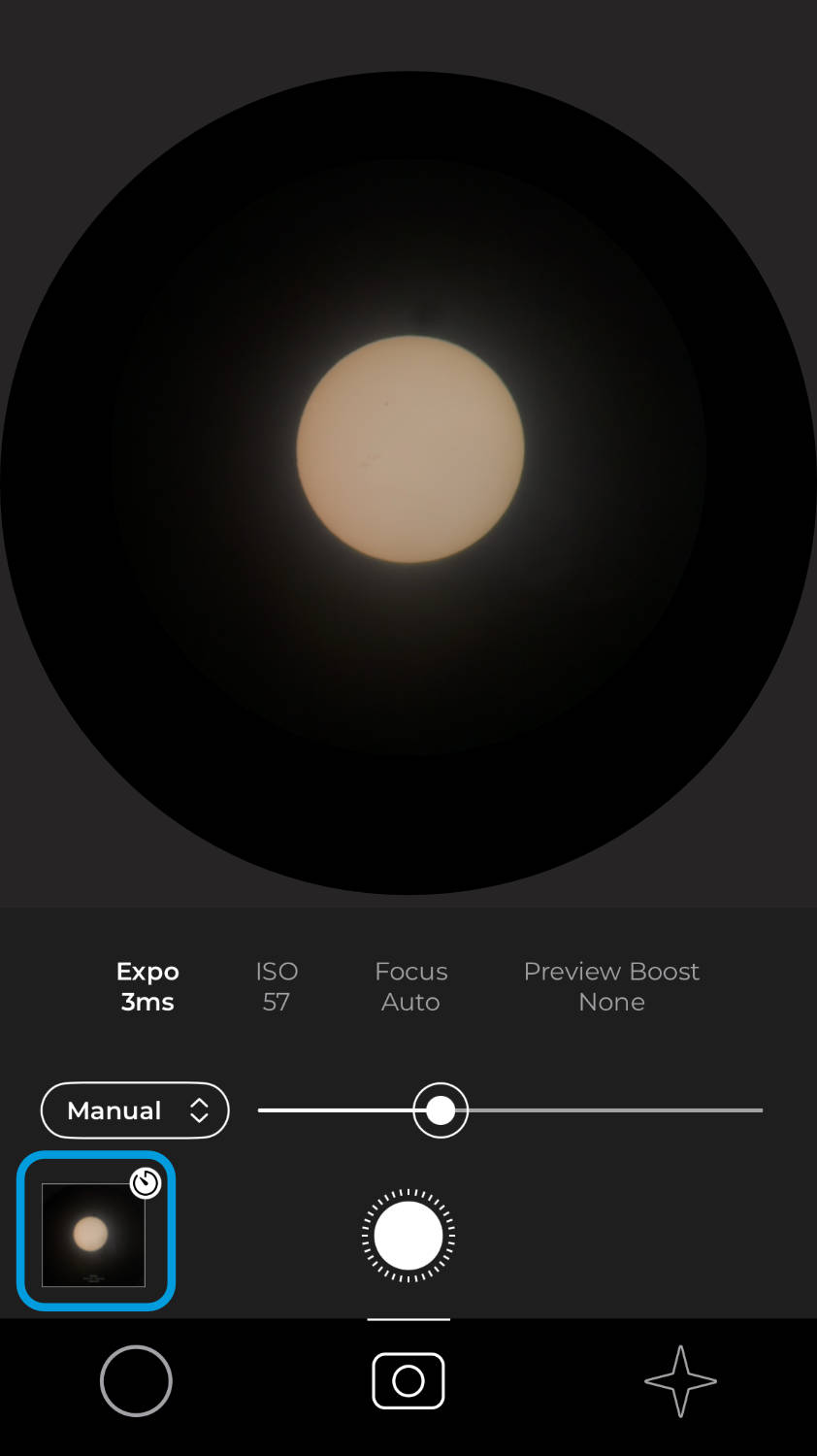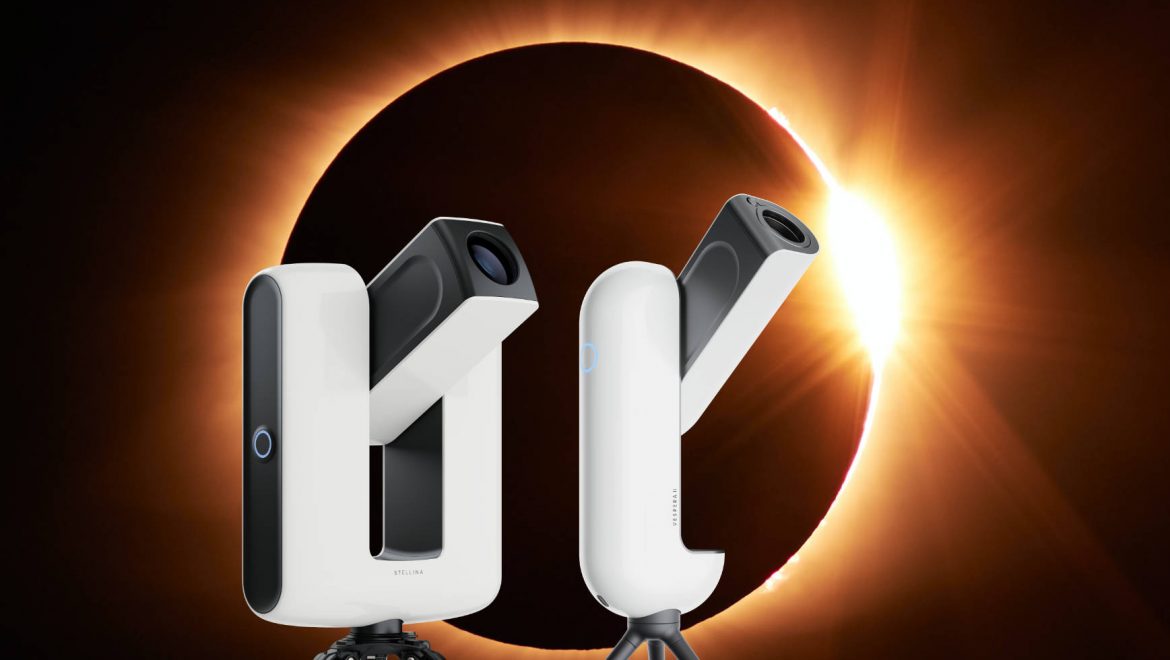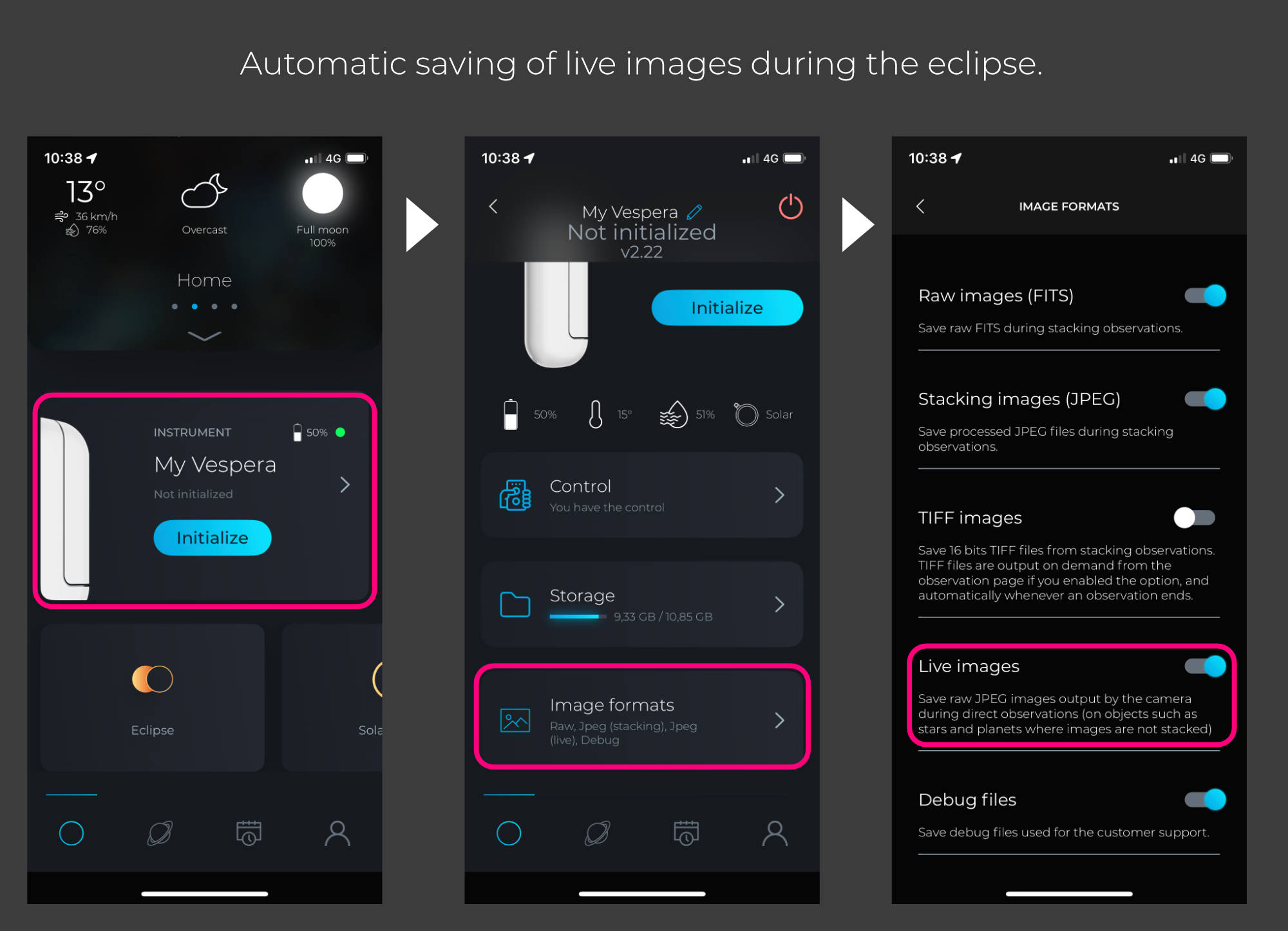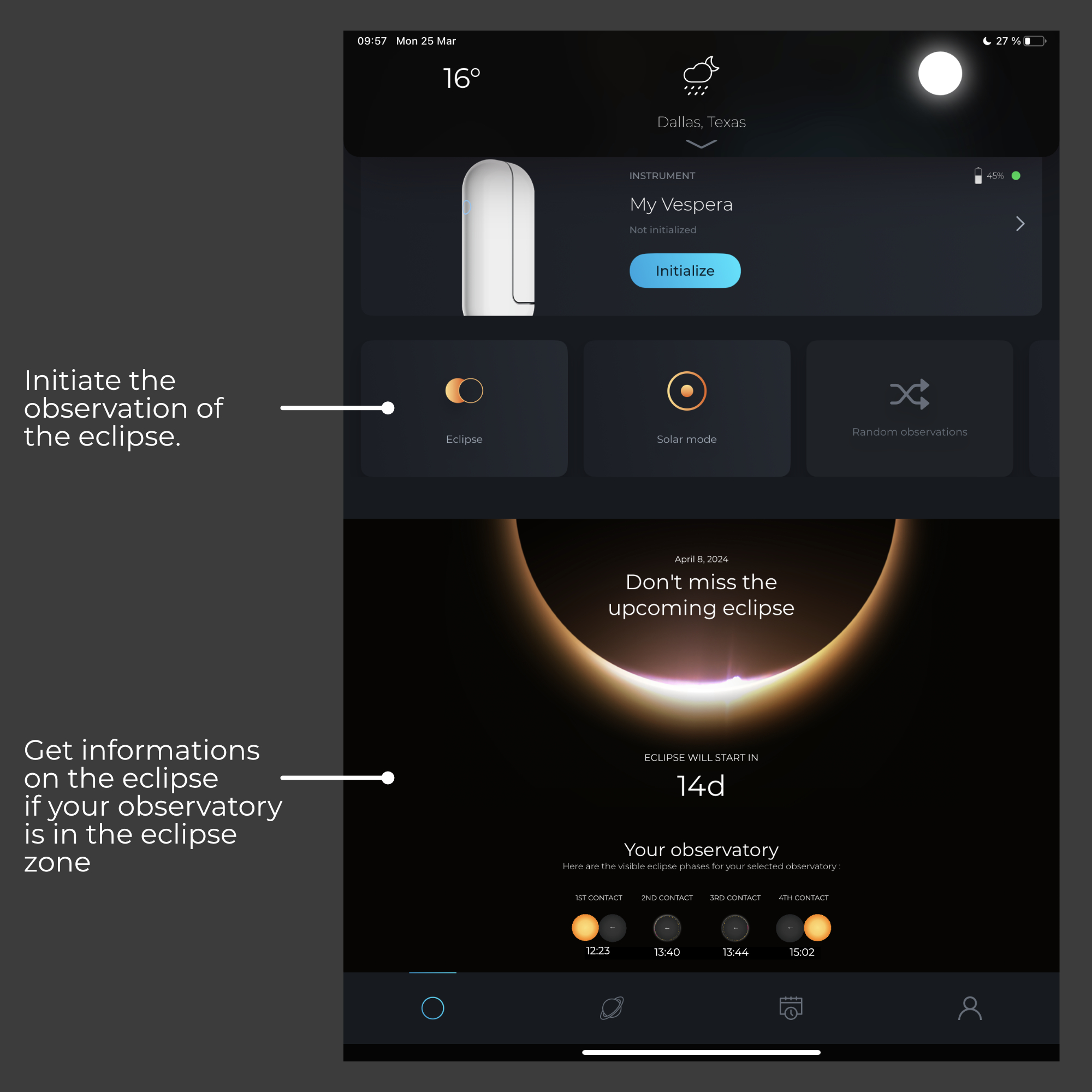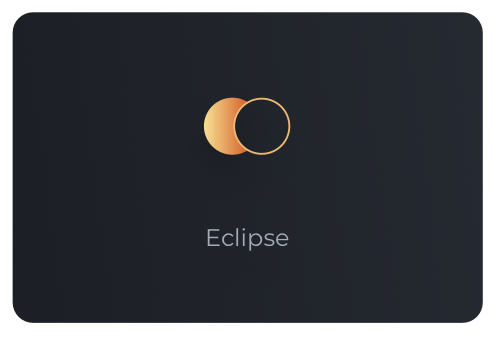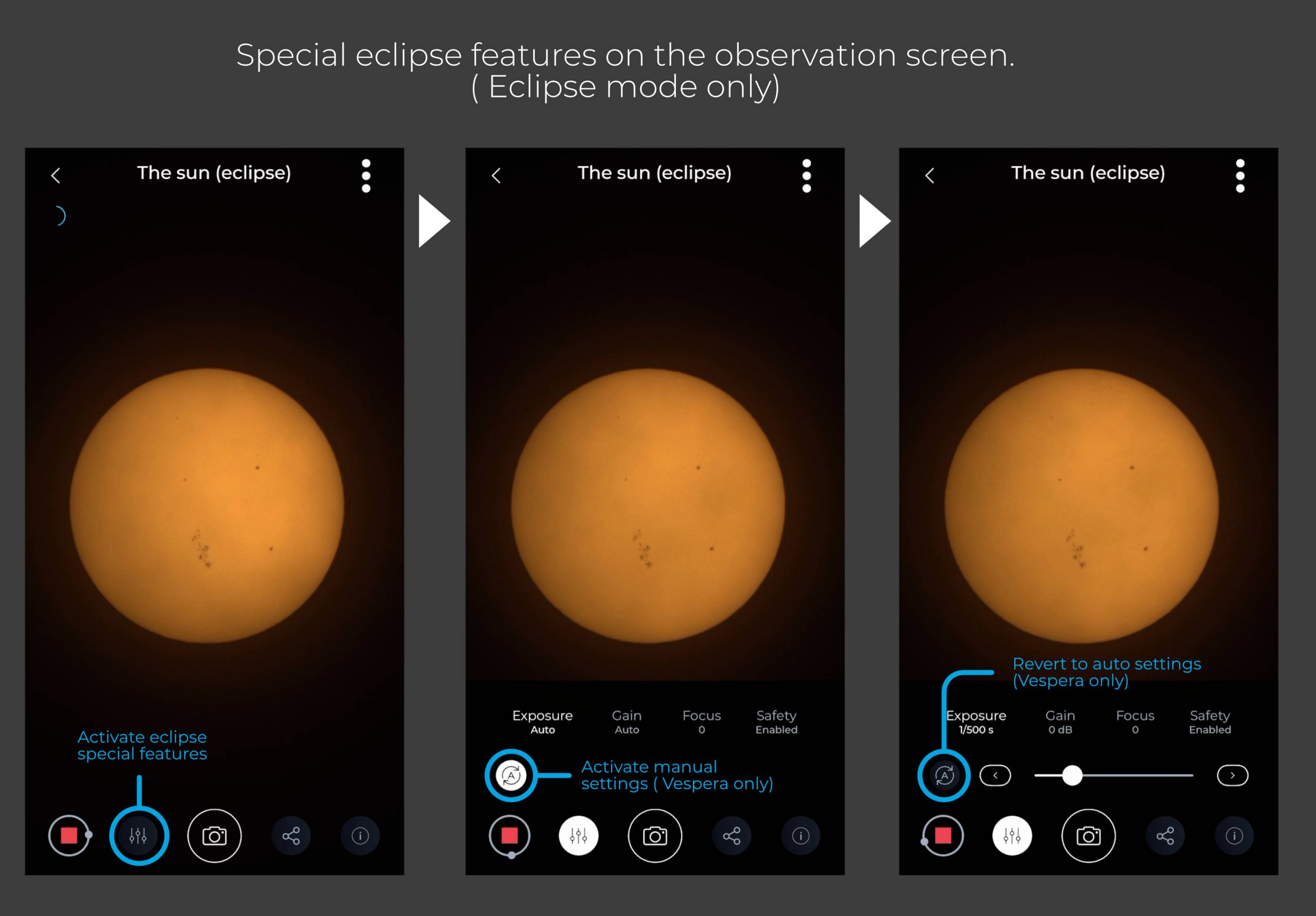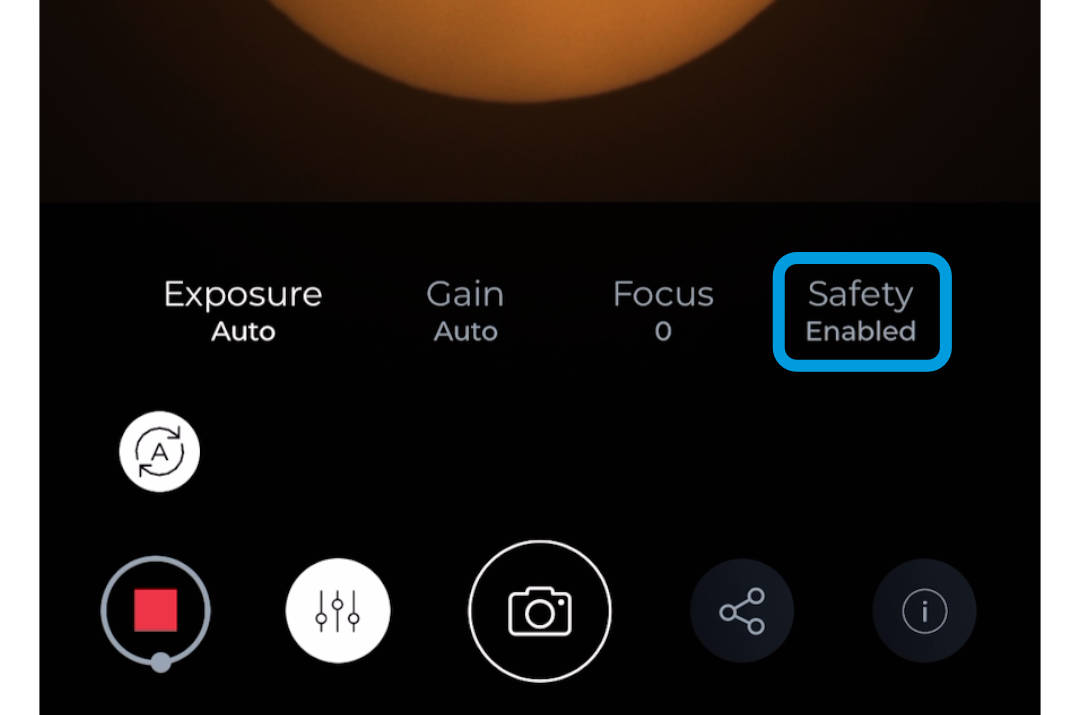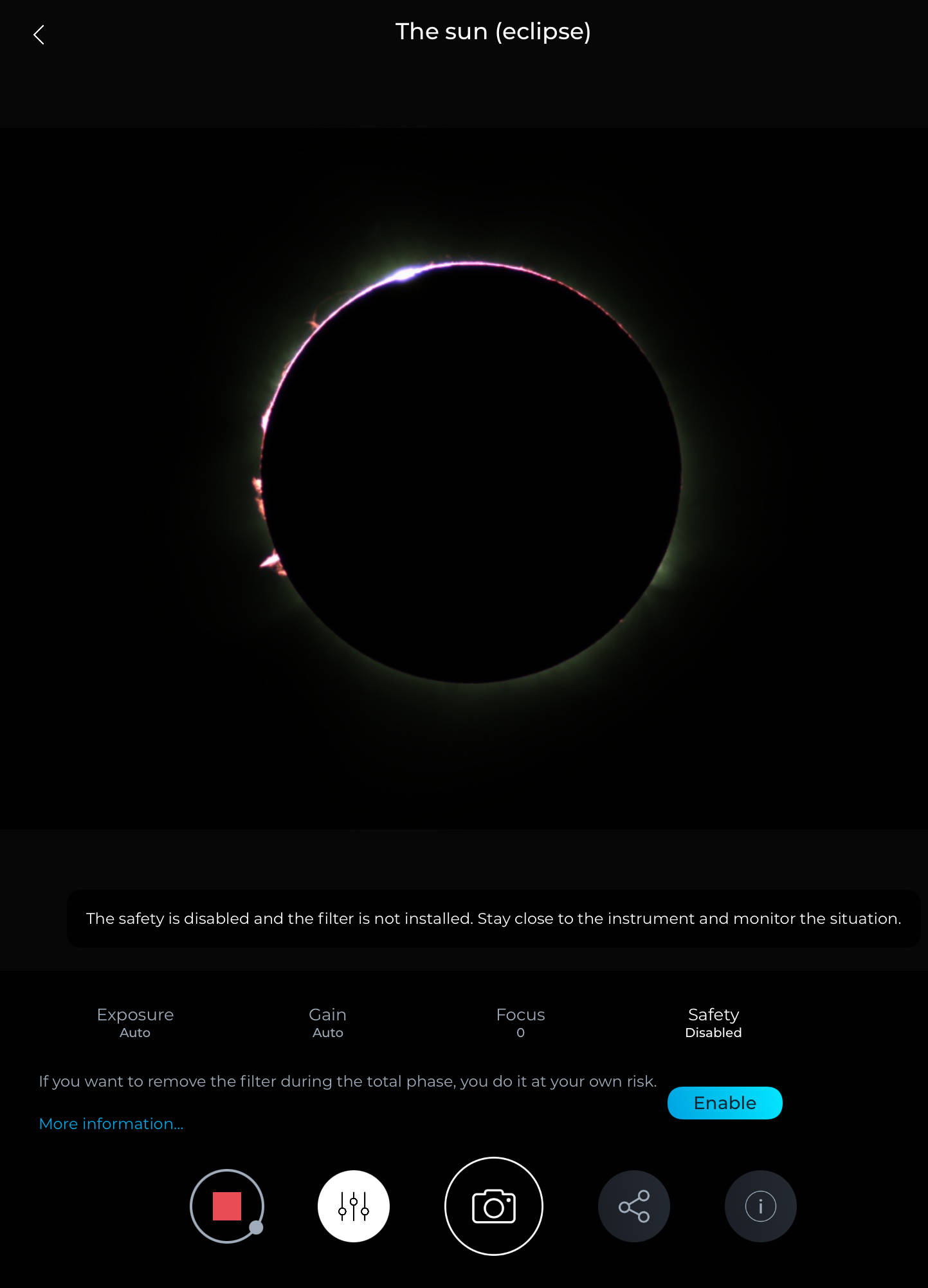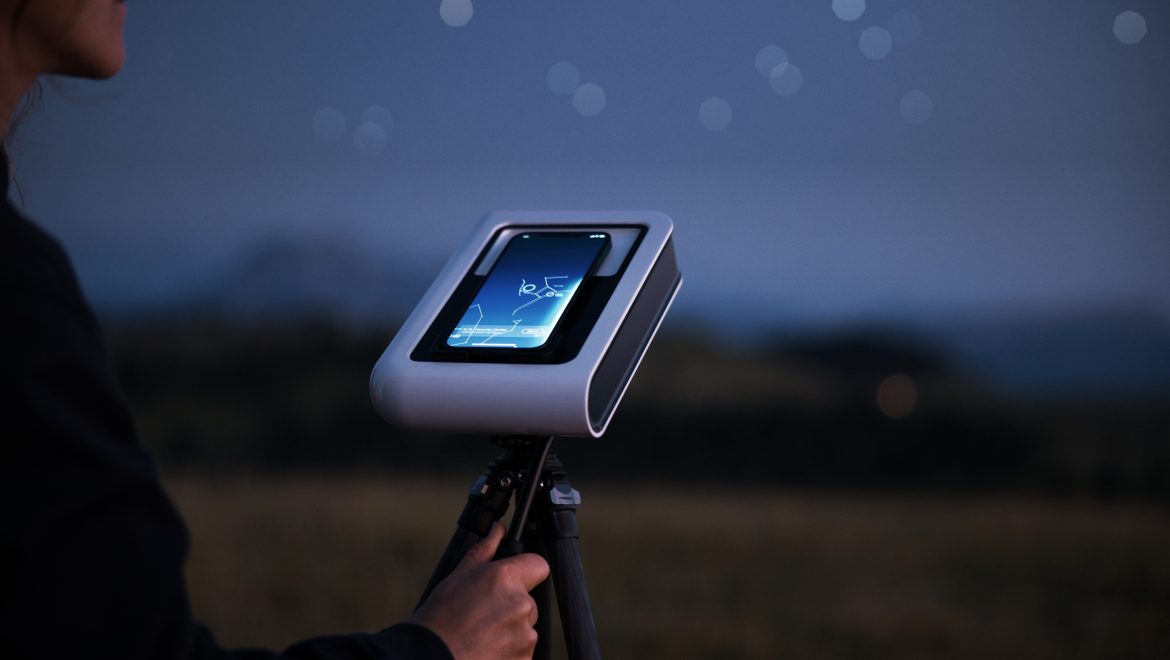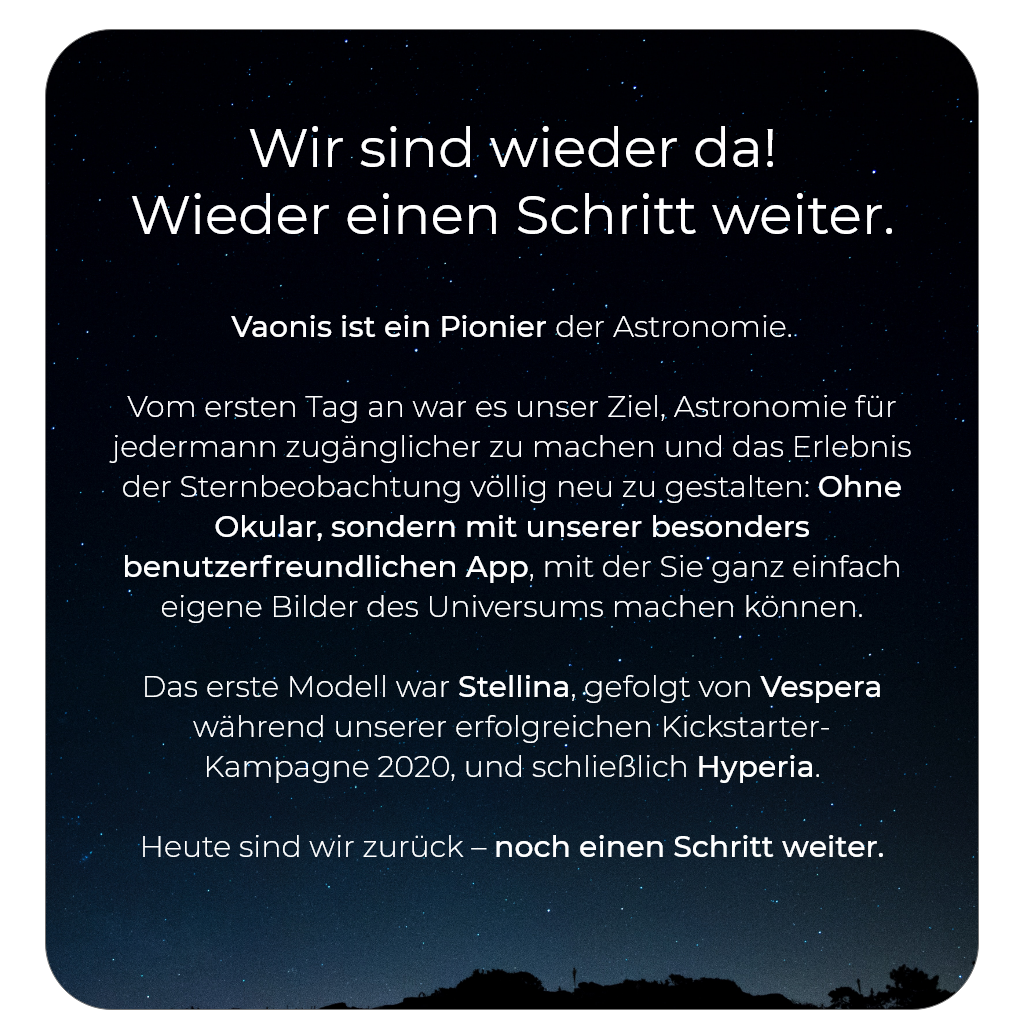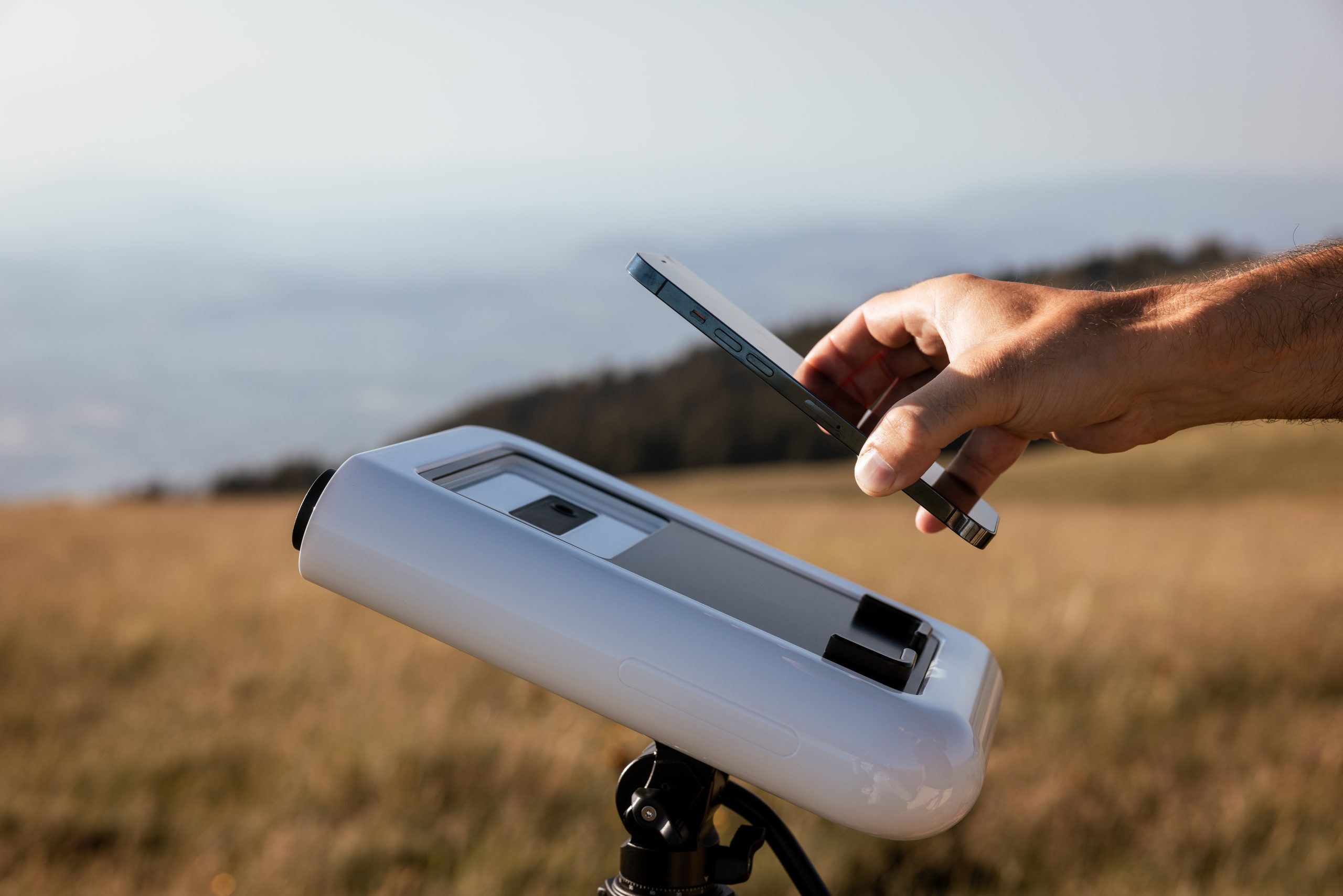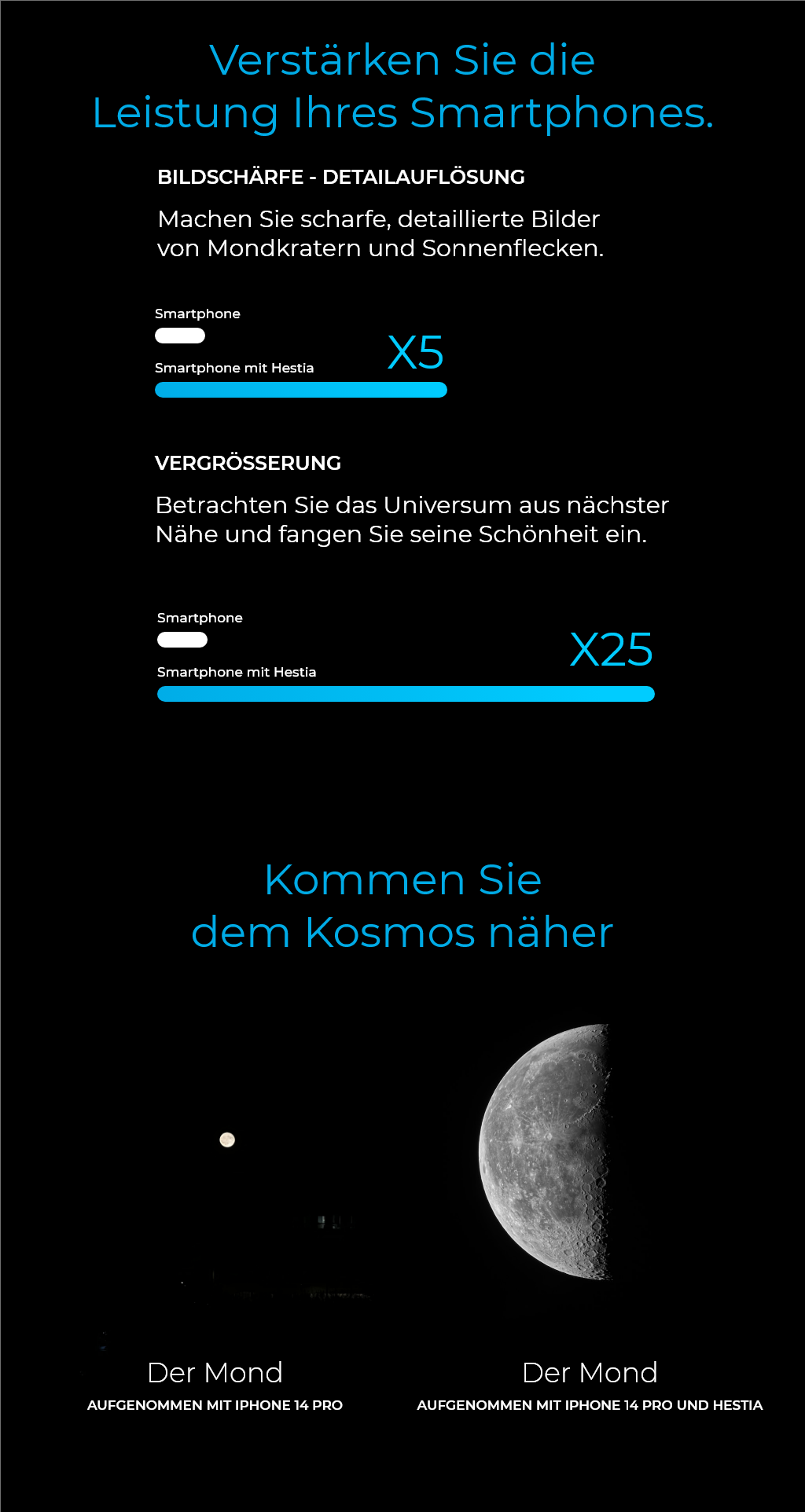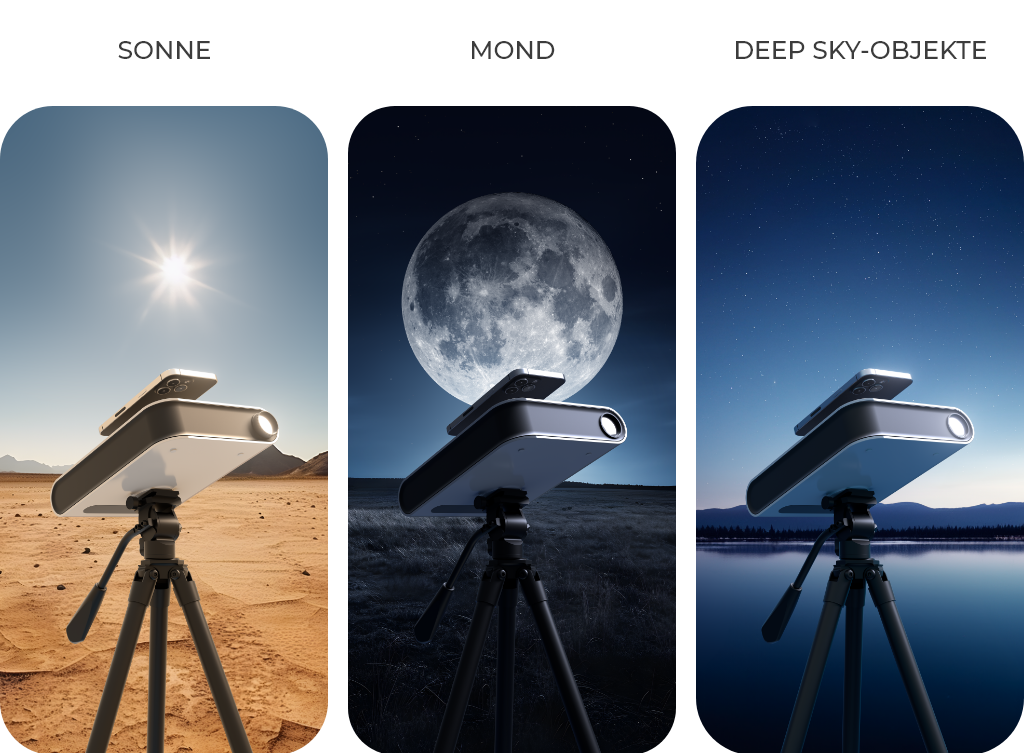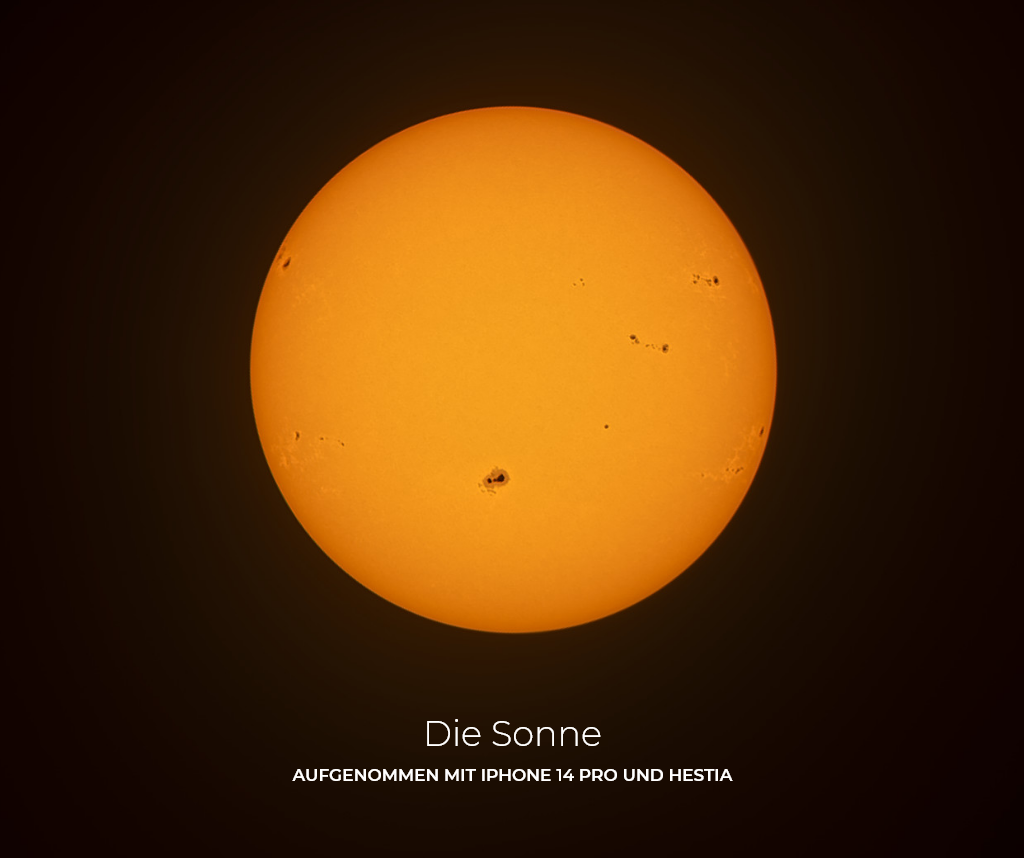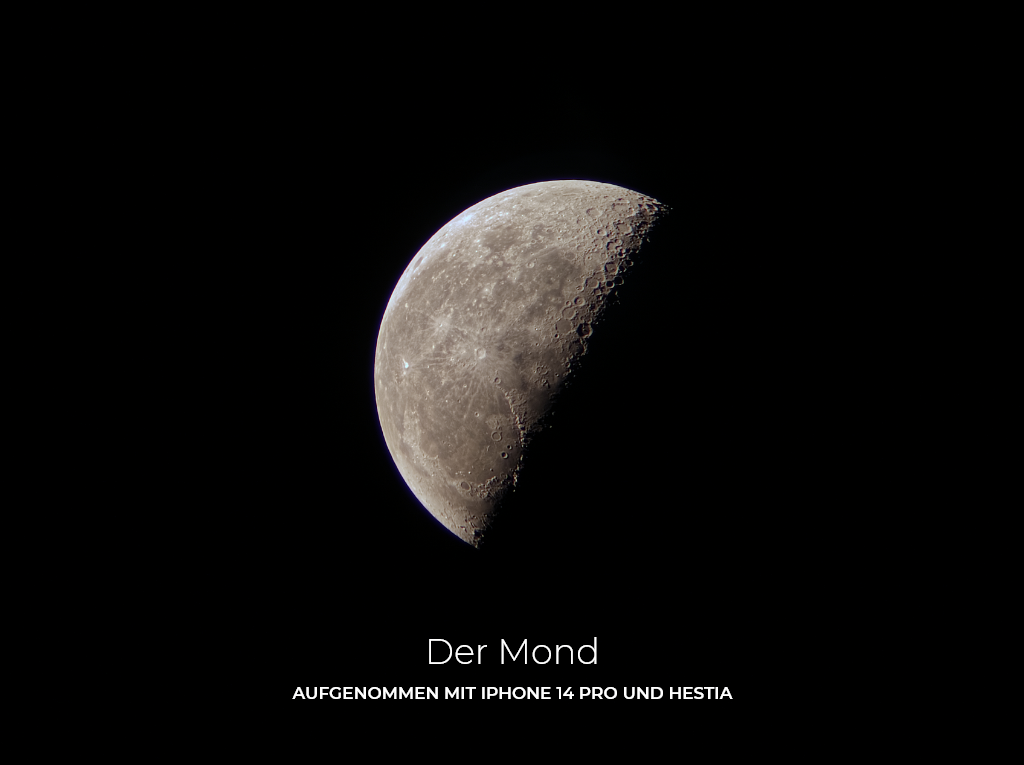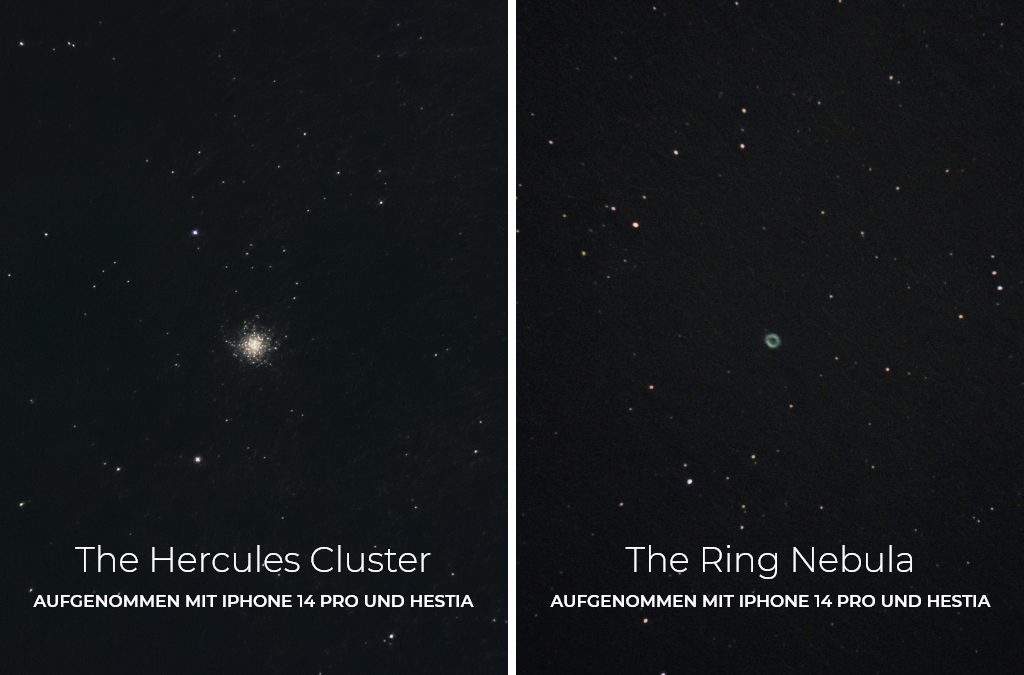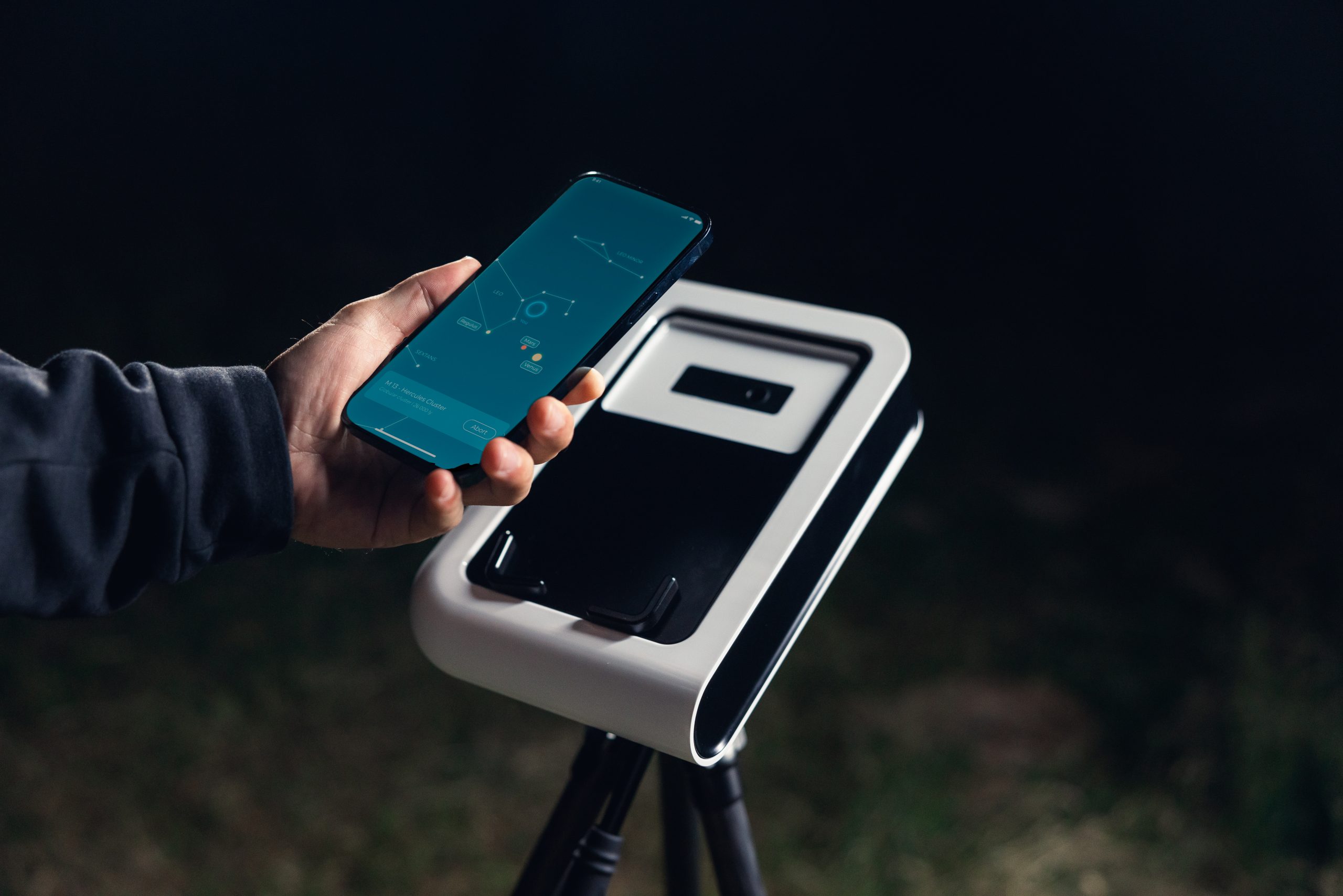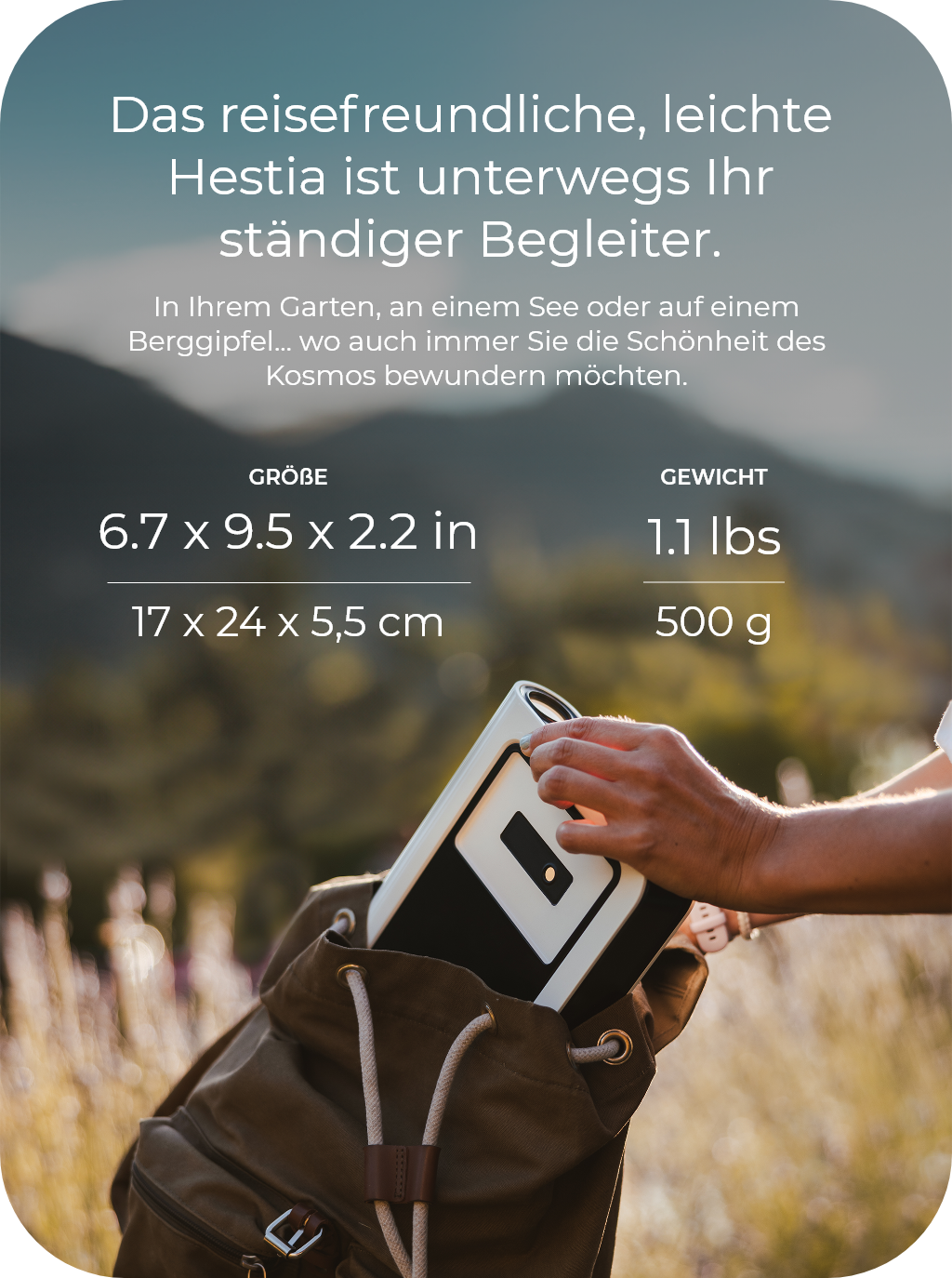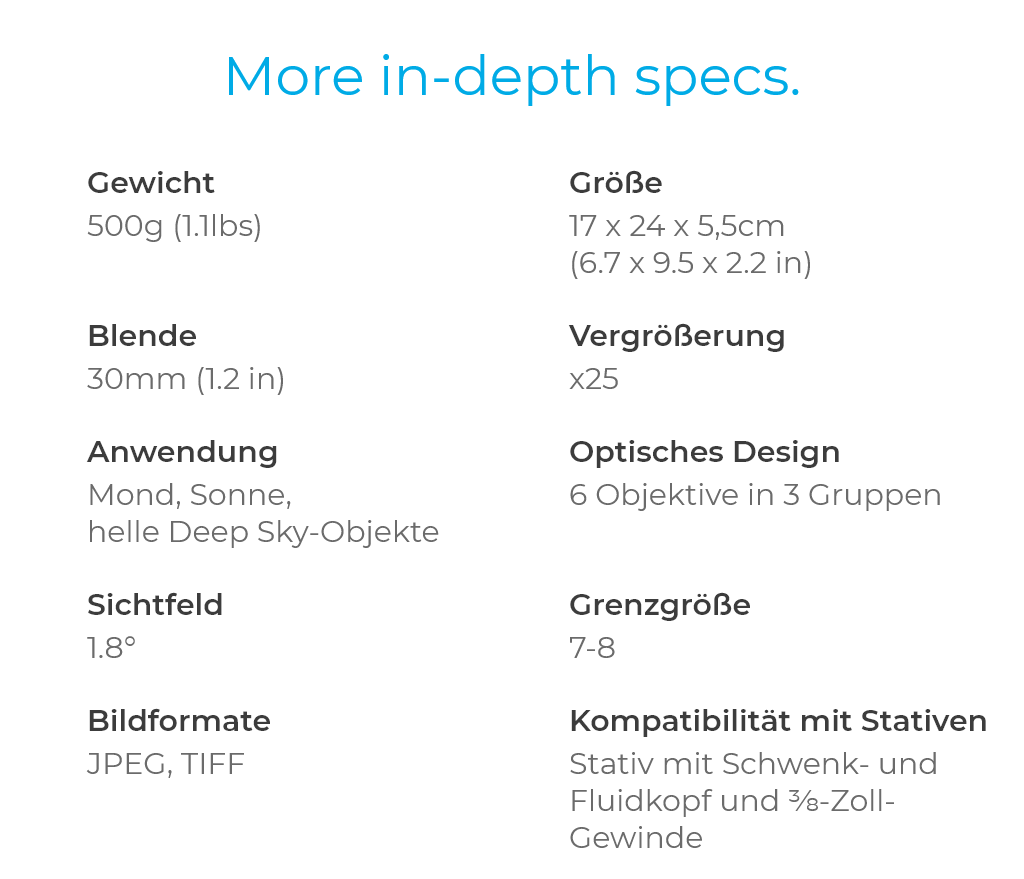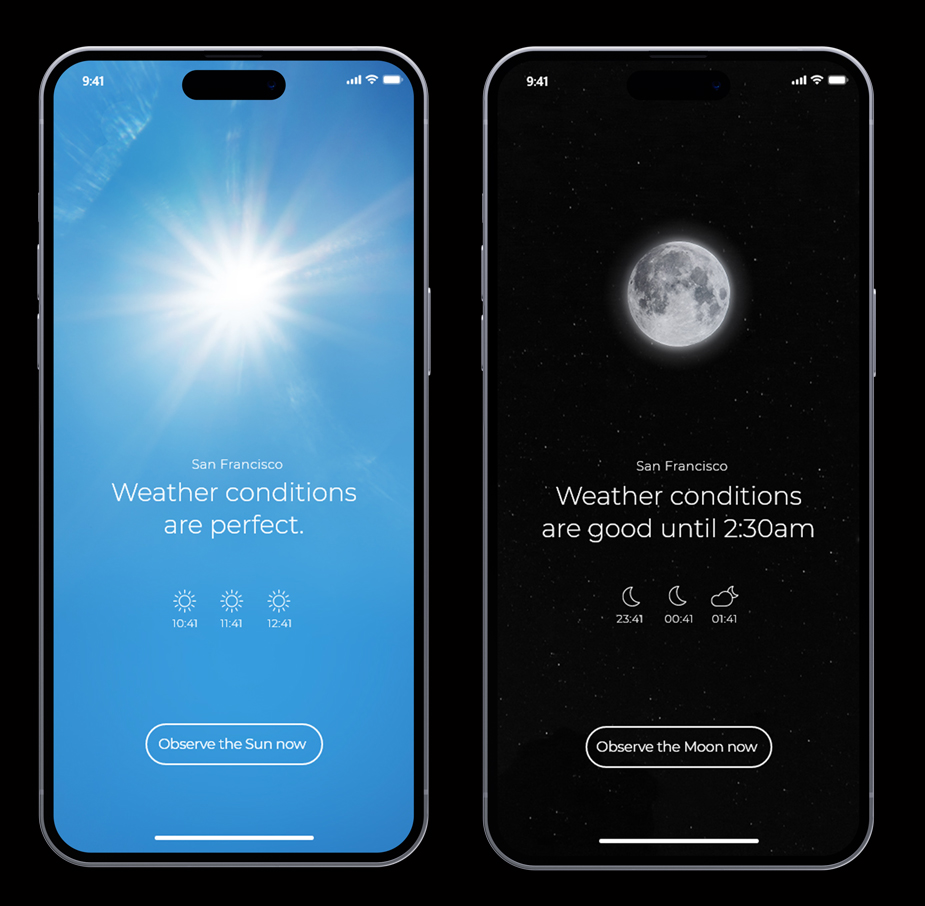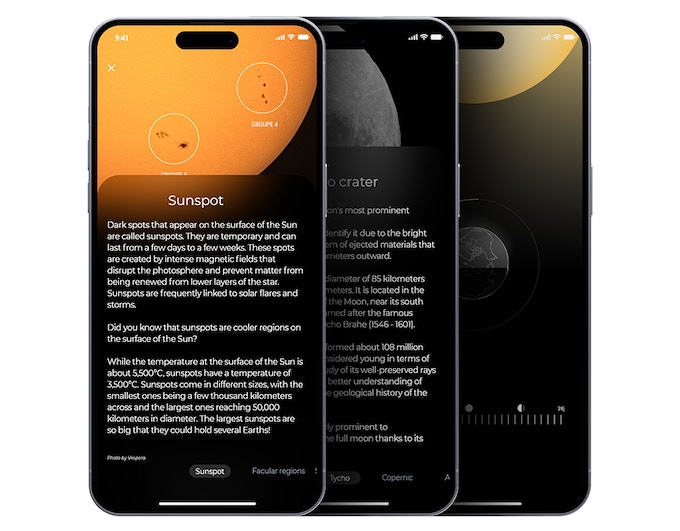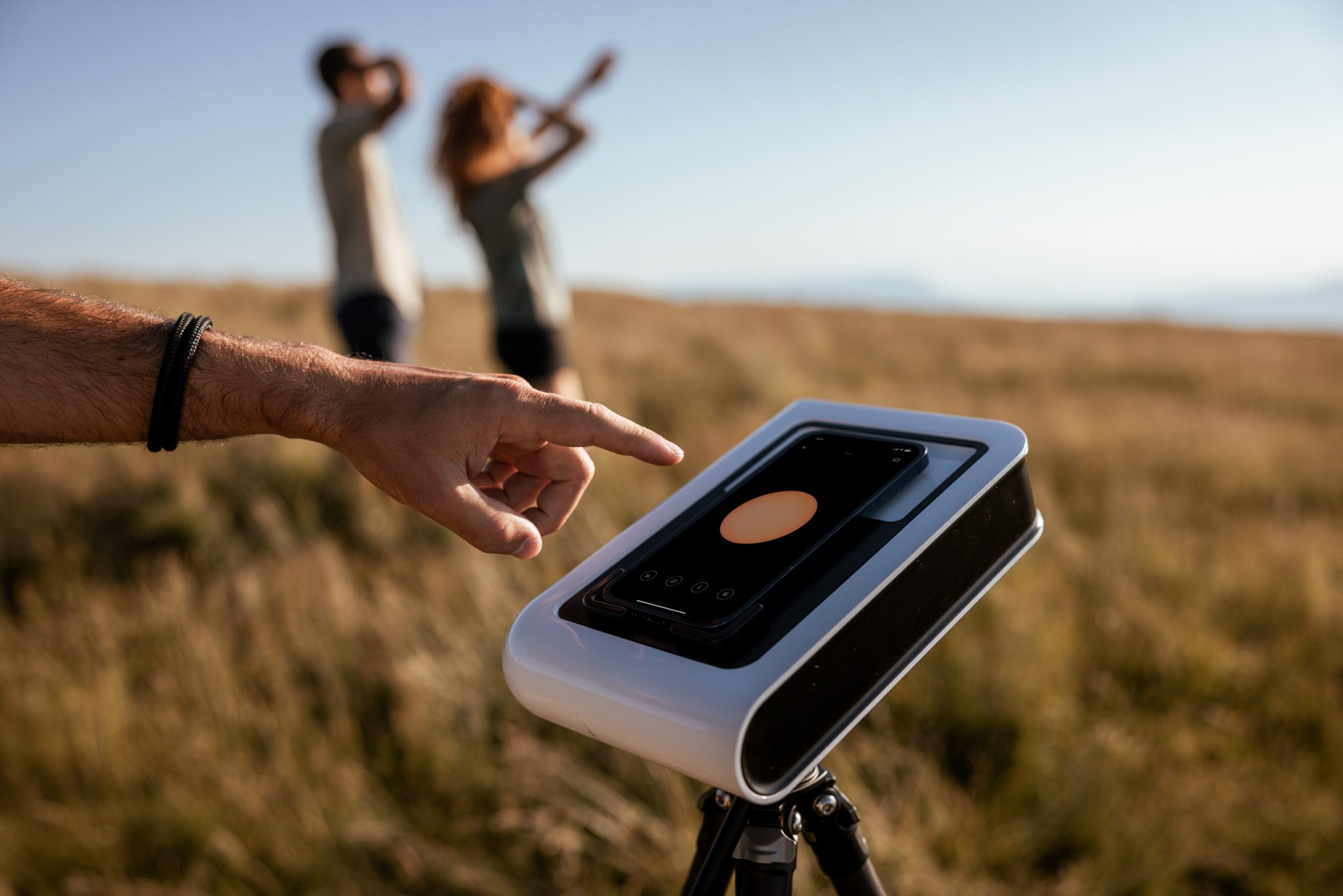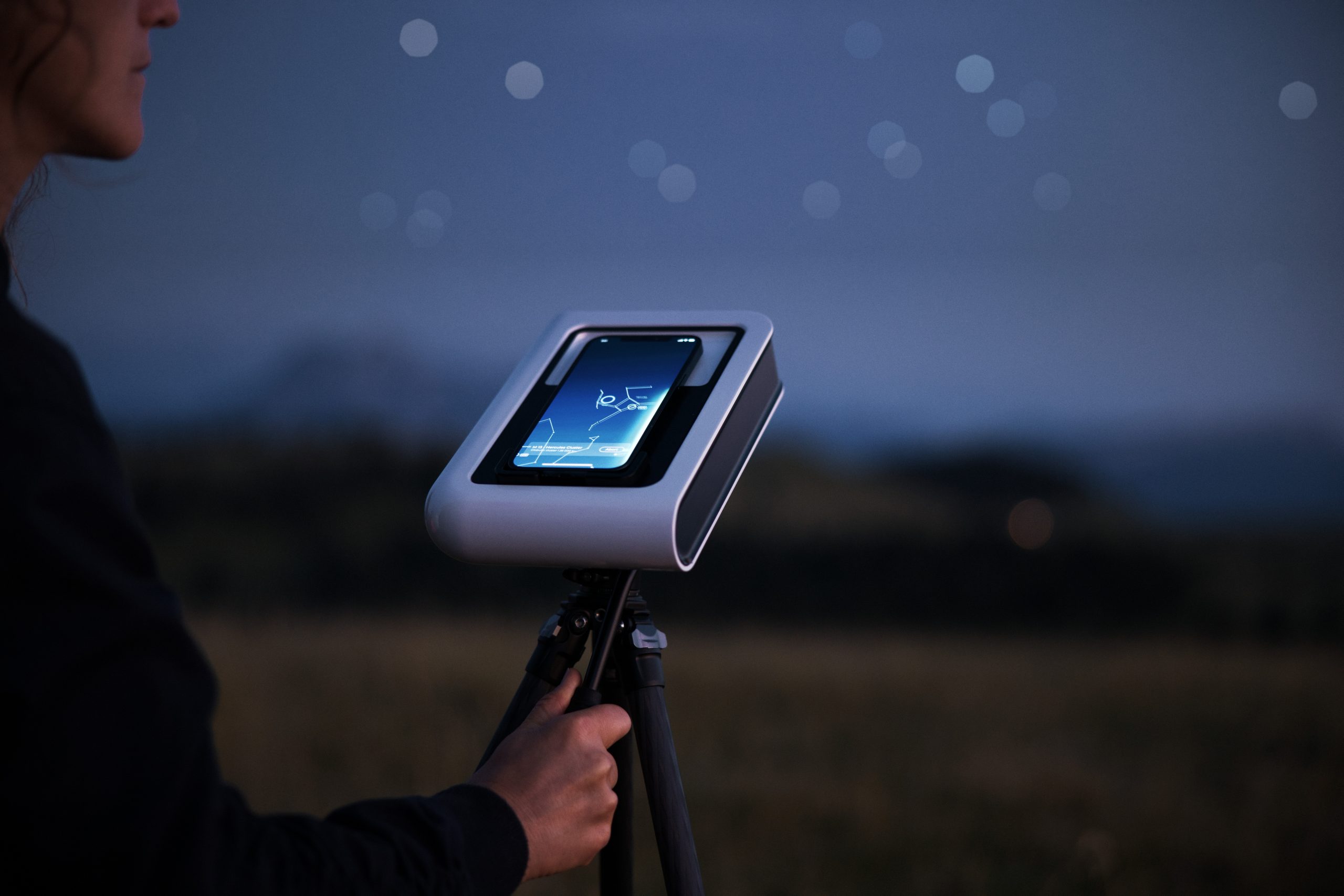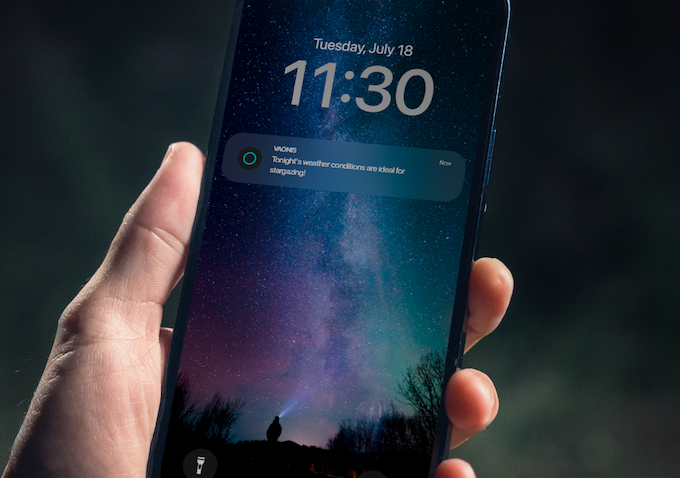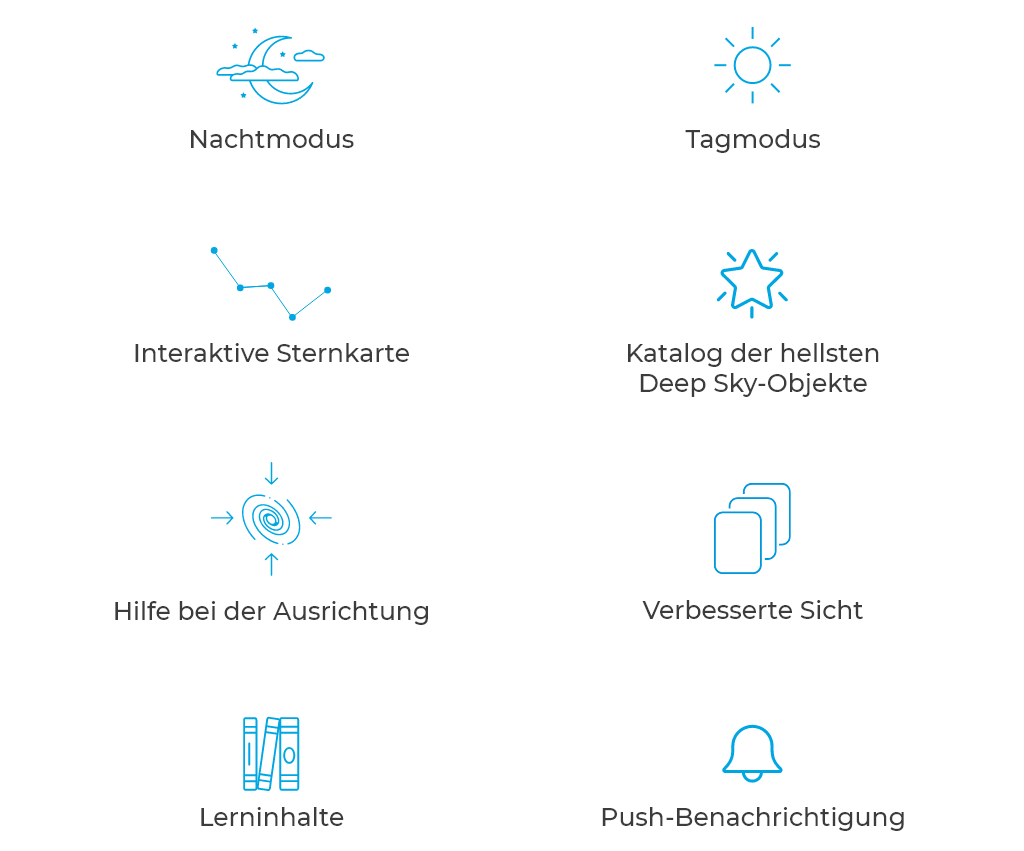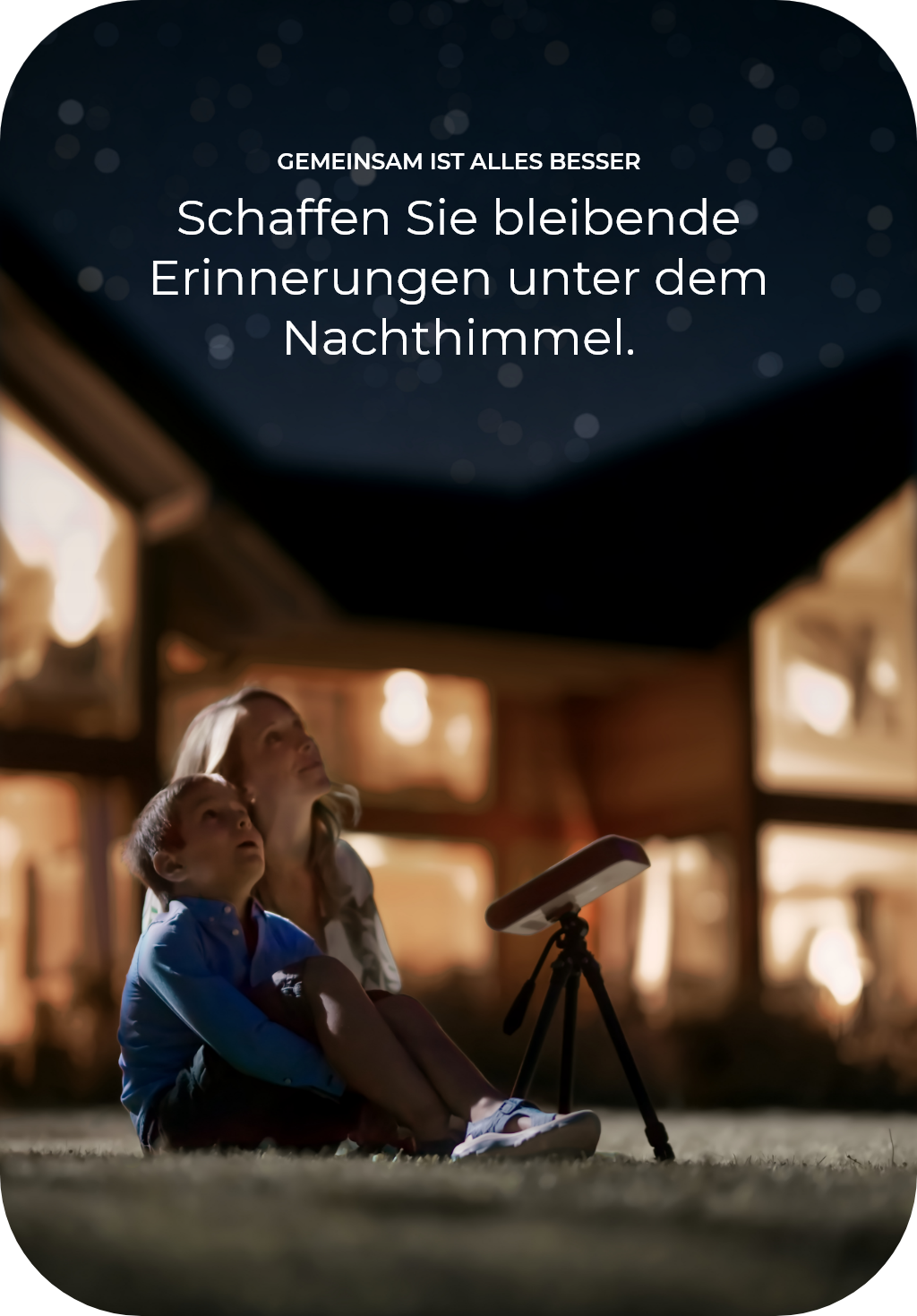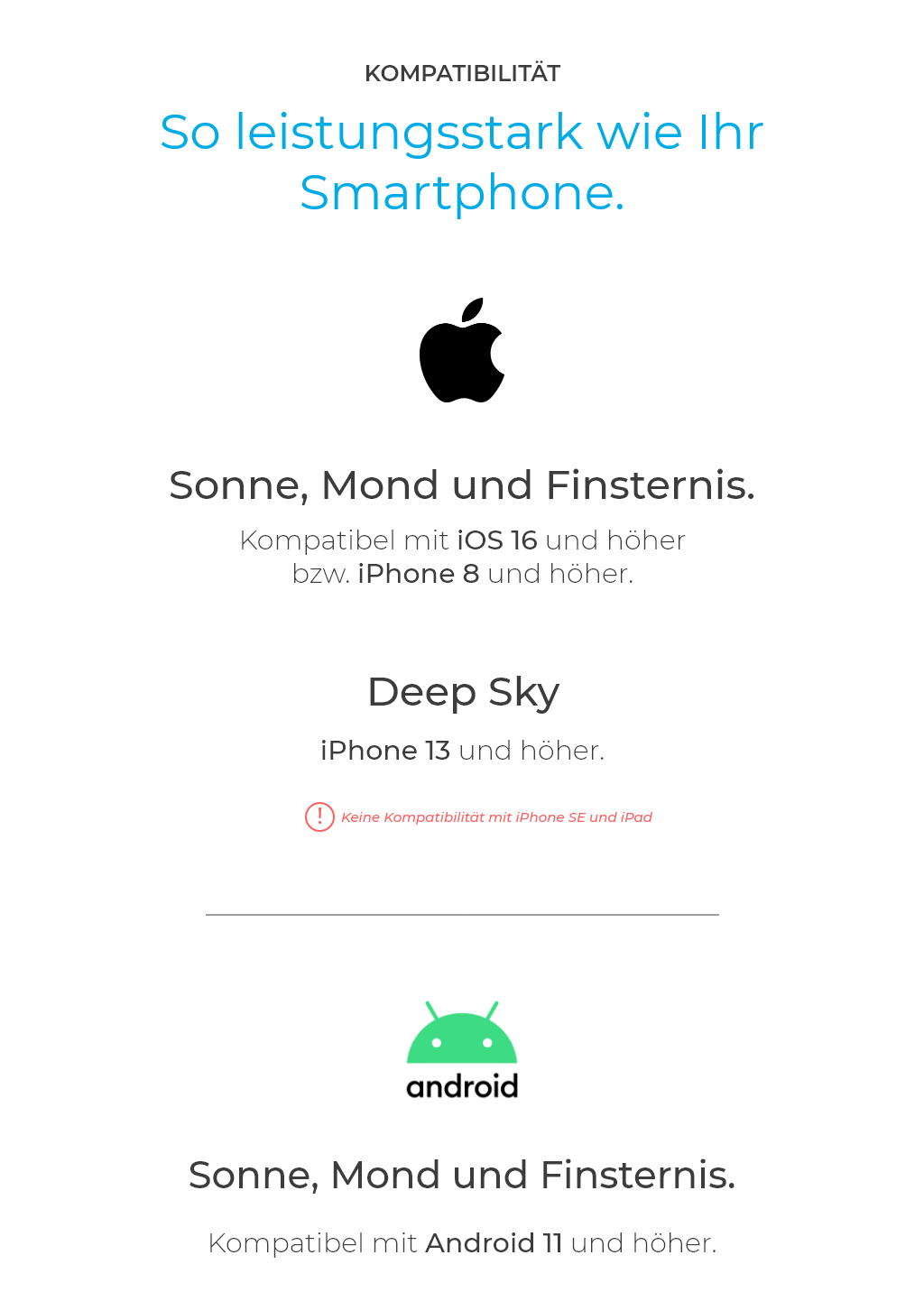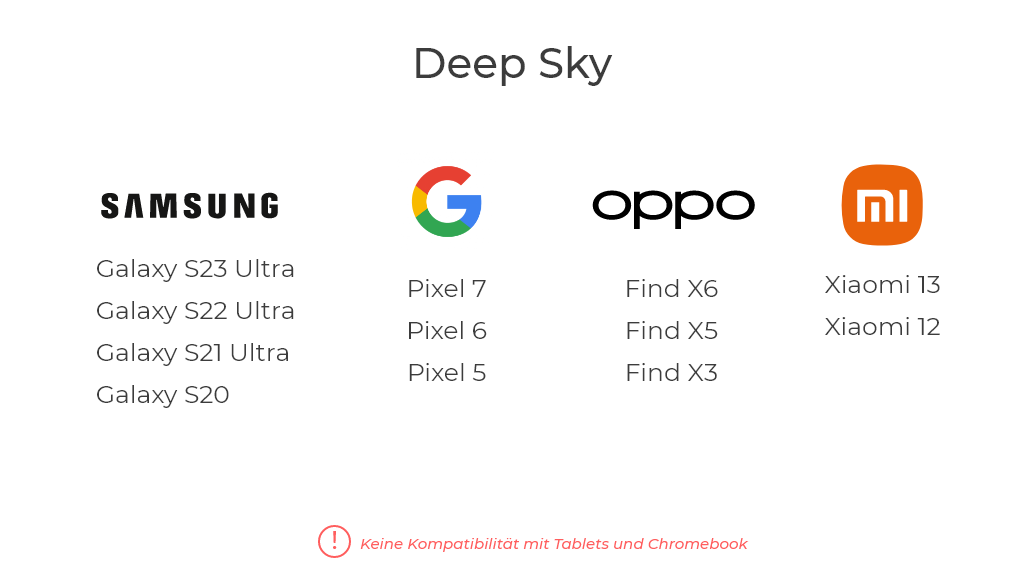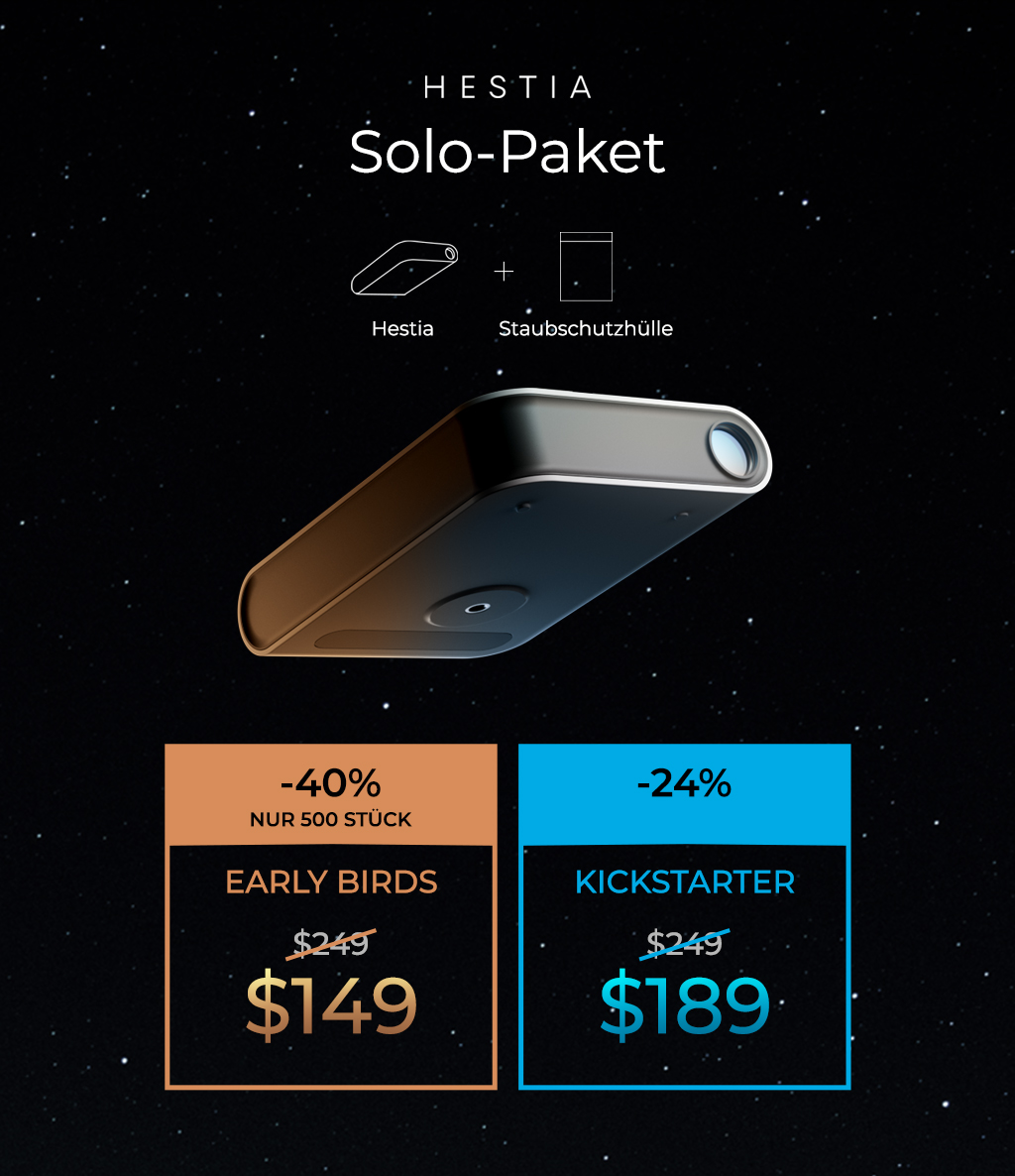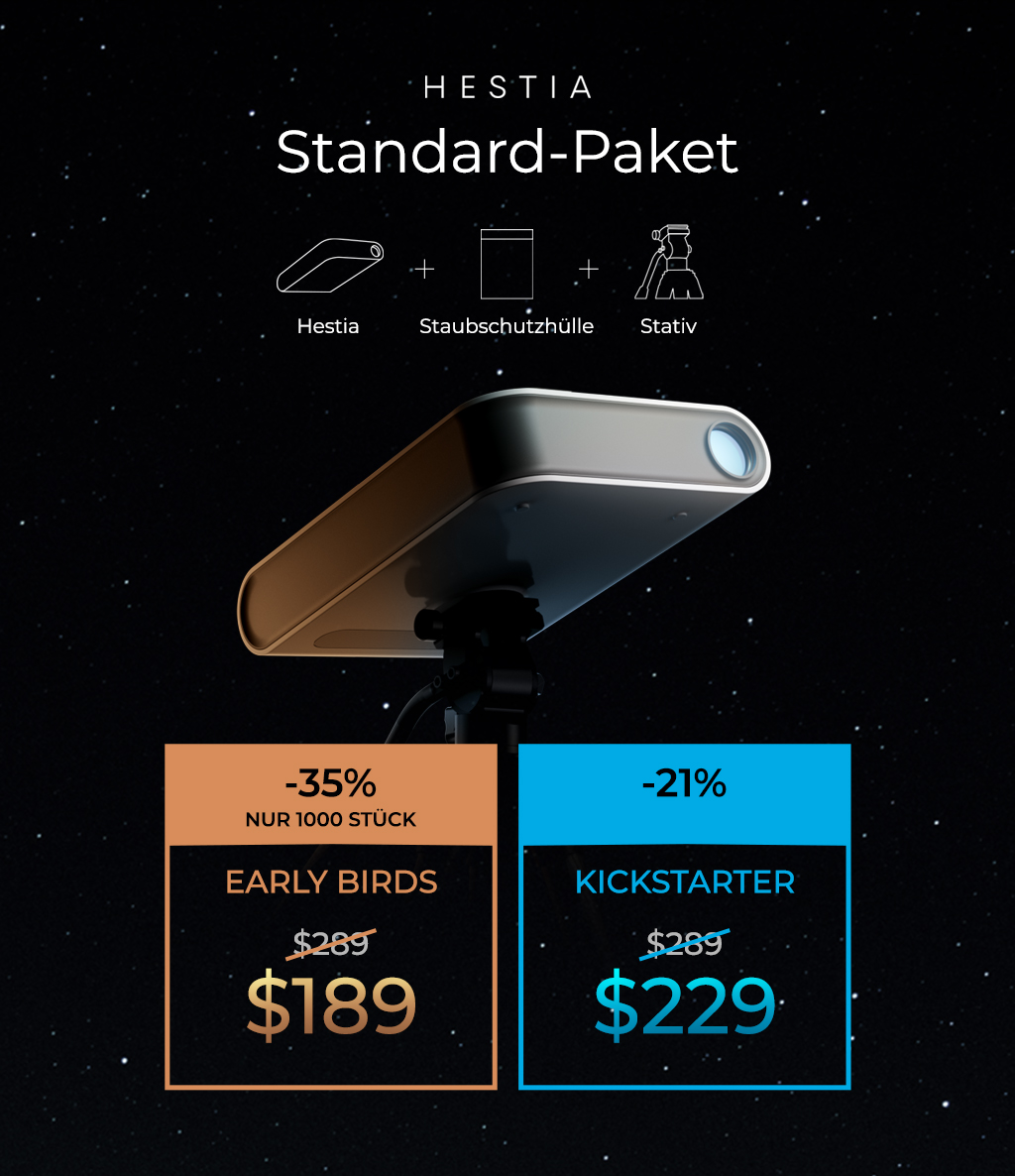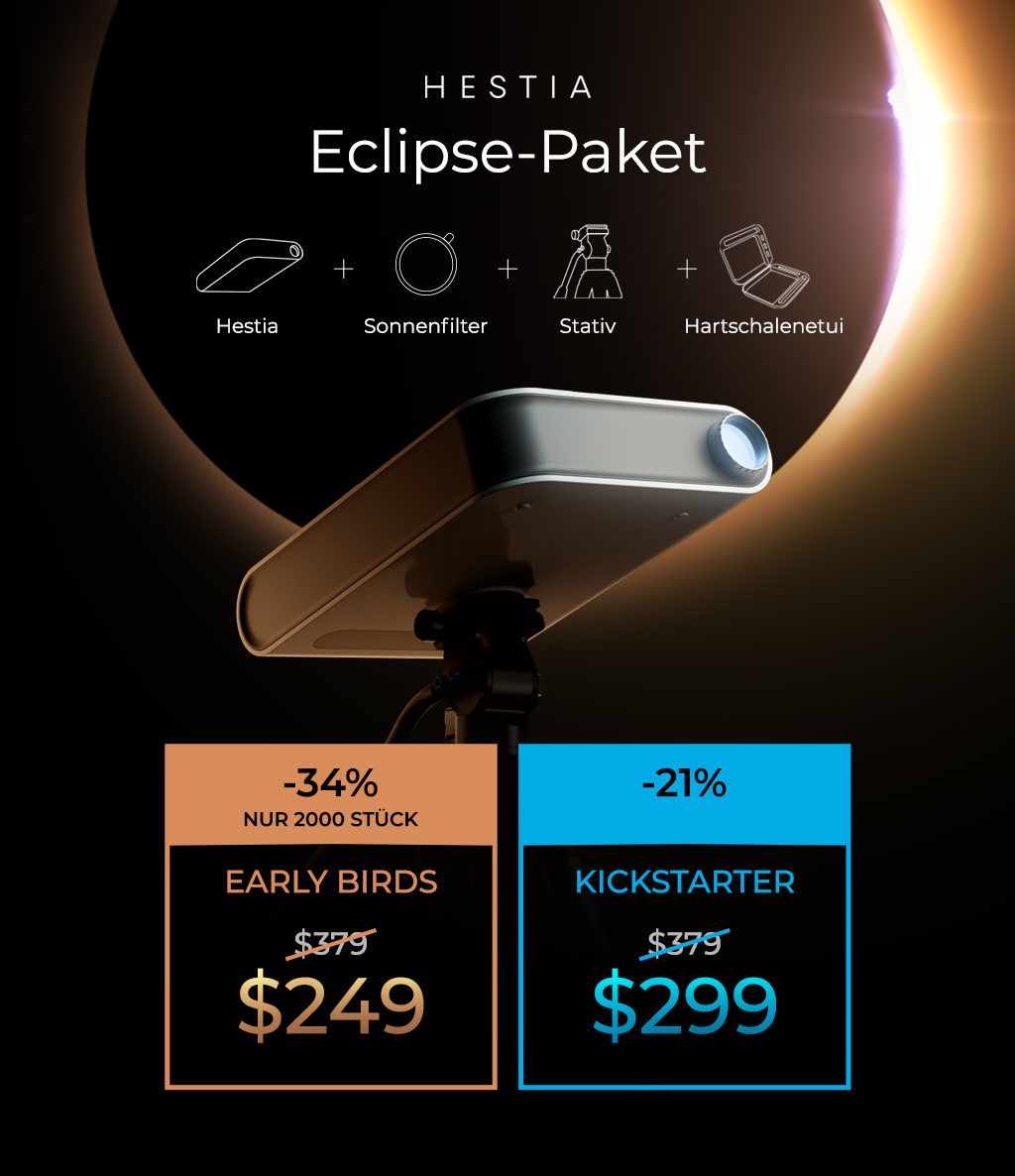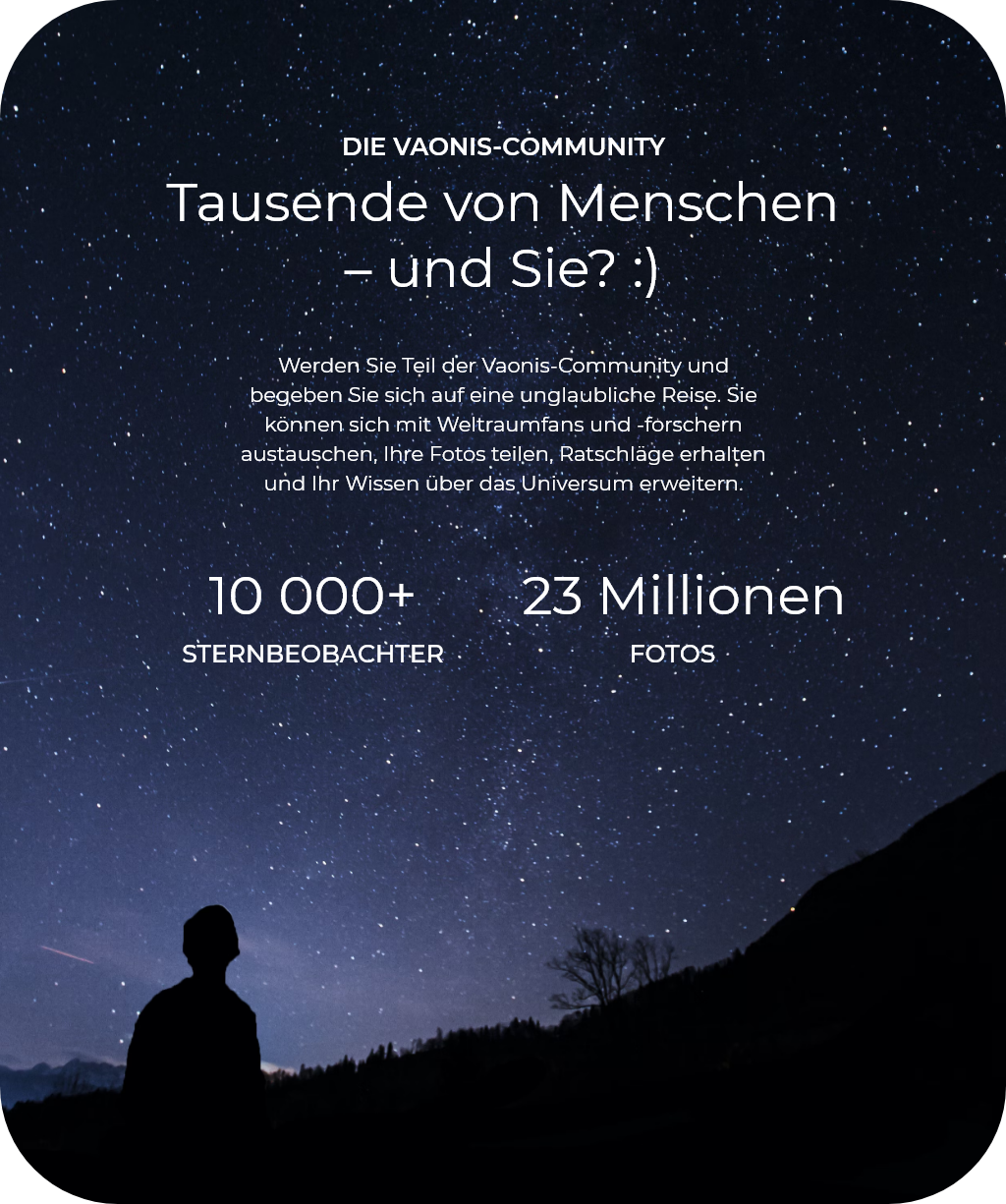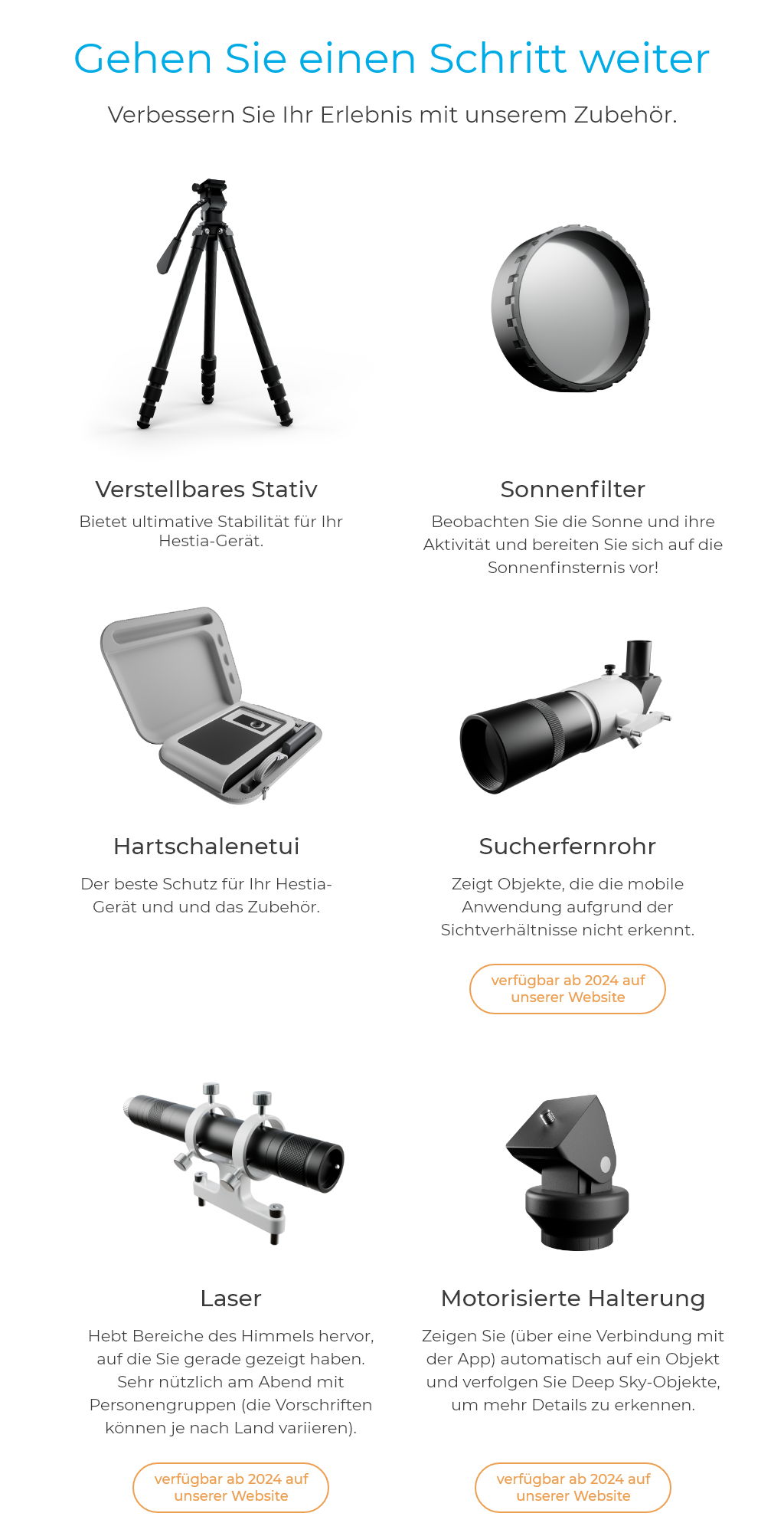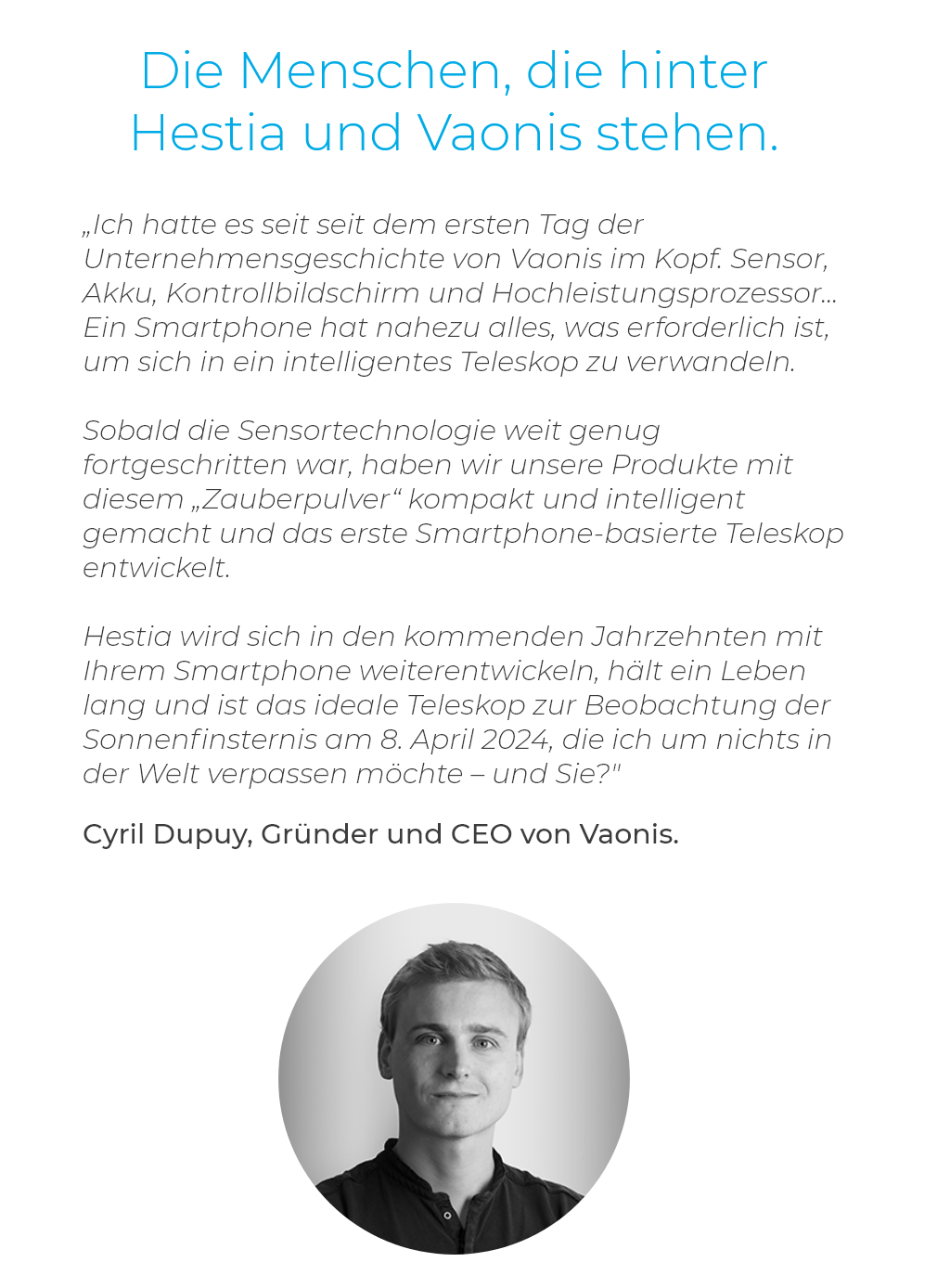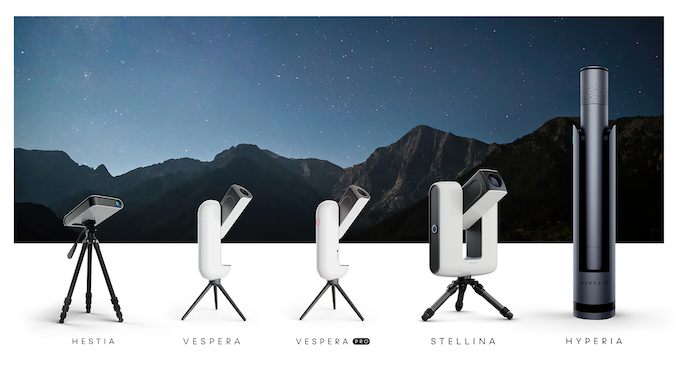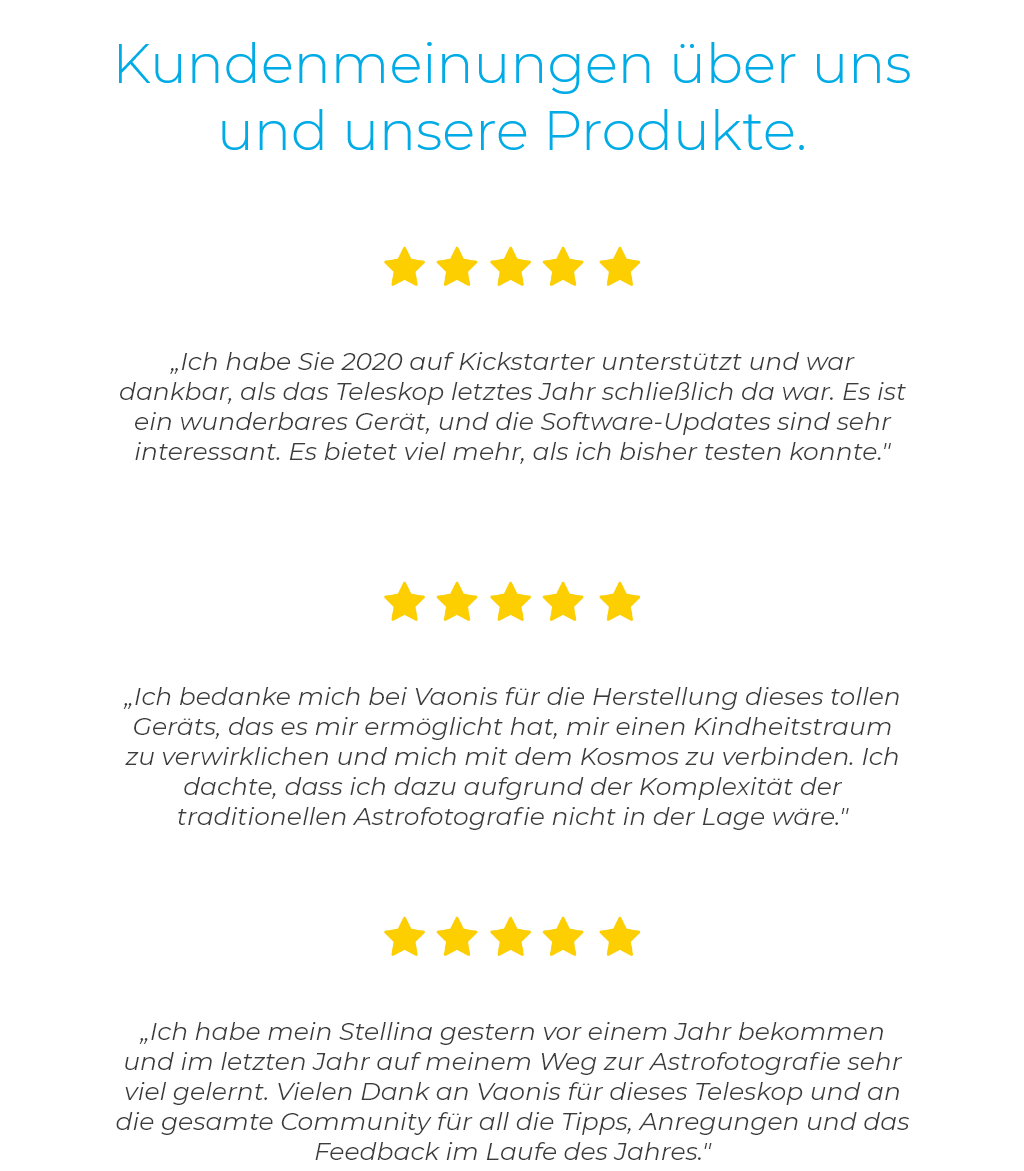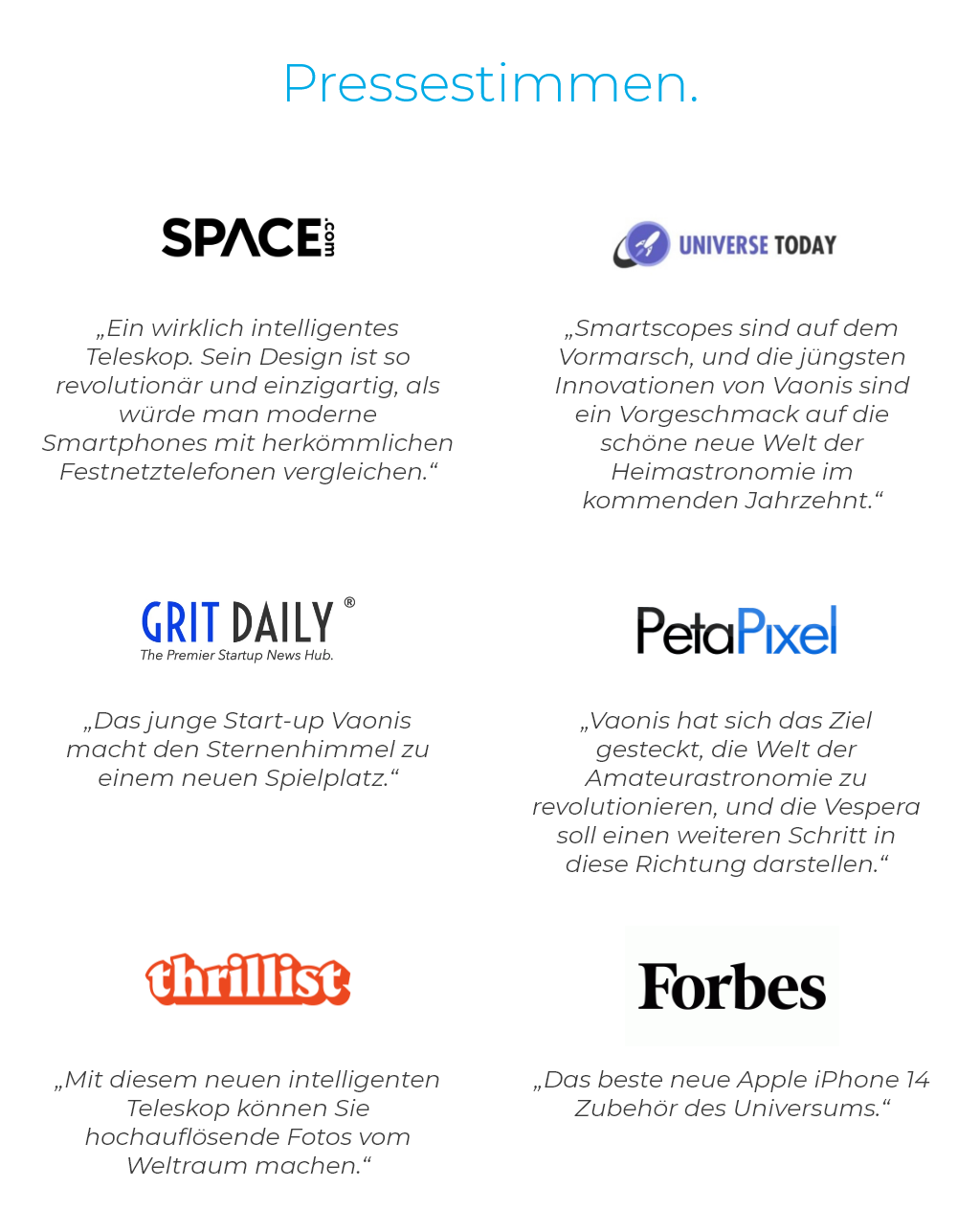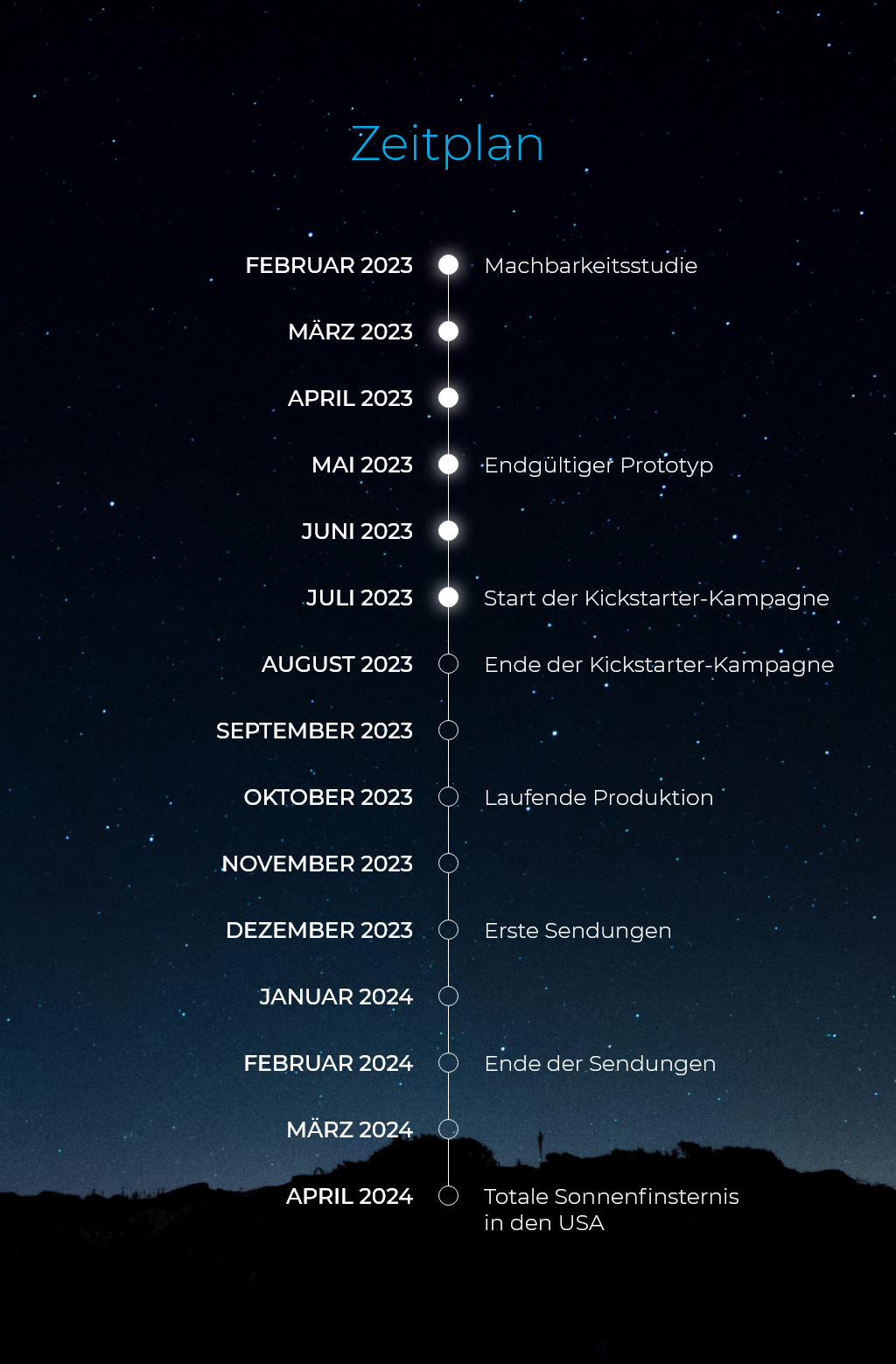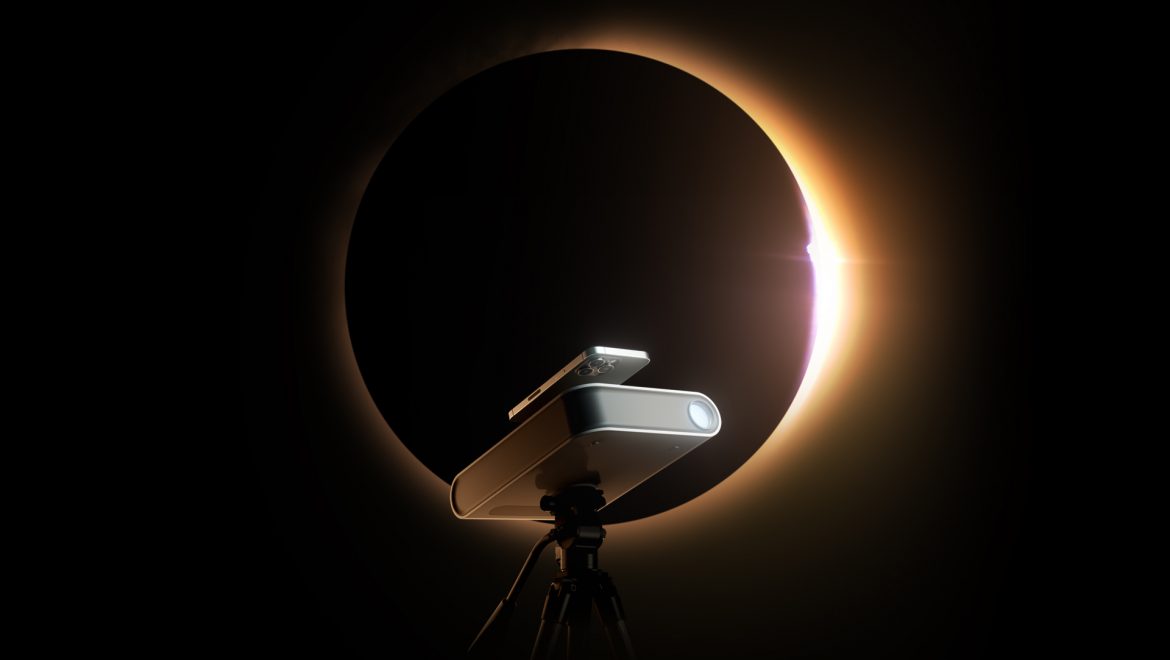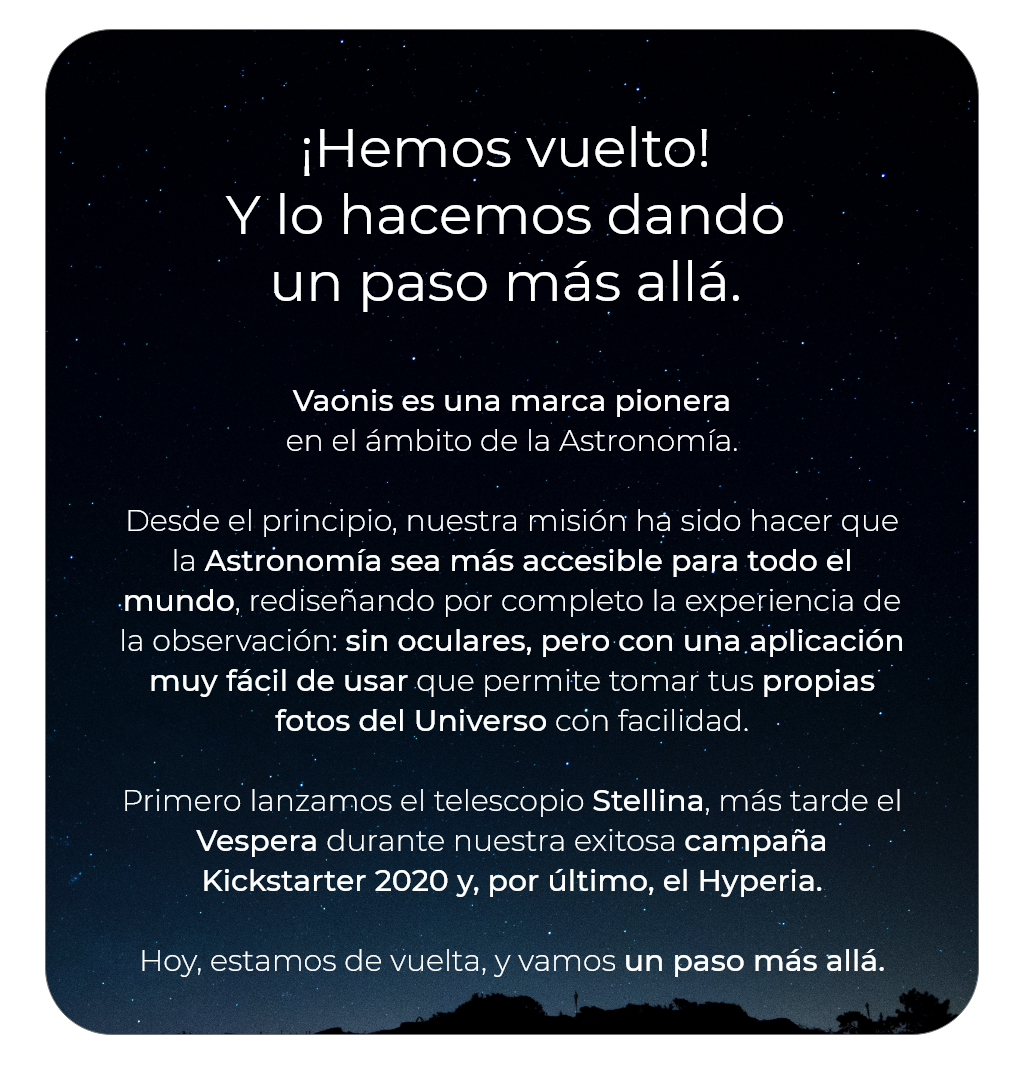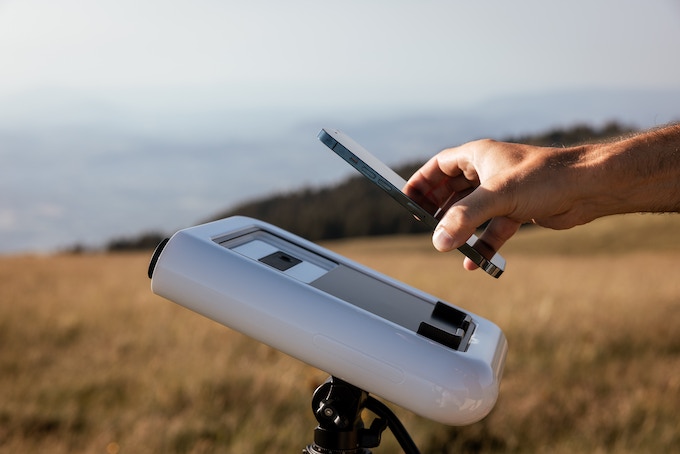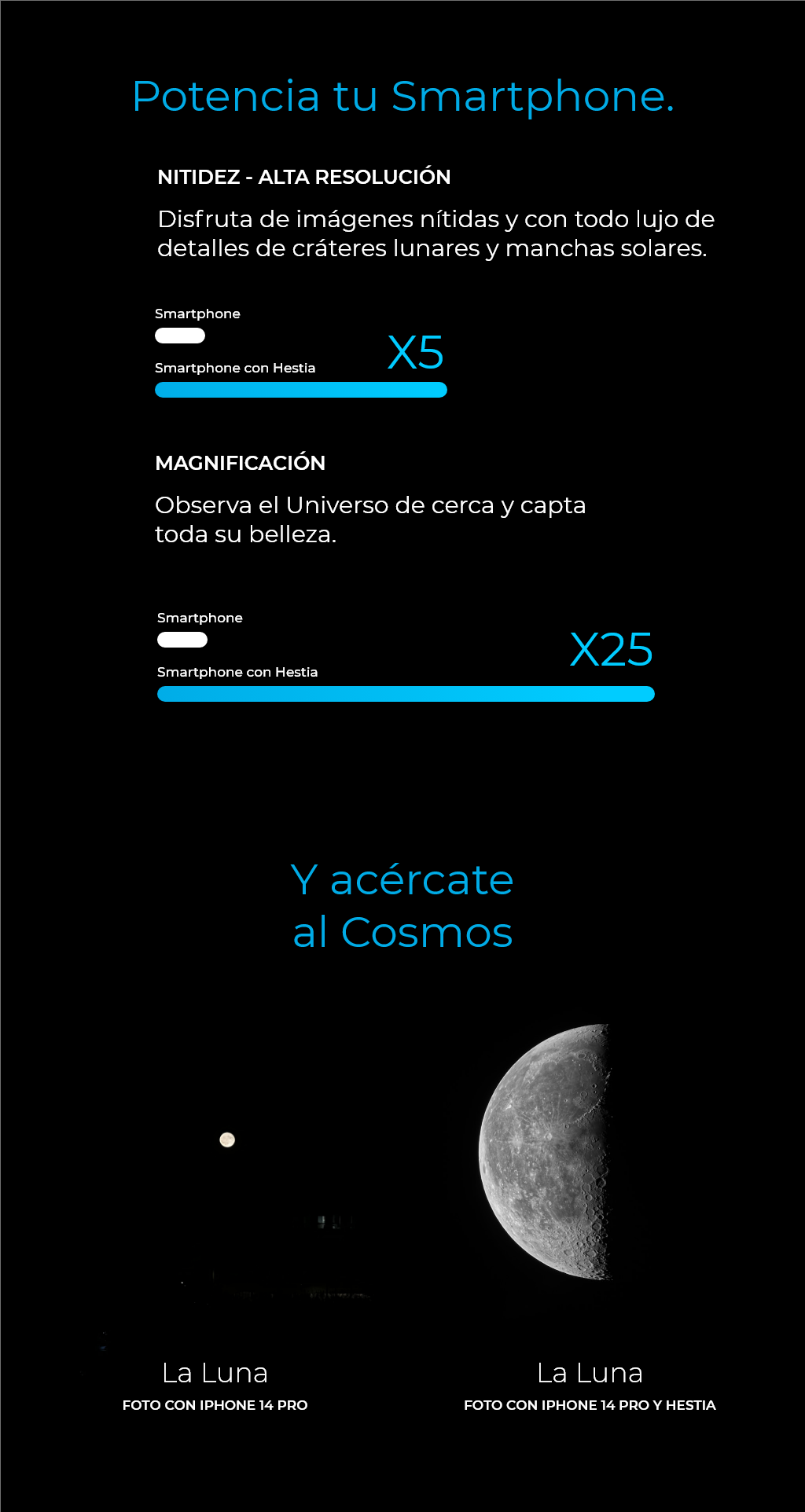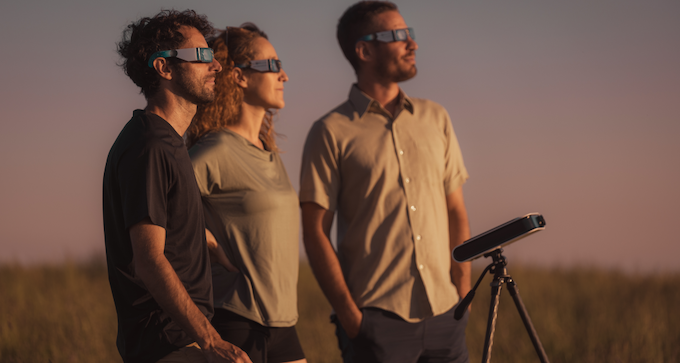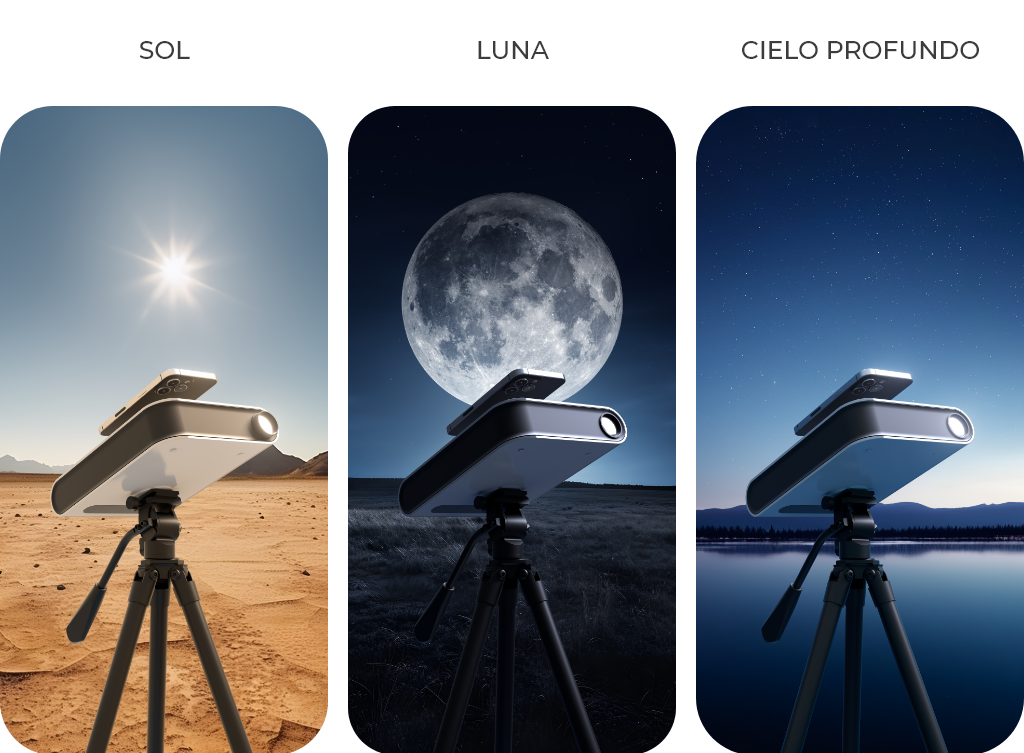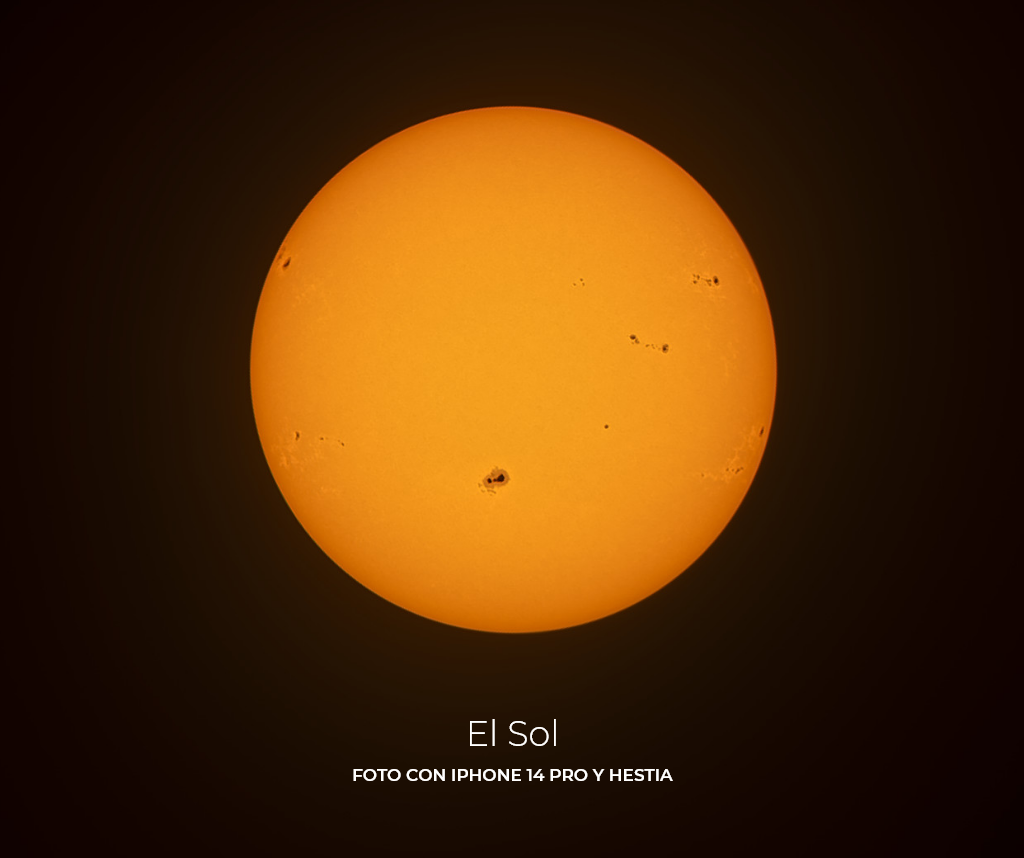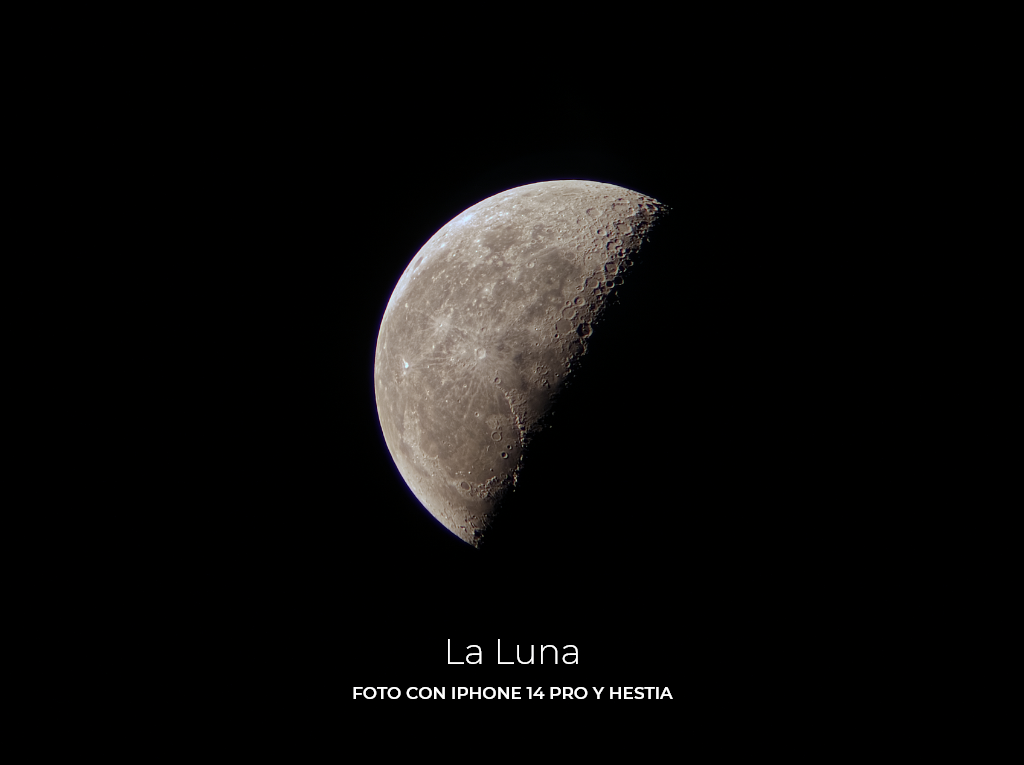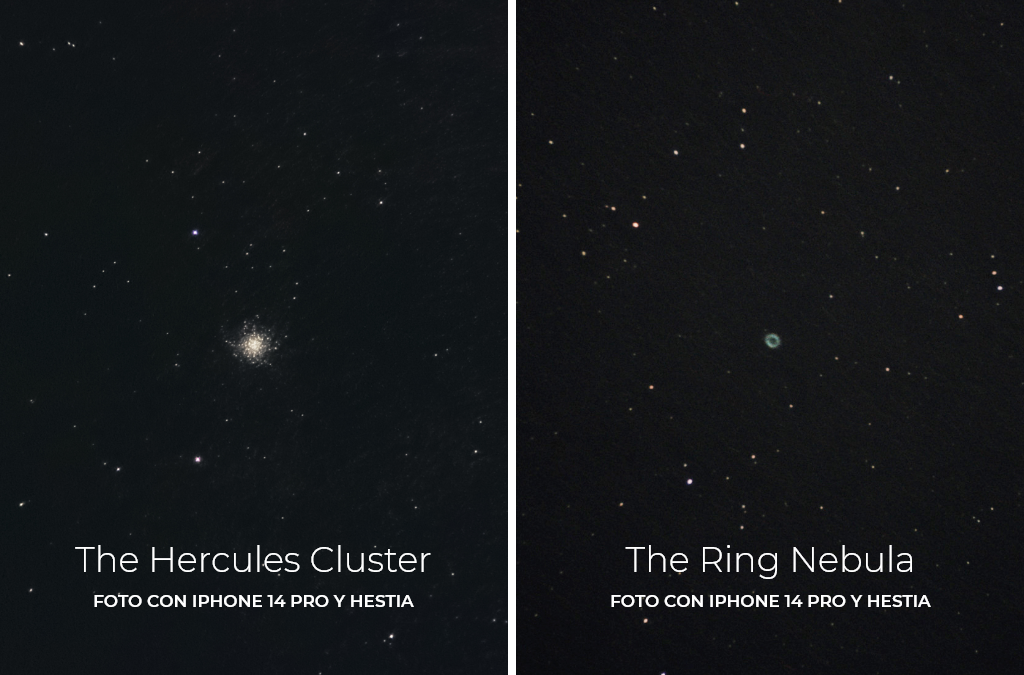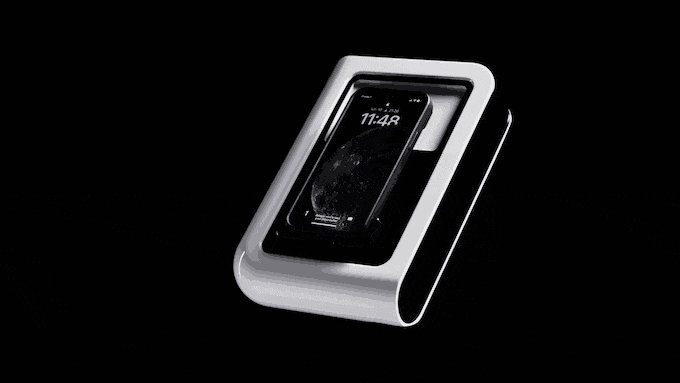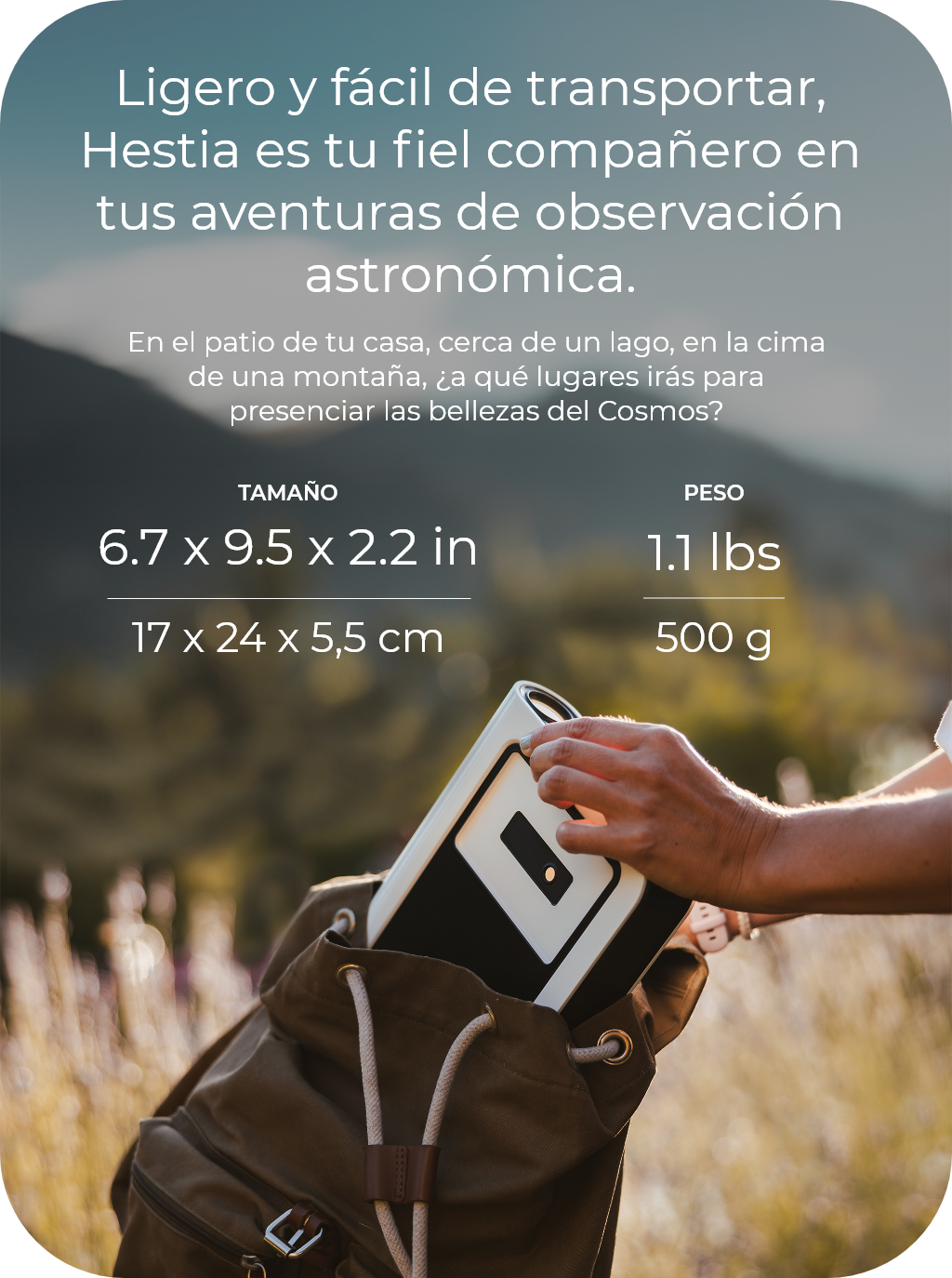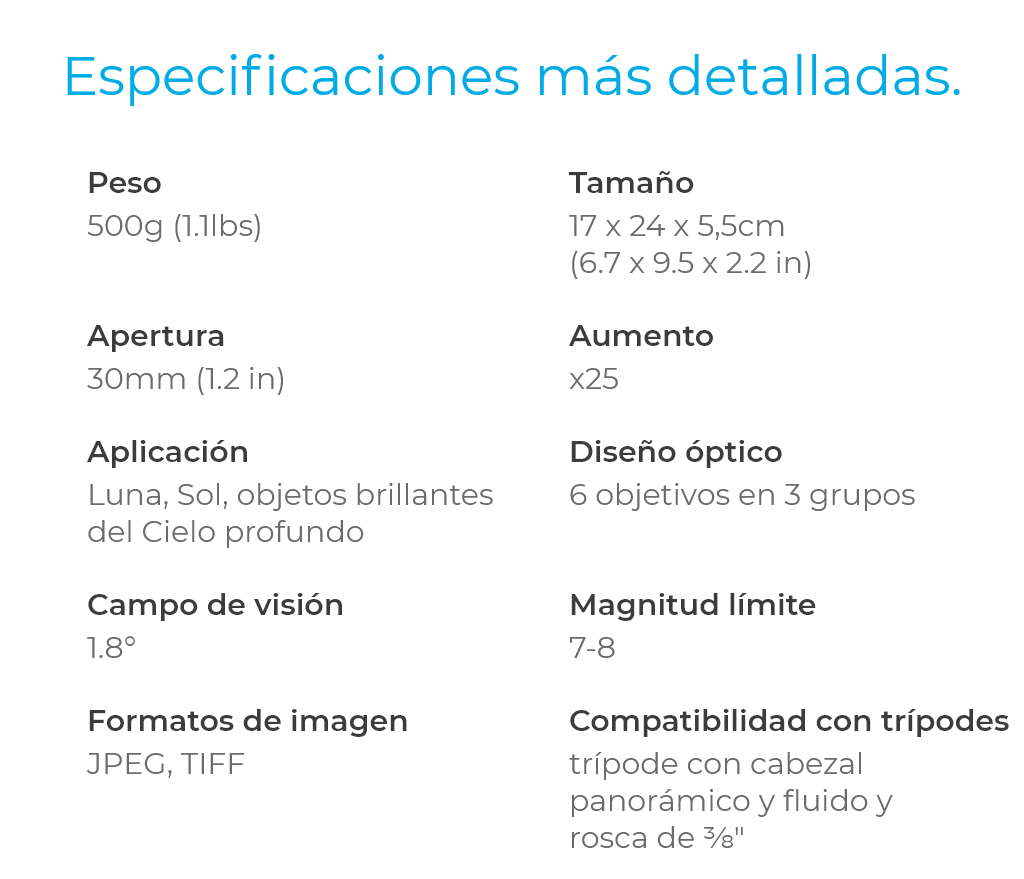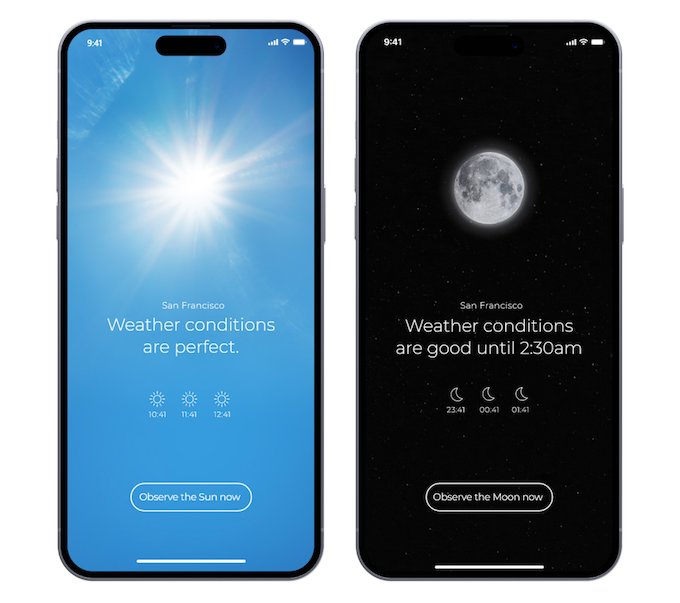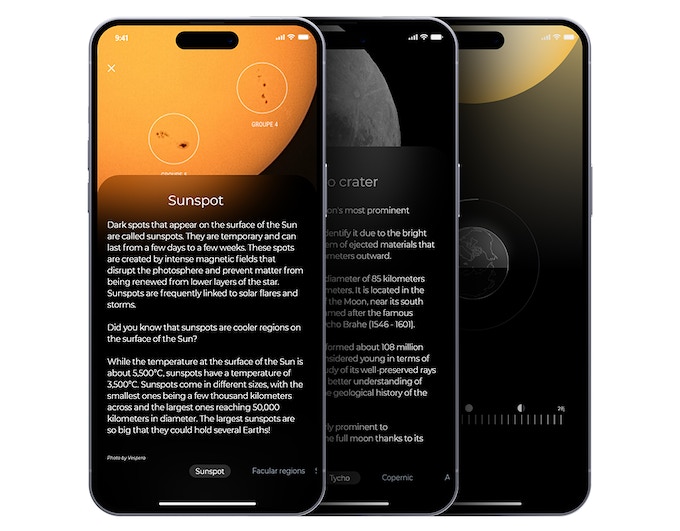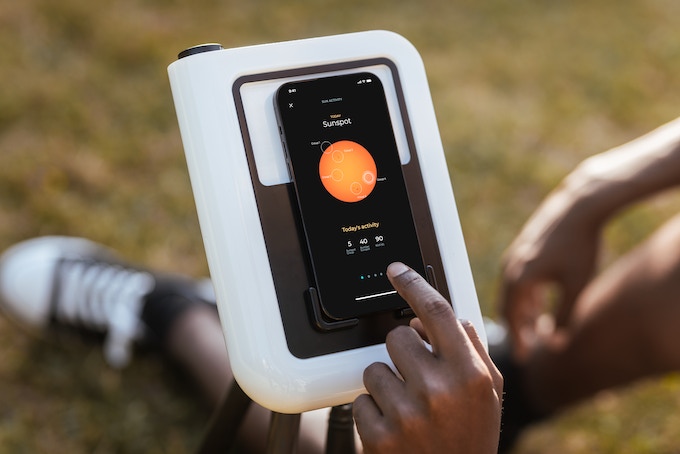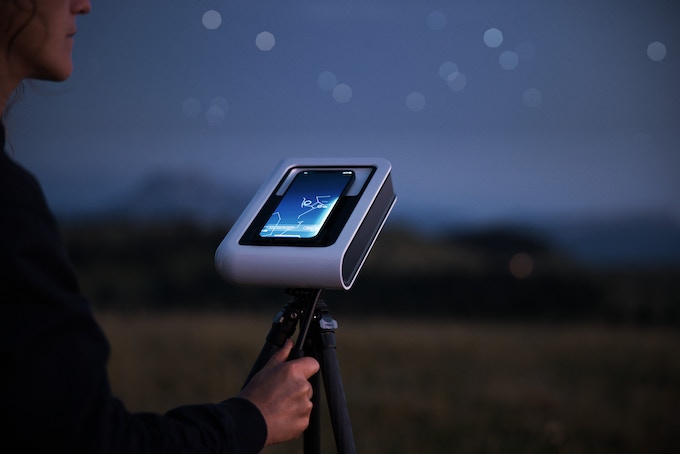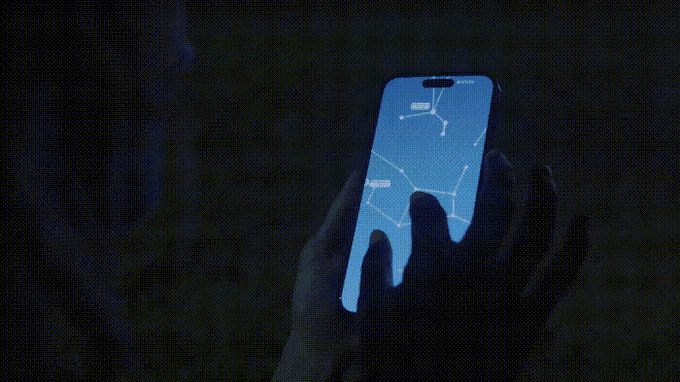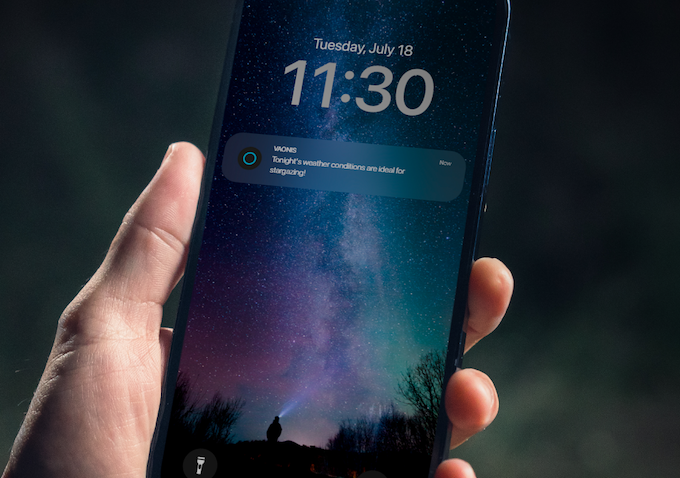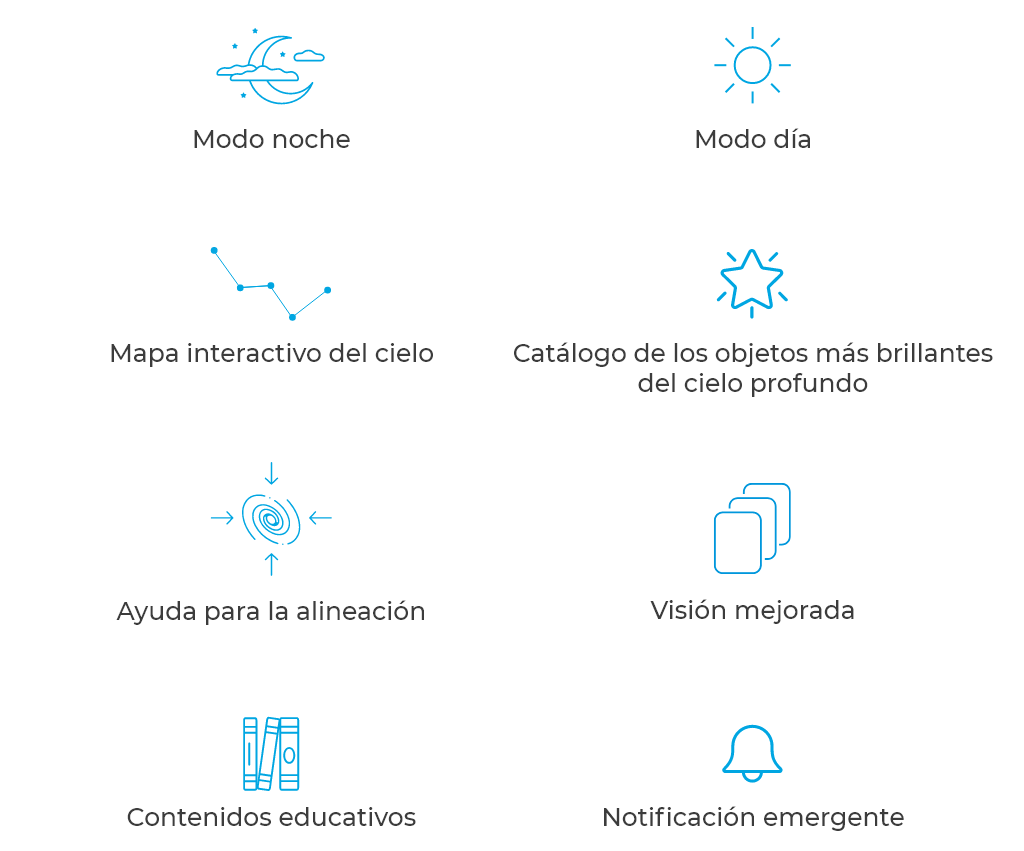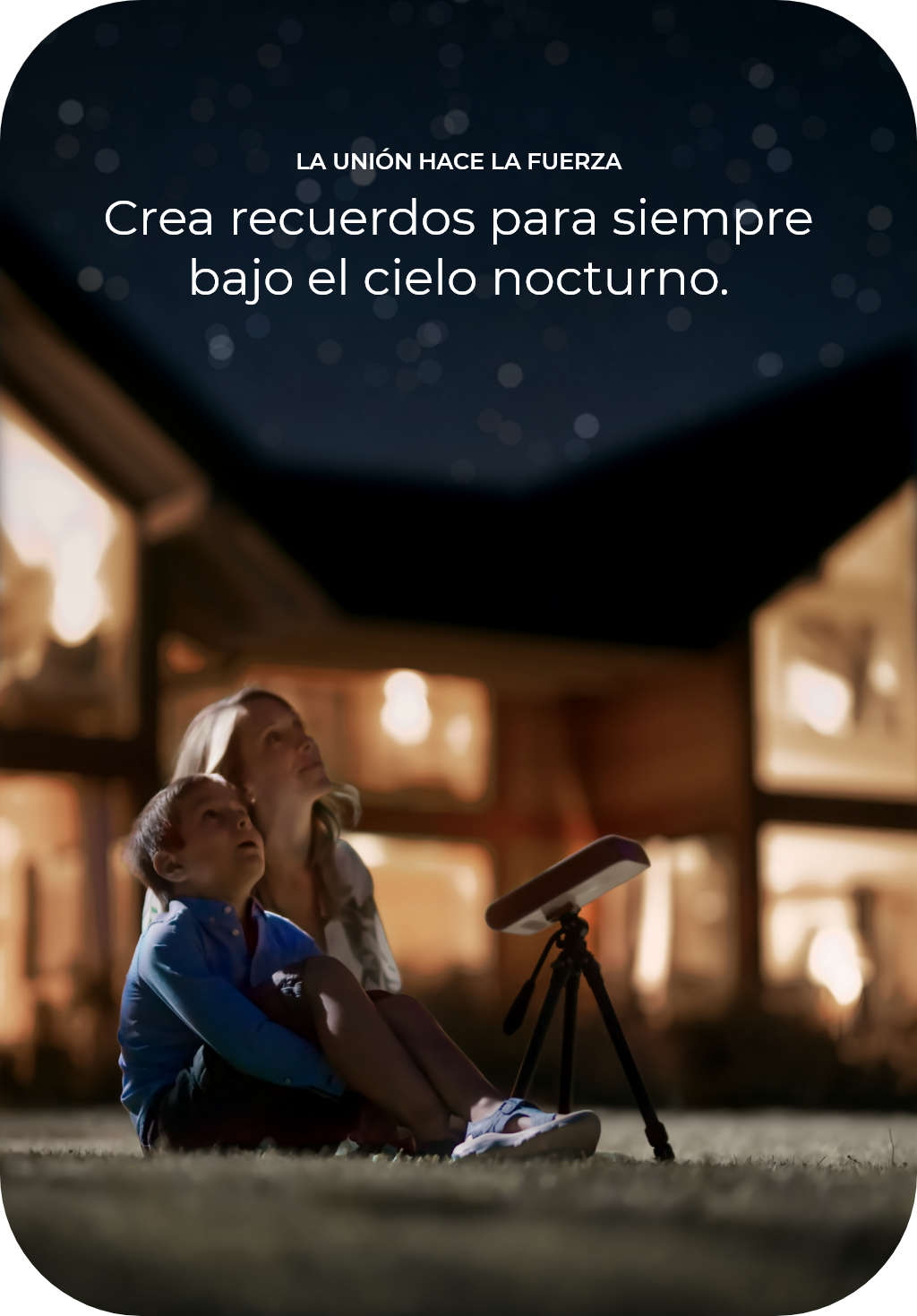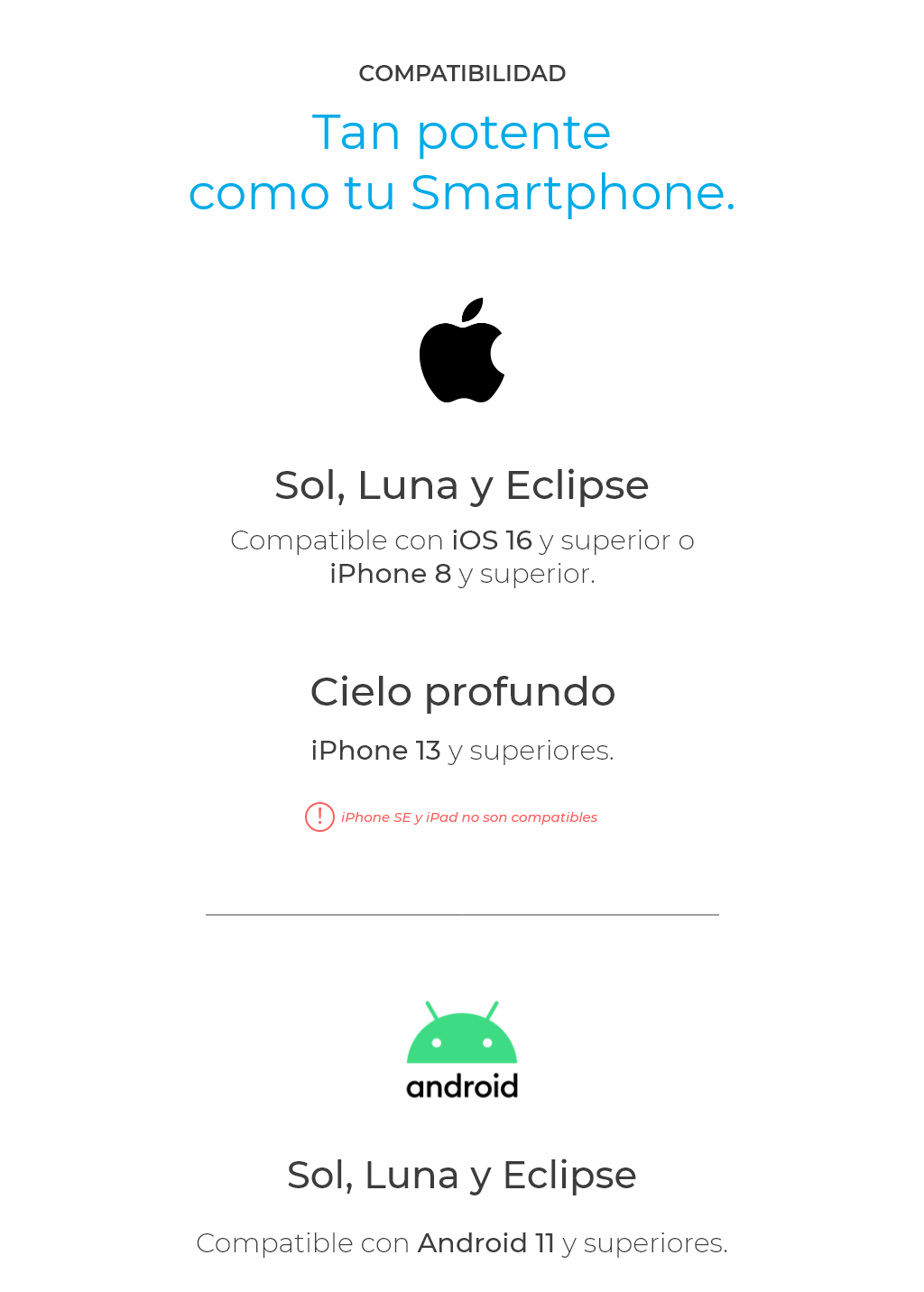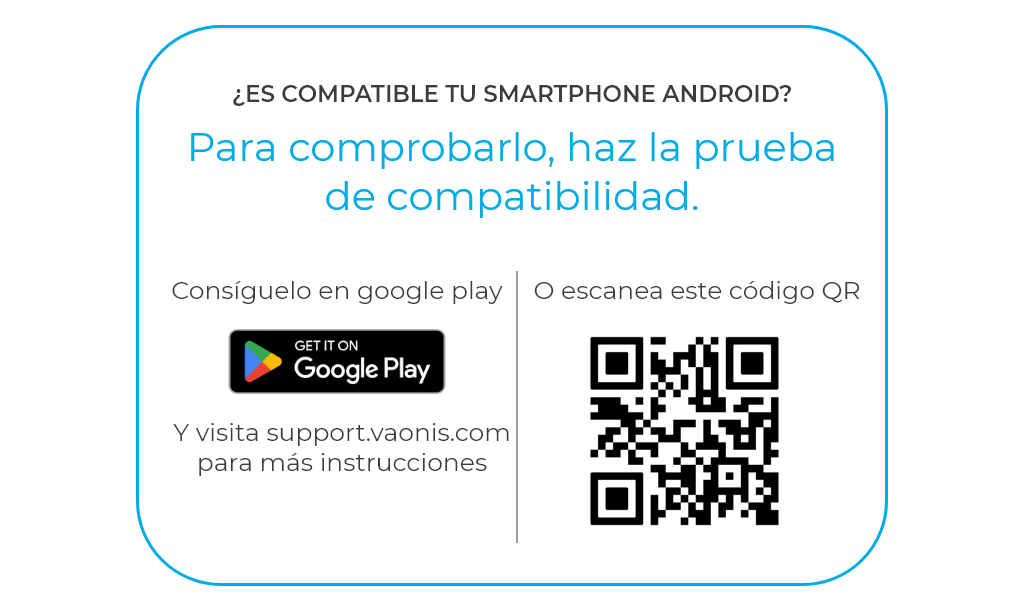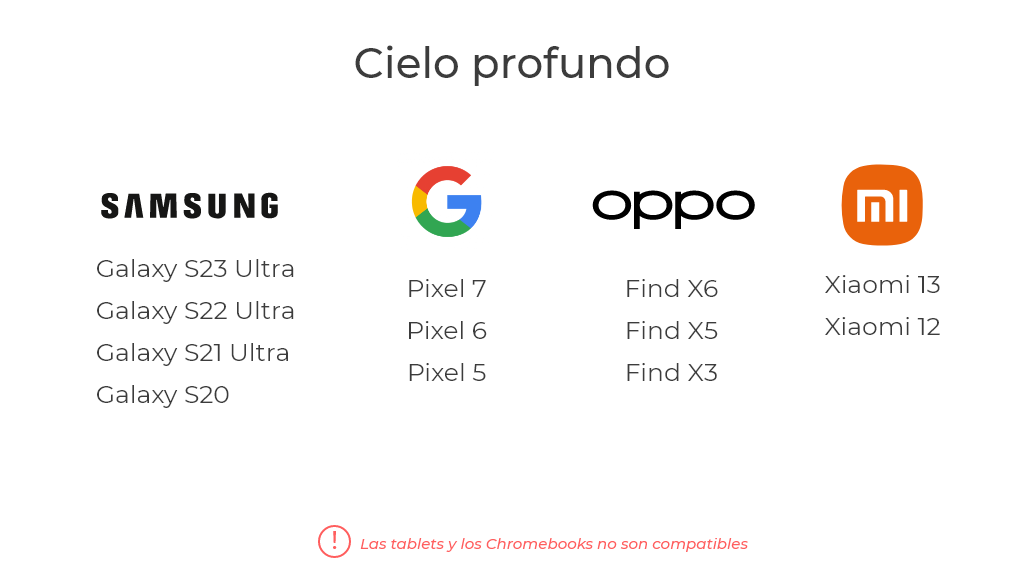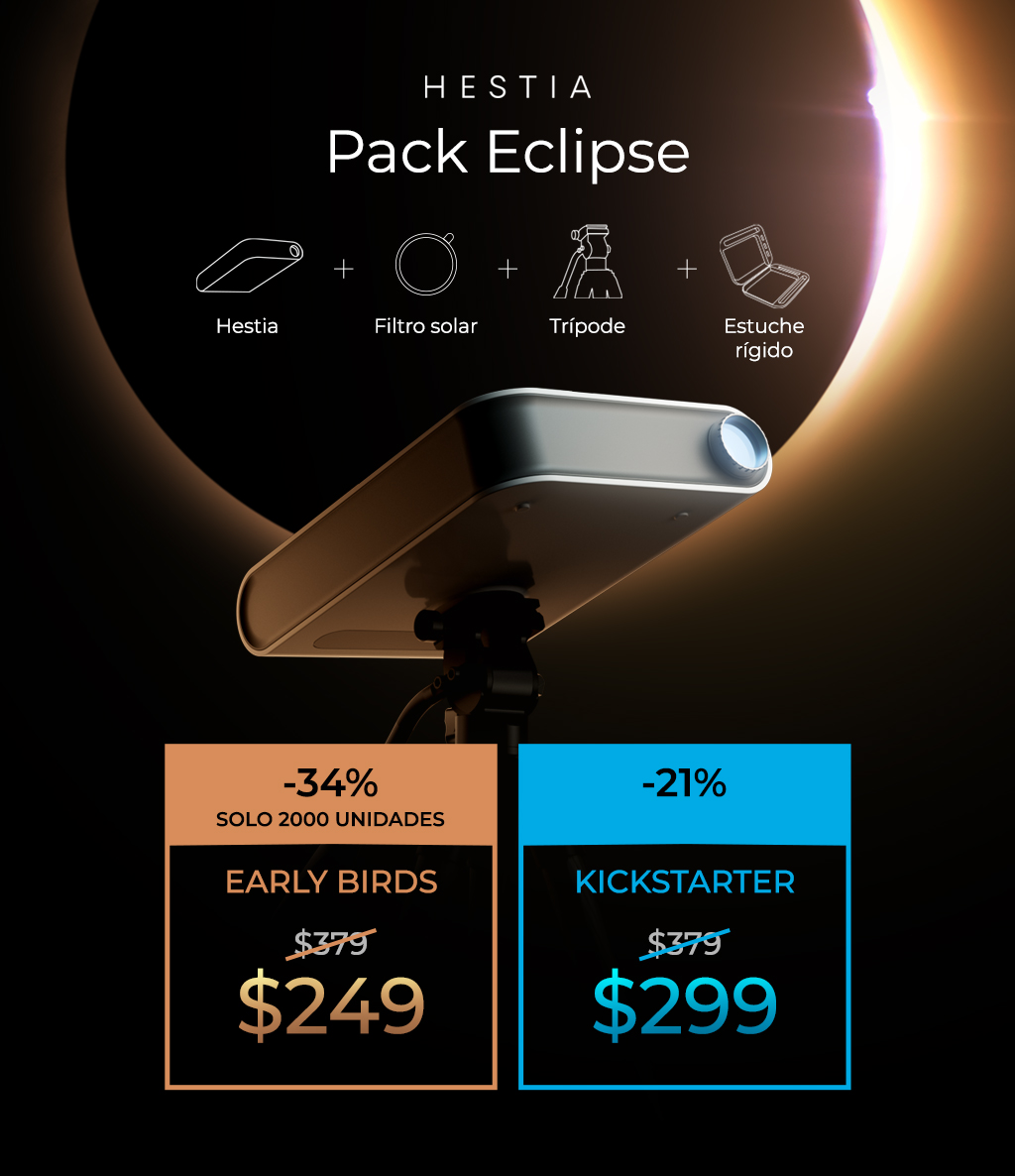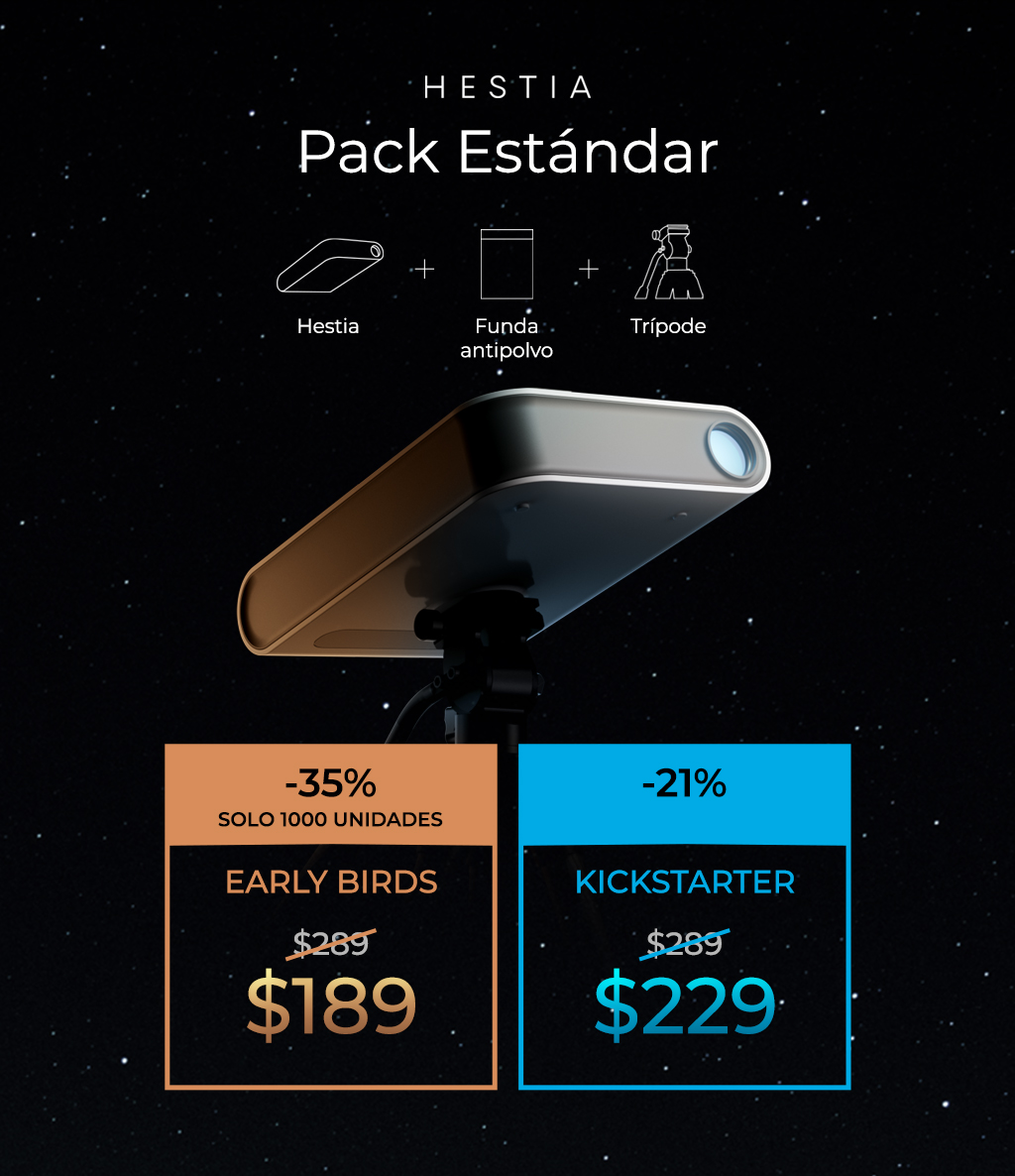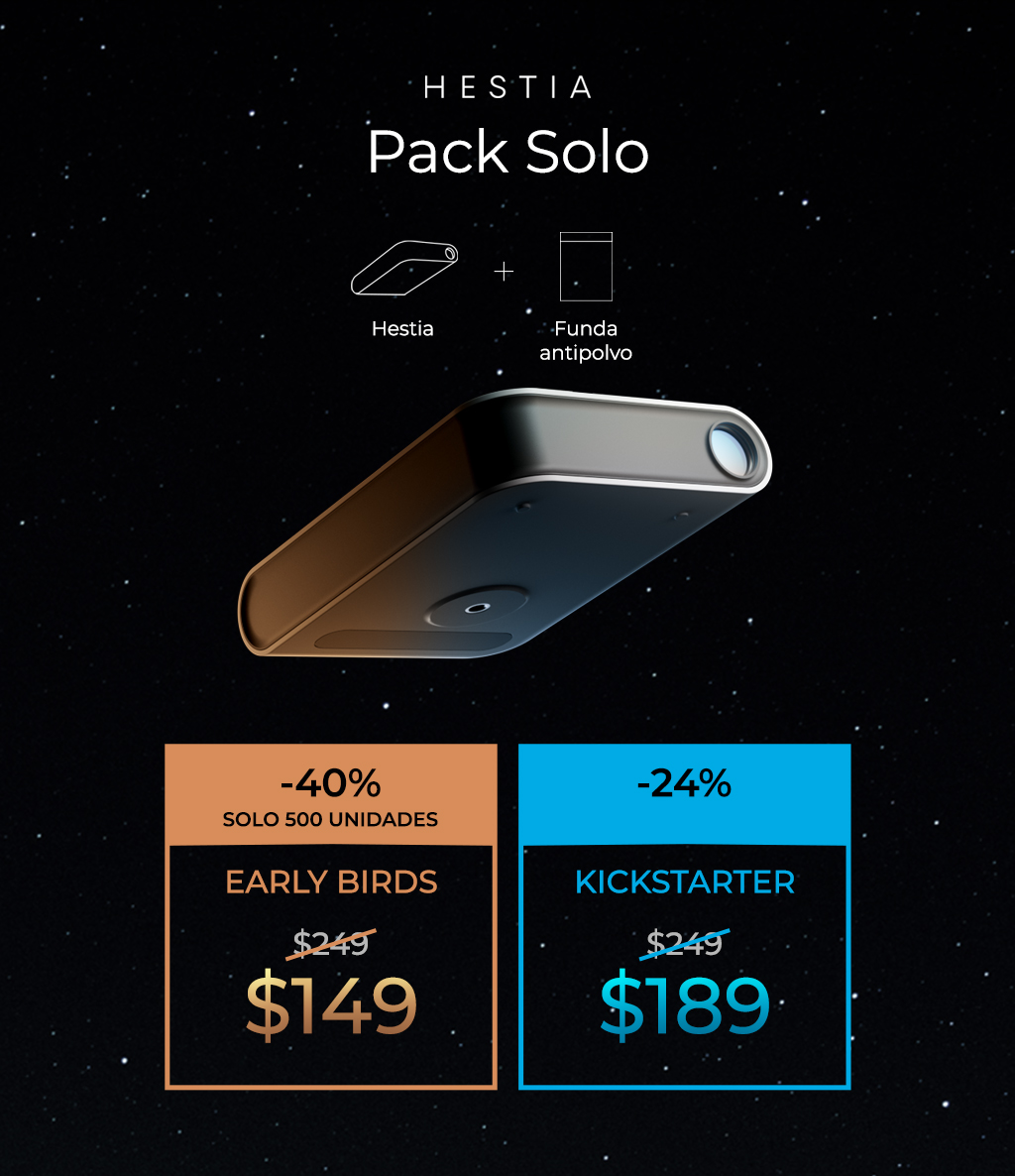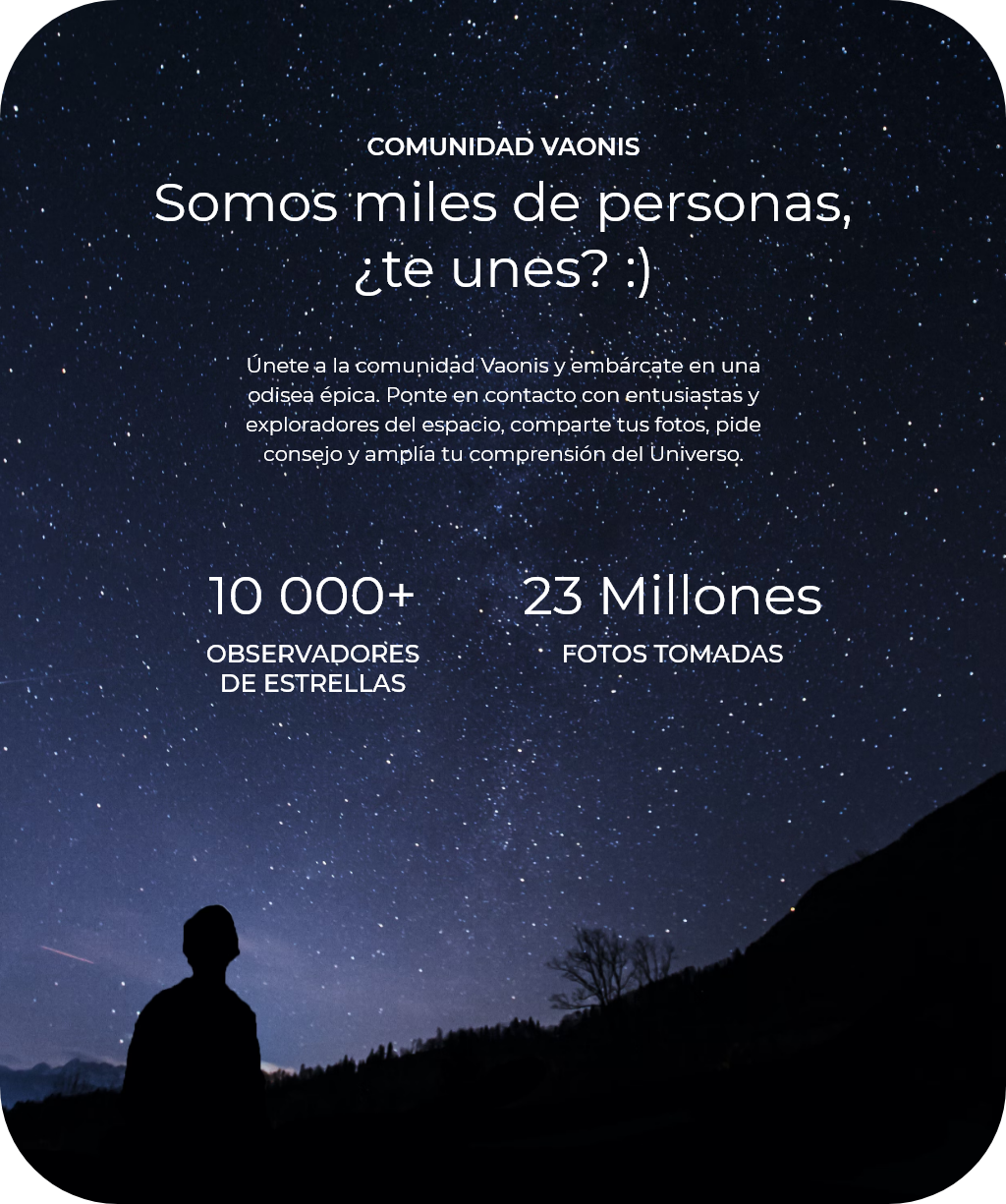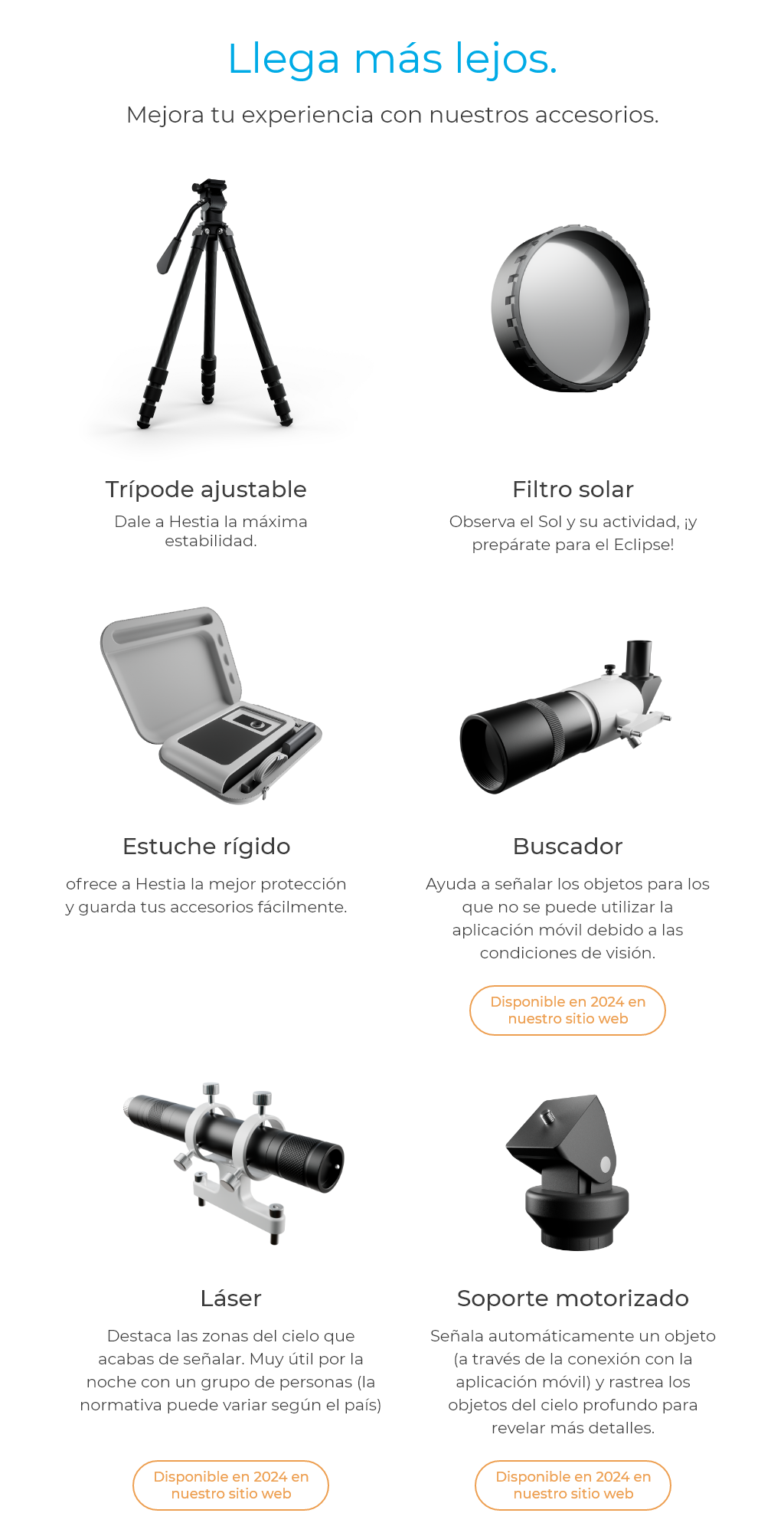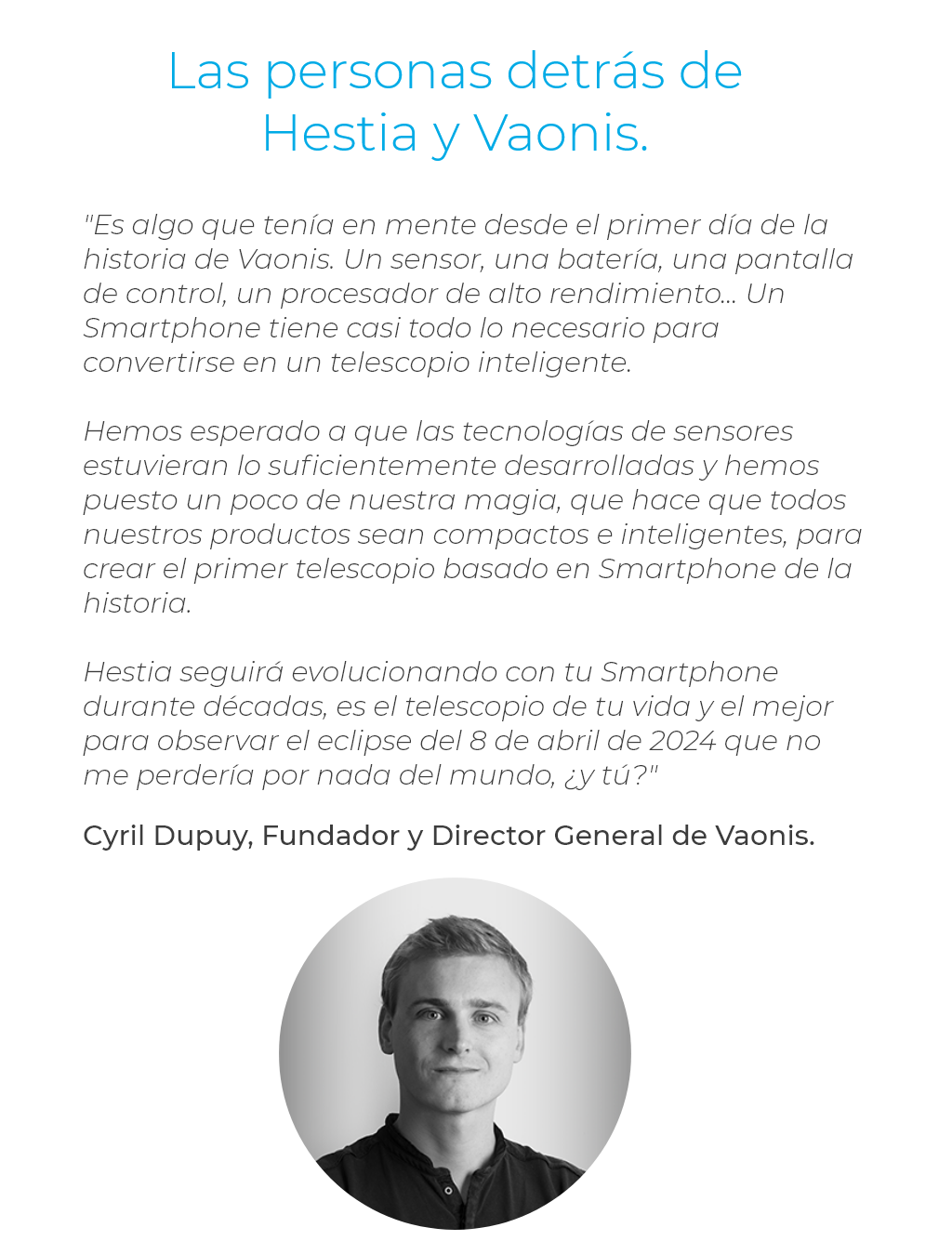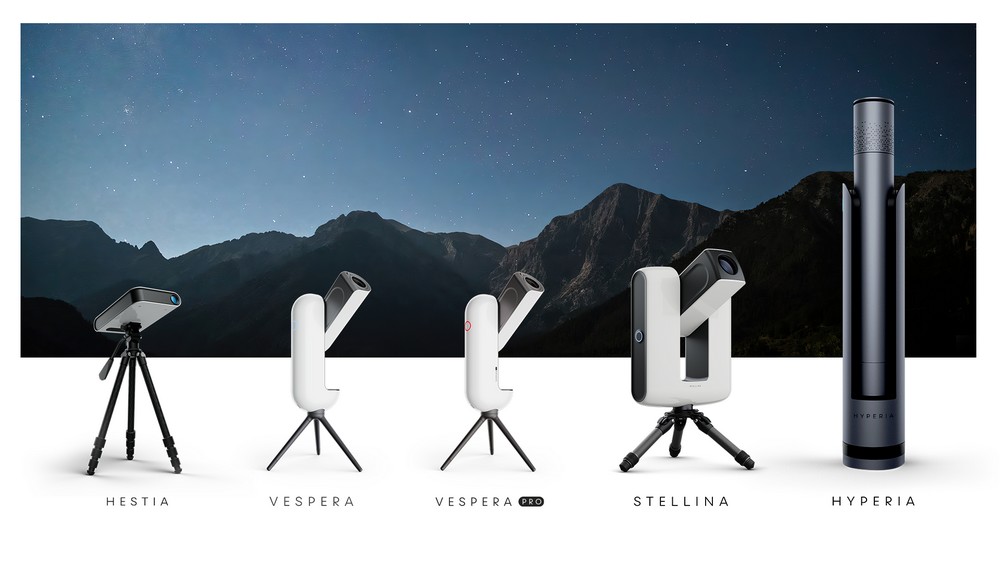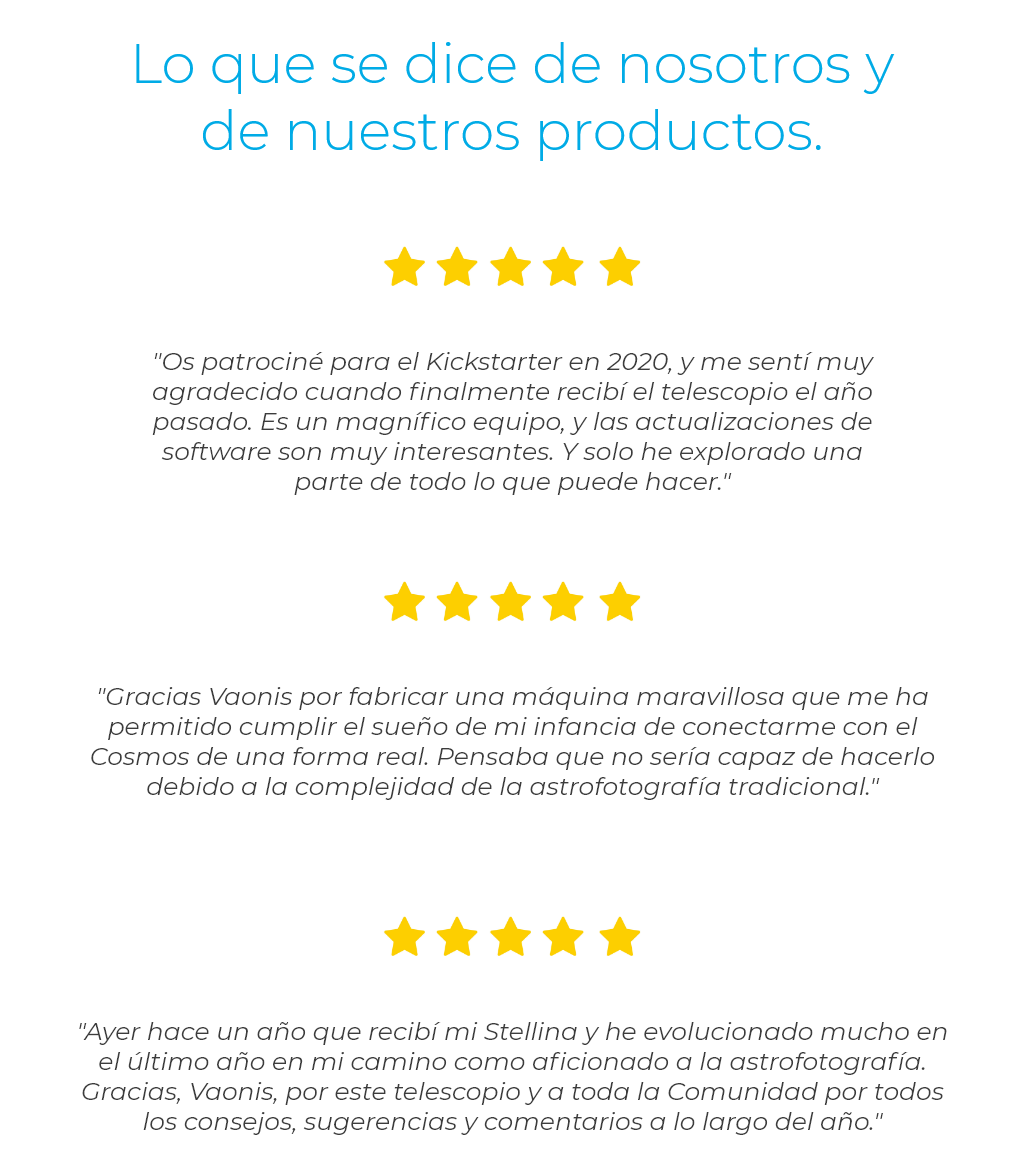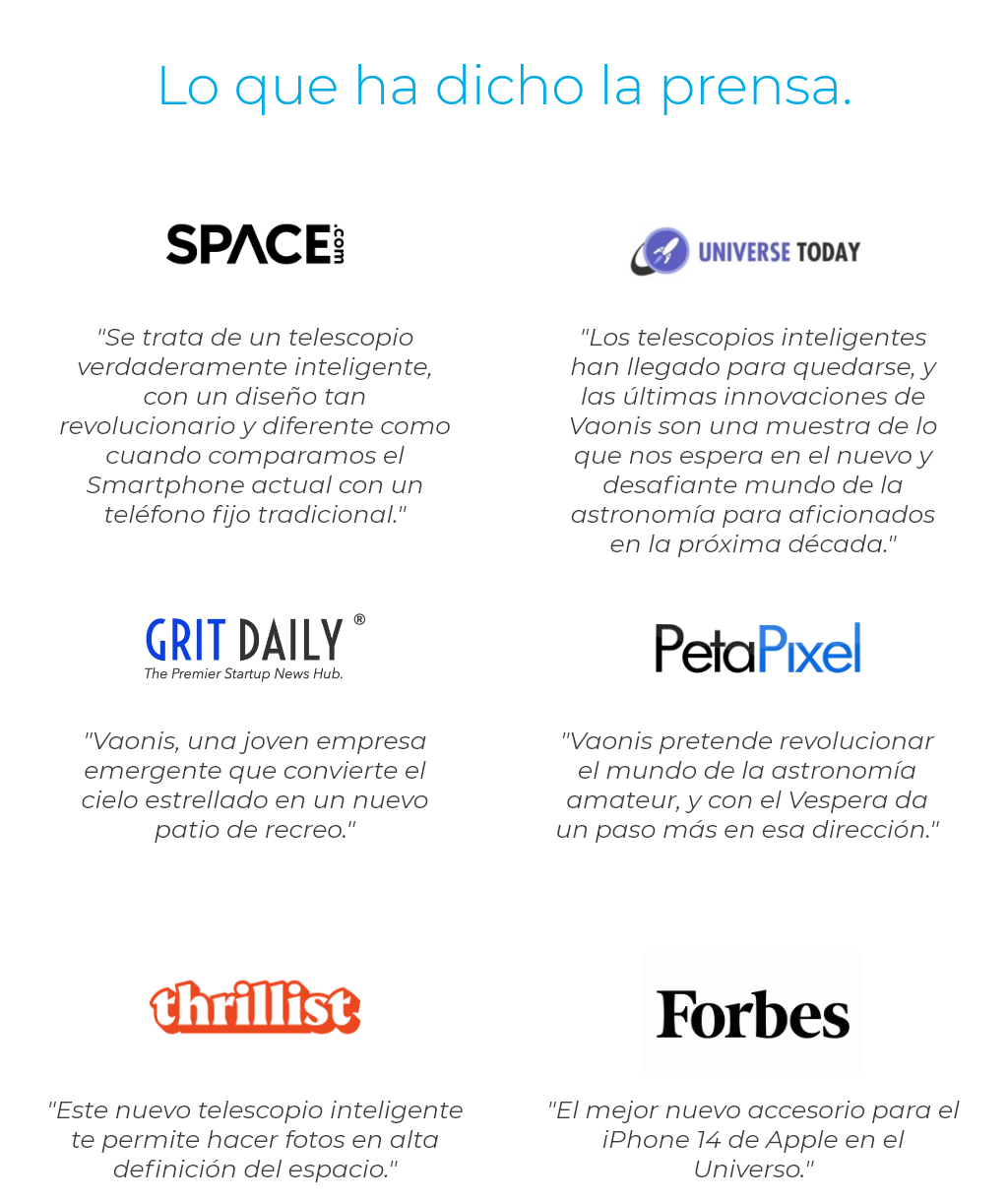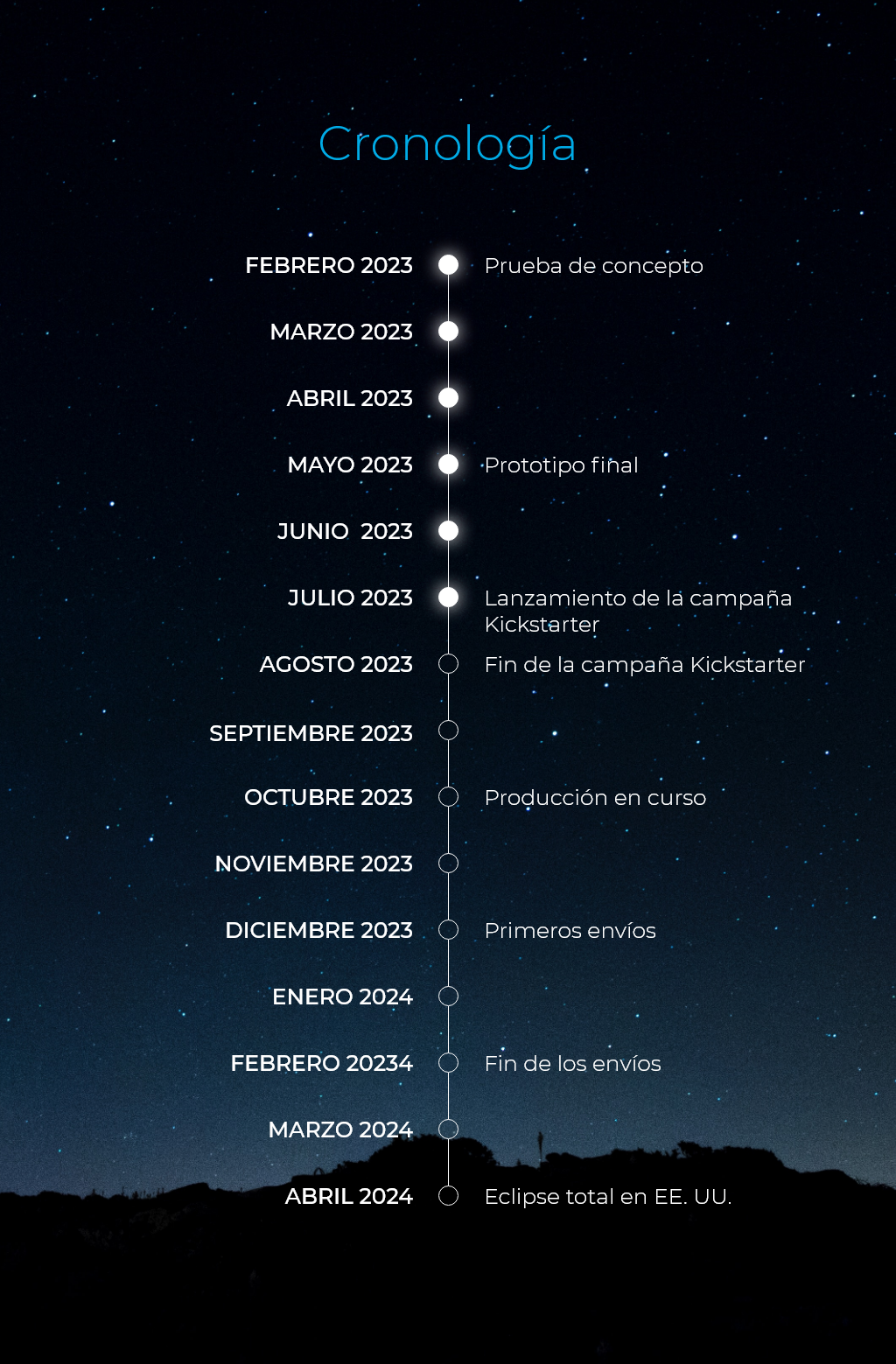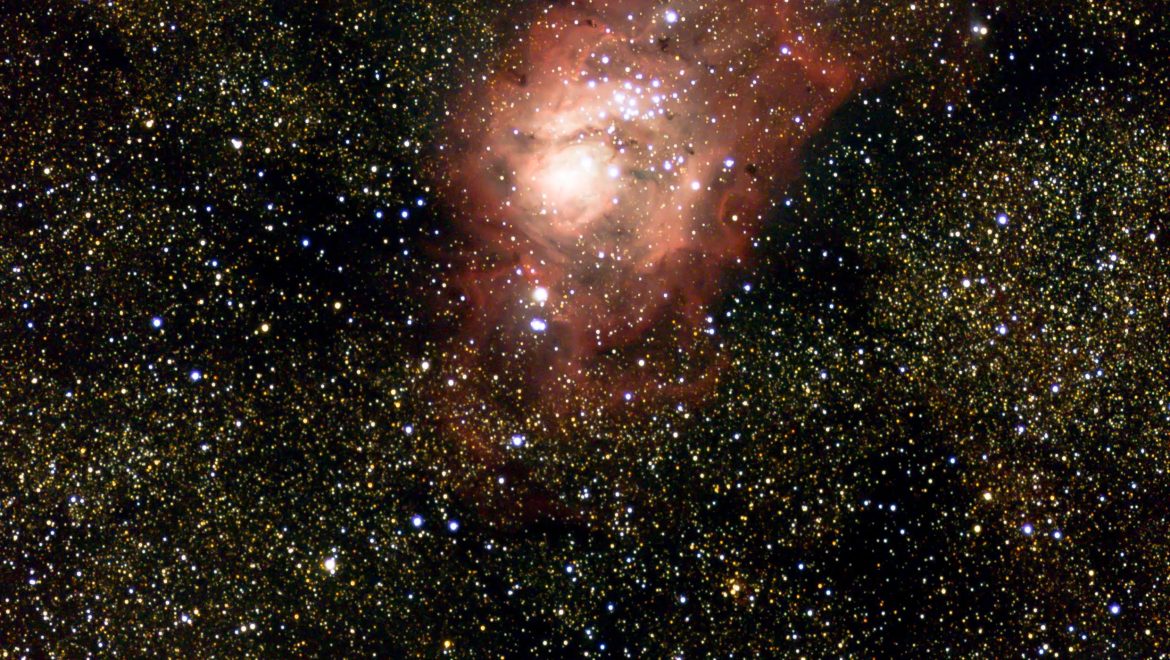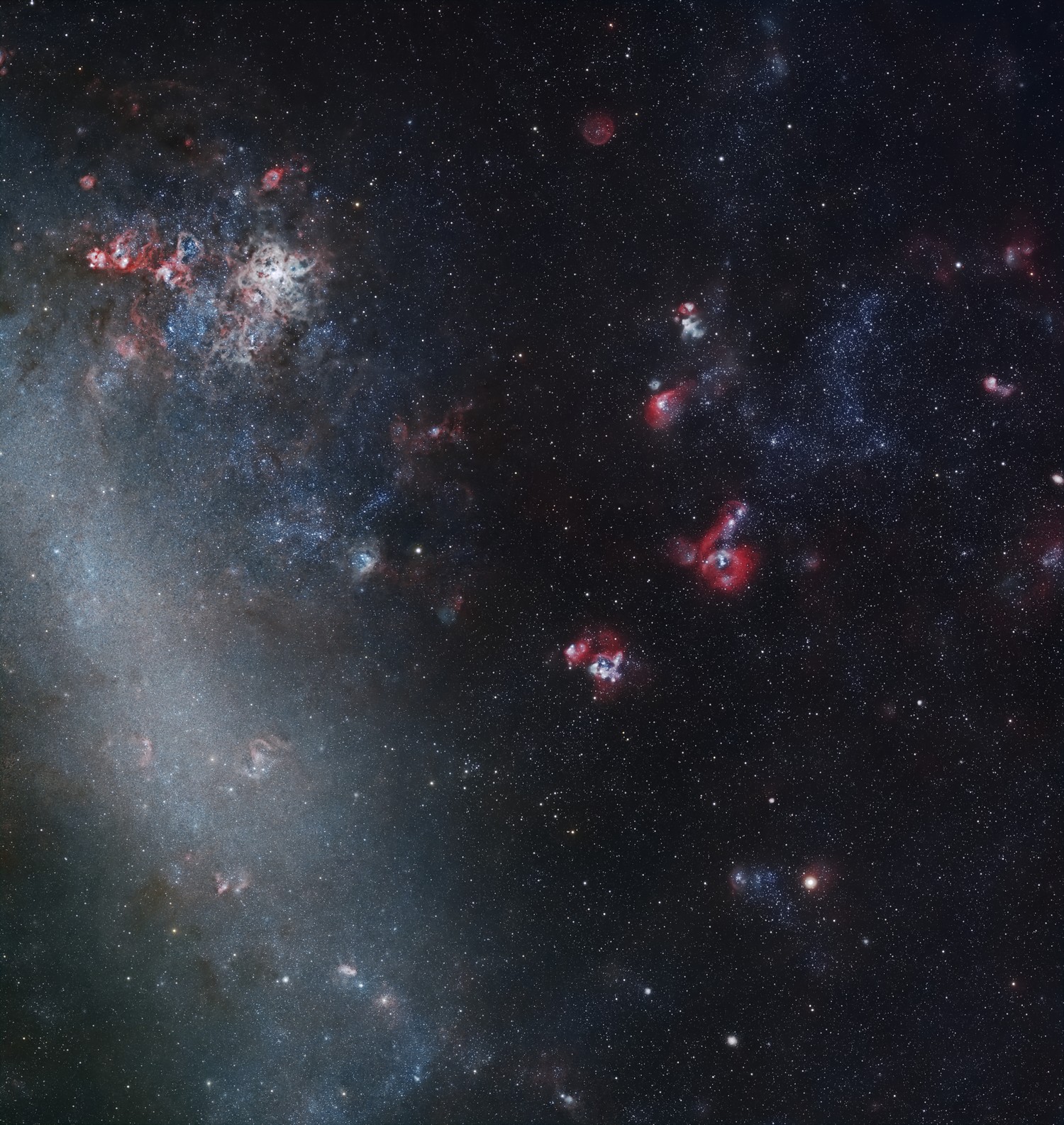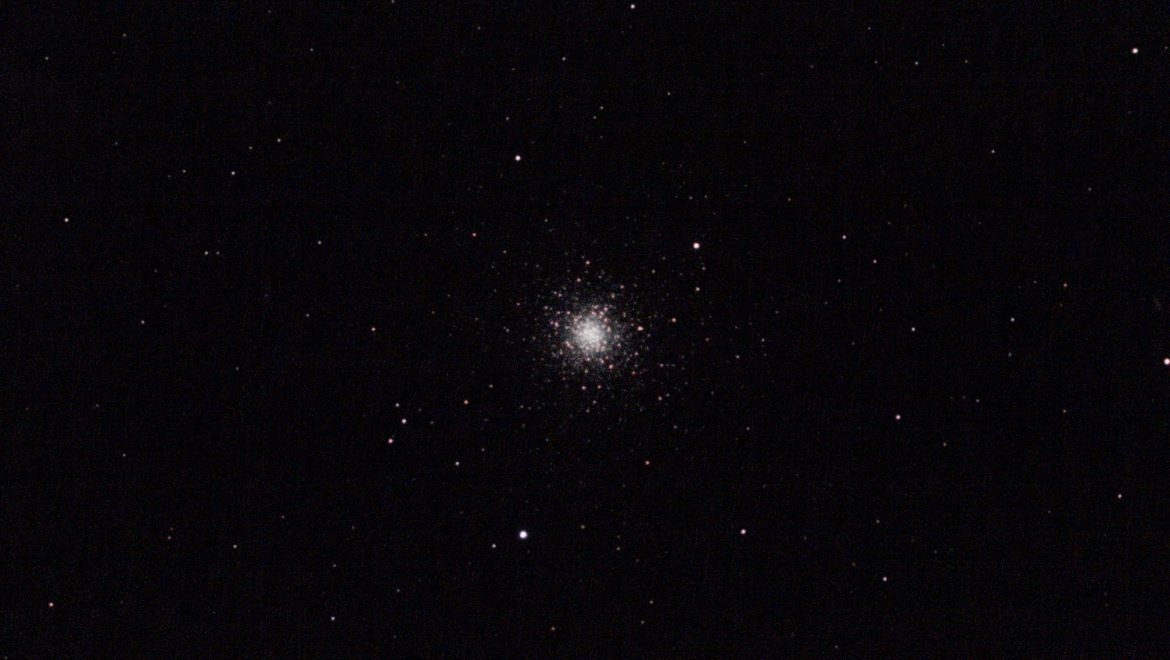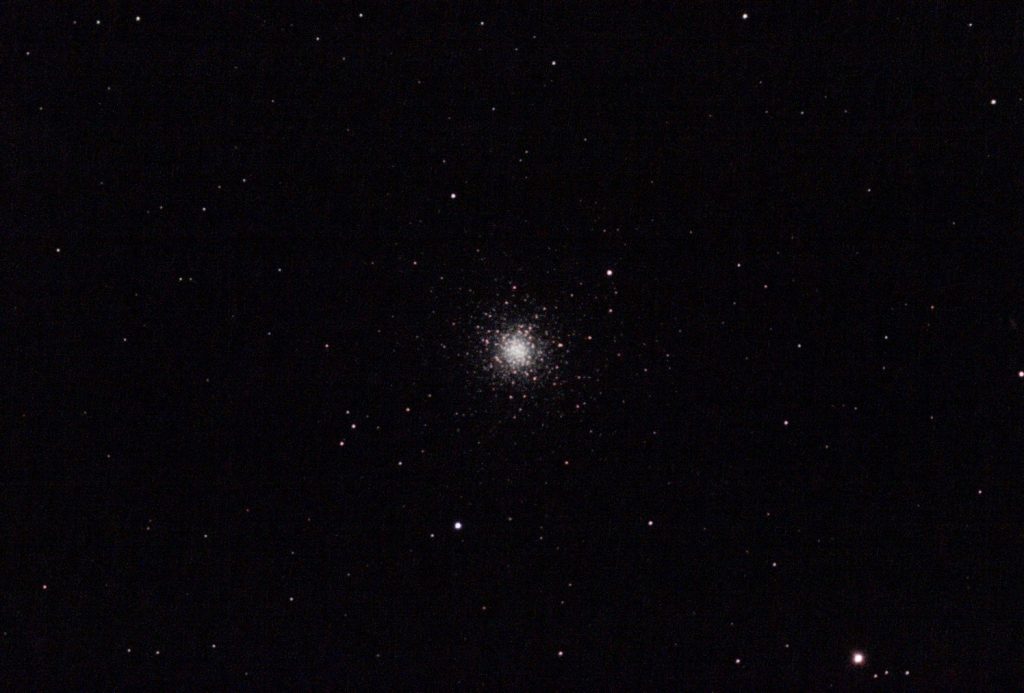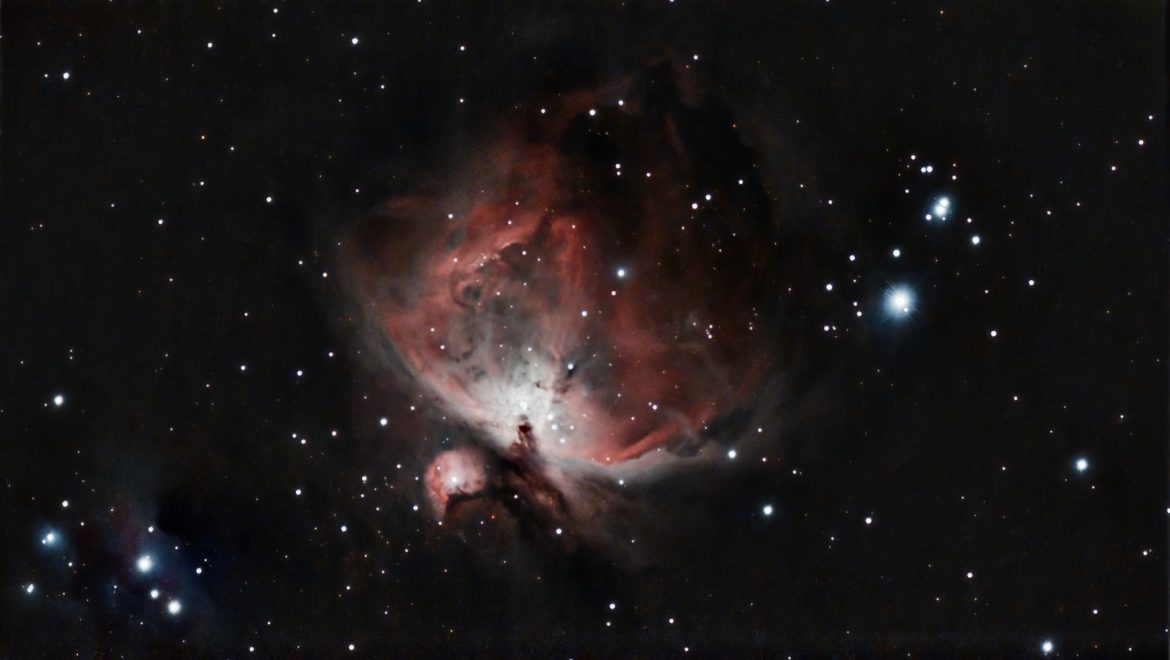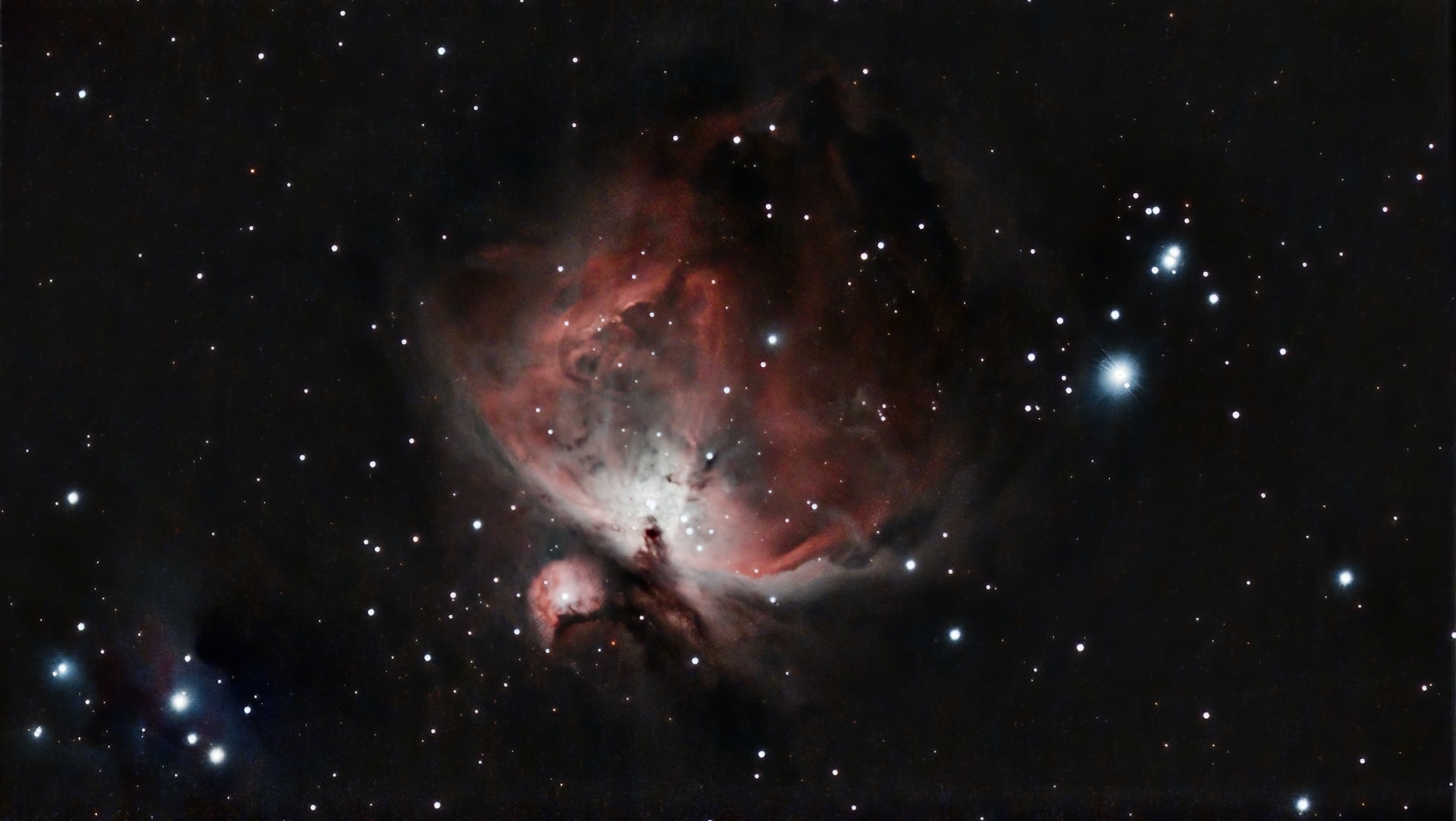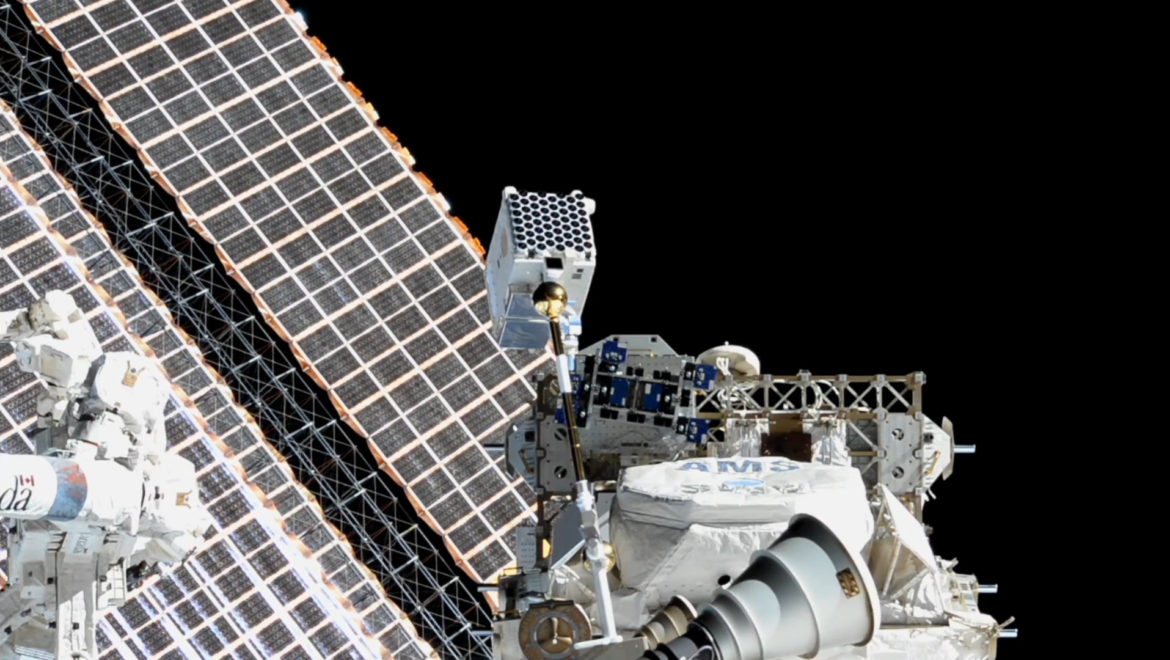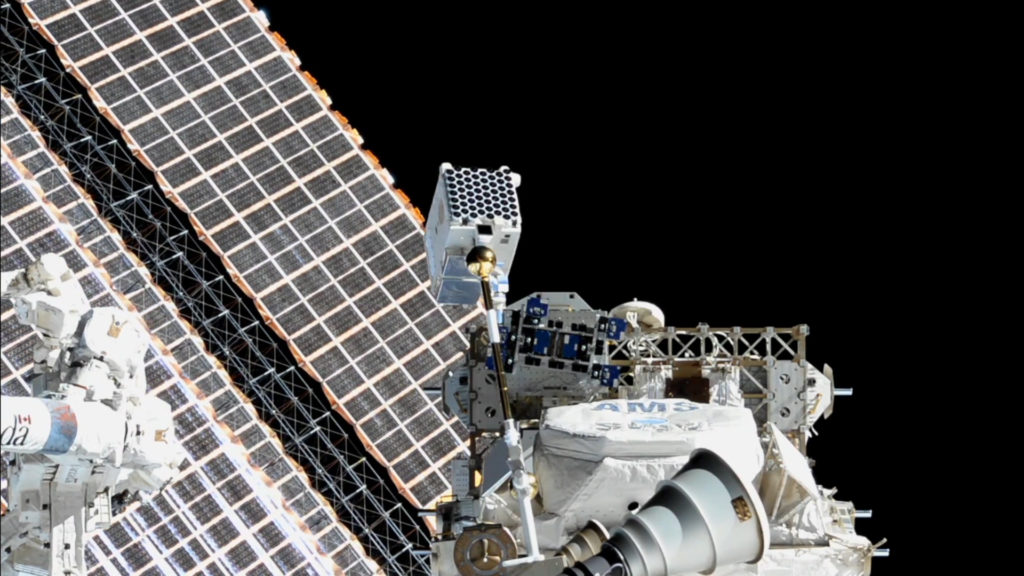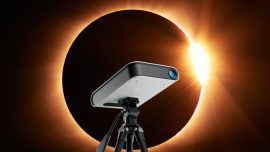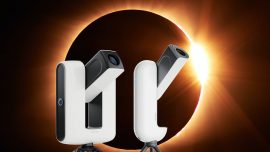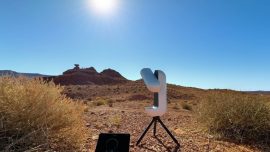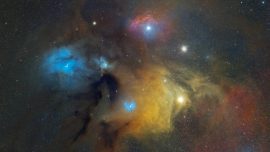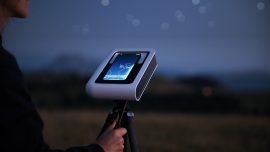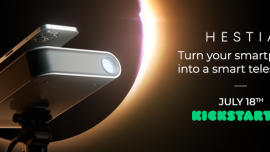Observing the 2024 April 8th total solar eclipse with Hestia.
This tutorial presents the full procedure for observing the eclipse, including totality, followed by a safe scenario designed to let you enjoy every aspect of the eclipse.
With great power comes great responsability!
Do not directly observe the sun through an optical instrument without proper protection during the partial phase of an eclipse or when there is no eclipse.
It is only safe to observe the sun without protection during a total eclipse when the moon fully obstructs the direct sunlight.
Do not leave your Hestia unattended during an eclipse or more generally during a solar observation.
OVERVIEW
1. dos and don’ts
- Do not remove the solar filter during the partial phase. Remove it only when the eclipse is total.
- Do put back the solar filter as soon as the totality ends (read the “safe eclipse observing scenario” section to learn more).
- Do check that your smartphone has enough charge, as the entire event lasts several hours and your smartphone will be highly used. Consider keeping your smartphone connected to a power bank.
- Do check that you have enough storage space on your smartphone.
- Do not leave your Hestia unattended during the observation.
2. Eclipse Observation tutorial with Hestia
Setting-up.
- Firmly attach Hestia to its tripod.
- Ensure that you have removed the protective plastic film from the lens and eye piece. Place and align your smartphone on Hestia. Use the installation assistant from the main menu.
DO NOT POINT AT THE SUN DURING THIS STEP. - Once your smartphone is properly placed on Hestia, screw the solar filter onto the lens ring.
- Attach the solar pointer to Hestia’s accessory port.
Pointing at the sun.
- From the Gravity Space Center, tap the “observe the eclipse” button or press the camera button and select the “eclipse” camera mode from the top screen menu.
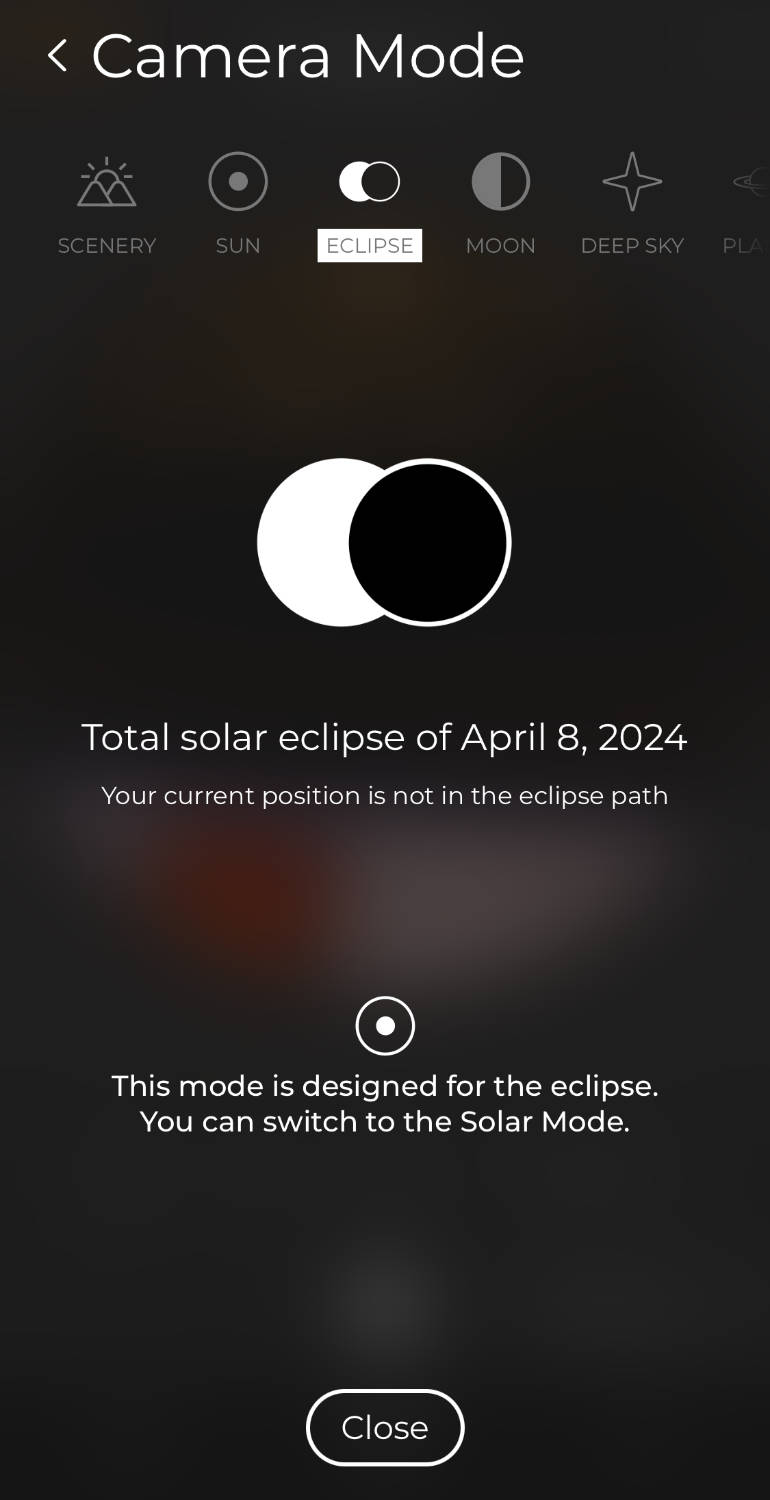
- Orient Hestia towards the sun using the solar pointer. DO NOT DIRECTLY LOOK THROUGH THE HOLES OF THE SOLAR POINTER. Refer to the following video to learn how to use the solar pointer:
- Once Hestia is properly oriented, you should be able to see the image of the sun on your smartphone.
- Tap “expo” to manually set a correct exposure. The disc of the sun must not appear completely white (if it does, this means the image is overexposed). You can also change the ISO value. Find a good balance between ISO and exposure. Initially, we recommend setting the ISO between 200 and 400 to keep a short exposure time.
- Rotate the front lens ring until you get a sharp image. You should be able to see sunspots on the sun’s disc.
- Refine the focus with the focus assistant: Tap “focus,” then “focus assistant.” The assistant takes several pictures at different focus values. Use the slider to browse the images and determine which one is the sharpest, then validate.
You are now ready to capture images of the eclipse.
Removing the solar filter to observe the totality phase.
ONLY REMOVE THE SOLAR FILTER WHEN THE MOON FULLY OBSCURES THE SUN. PROMPTLY PUT BACK THE SOLAR FILTER AT THE END OF TOTALITY.
- While holding the main lens ring (to avoid shifting the focus), gently unscrew the solar filter.
- Adjust exposure and ISO. The total eclipse displays various features (chromosphere, prominences, inner corona, outer corona) that require different exposure values to be highlighted.
- In case you mess up with the focus ring, you can still adjust the focus after you remove the filter.
- As soon as the totality ends, screw back the solar filter.
- If necessary, adjust the focus.
Recording a timelapse.
Gravity allows you to generate a timelapse from a series of images you manually capture. This feature is available in every camera mode. However, in eclipse mode, a 5-minute timer indicator and notifications will help you maintain a regular timeframe between each image. You remain free to capture images at a different rate (particularly during totality, it is useful to capture images at a higher rate).
It is advised to put your device into sleep mode between each image you capture when running a timelapse, unless you are actively observing the eclipse. This helps to save battery life.
Note that the timelapse timer will continue to run even in sleep mode.
- Ensure that you are in eclipse mode to benefit from a 5-minute countdown timer recommendation and notifications ( 30s before to let you re-center the sun in the view).
- If you have a slider displayed for any manual setting (exposure, ISO, focus…), tap the name of this setting to hide the slider. You will then see a “photo” button.
- Tap the “photo” button to switch to “timelapse” mode then hit “capture” to start collecting images for the timelapse. Allow your phone to send notifications. Also, check that your device is not in silent mode.
- You have to manually capture each subsequent pictures that you want to add to the timelapse pool. Press the “capture” button to record a new image to be added to the timelapse.
An indicator shows the number of images as well as the elapsed time since the last capture. Around the capture button, an animated indicators count down the time to the next capture with a timeframe of 5 minutes. In case you put your smartphone in sleep mode, you will receive a notification 30 s prior. - Once you want to stop the timelapse recording and generate the resulting video, press the “stop” button.
- You will be presented with options to choose from to generate the timelapse video (video resolution and duration). Select your preferences and press export. The resulting video will be saved to your smartphone photo roll. Each photo you took to generate the timelapse is stored in the photo roll as well.
From the observation screen, the timelapse image pool remains available if you want to generate a new timelapse with different settings until you start capturing new images (image below).
3. Safe eclipse observing scenario
Here is a sample scenario you can follow to enjoy every aspect of the eclipse with your Vaonis Hestia while keeping it safe. As the second part of the eclipse (from third contact to fourth contact) is a repetition of the first part in reverse order, this provides an opportunity to get various views. This scenario mainly addresses those who will experience the total eclipse.
Days before the eclipse.
- Check that you have a solar filter and that it is not damaged.
- Train to master a regular solar observation by using the eclipse mode (even if there’s no eclipse).
- While NOT observing the sun, practice removing the filter without shifting the focus.
- Get accustomed to the timelapse features. You can generate a timelapse from any camera mode.
- Check the eclipse events timetable for your location in the Eclipse Guide .
The D day, ahead of the eclipse.
- Check that your smartphone battery is fully charged. Get a spare external battery just in case.
- Check that you have plenty of storage space on your device.
15 minutes before the PARTIAL eclipse begins.
SOLAR FILTER ON
- Set up your Hestia with the solar filter
- Start the solar observation in eclipse mode
- Adjust exposure, gain and focus if needed.
- Capture your first image and check everything is ok.
When the partial eclipse begins (SOLAR FILTER ON)
- Activate the timelapse feature.
- Take as many pictures as you want or follow the 5 minutes recommendation.
Seconds leading to the totality (SOLAR FILTER ON)
- Progressively adjust exposure and gain to capture the Baly’s beads with the solar filter on. You will be able to capture them with the solar filter off at the end of the totality.
- Once you’re not able to see anything while exposure and gain are high, this is the signal that you can safely remove the solar filter.
- Gently remove the filter
During totality (SOLAR FILTER OFF)
- Continuously Adjust exposure and gain to observe the various features of the total eclipse
You may want to reduce exposure and gain 30 seconds or so before the totality ends ( to only have the chromosphere visible) to get ready to capture the Baly’s beads without the solar filter.
Do not forget to observe the eclipse with your own eyes (only during the totality phase) and to feel the mood around. There’s many features apart from the sun itself that can be experienced during a total eclipse. Check our eclipse guide to learn more.
End of totality, Baily’s beads and diamond ring reappearing (SOLAR FILTER OFF)
- Prepare to put the filter back on
- Capture a few images of the Baly’s beads and the diamond ring without the filter
- A few seconds after the Diamond ring becomes visible put yourself in front of Hestia to block sunlight and have time to gently put back the solar filter.
- Adjust the exposure and gain if necessary.
During totality (SOLAR FILTER ON)
- Adjust settings if needed
- Relax, have a drink with your teammates while enjoying the rest of the show (Keep an eye on your Hestia)
- Once the eclipse has ended, stop the time-lapse recodring to generate your time-lapse video.
Have fun !

